-Метки
360 Germany NYC Thailand argentina australia austria barcelona belgium berlin boston brazil budapest bulgaria canada capital chicago china city copenhagen country czech republic dallas denmark detroit england france hamburg hong kong houston hungary italy japan kuala lumpur lisbon london los angeles madrid malaysia marseille melbourne miami moscow munich nethderlands netherlands new york new york nice nyc - manhattan paris philadelphia photo collection poland portugal prague rome rotterdam russia san francisco seattle shanghai singapore spain st. petersburg stockholm sweden switzerland sydney taiwan turkey uk usa vancouver video vienna washington world zurich справка
-Музыка
- ~Мантра любви~
- Слушали: 38112 Комментарии: 3
-Я - фотограф
The Festival of San Fermin, 2010
-Поиск по дневнику
-Подписка по e-mail
-Статистика
Detroit, Michigan |
Highland Park, Michigan
Old Civic Center off of Woodward Avenue.










 Looking towards Woodward Avenue
Looking towards Woodward Avenue


Henry Ford's Model T Factory on Woodward Avenue






New Center, West Grand Avenue
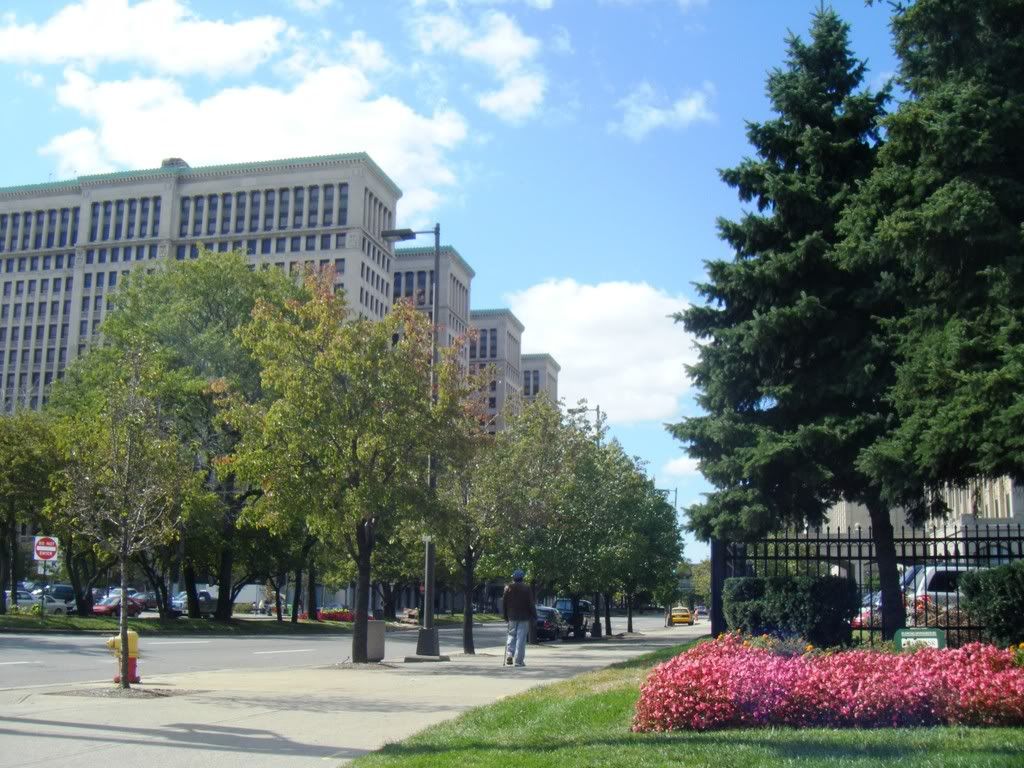


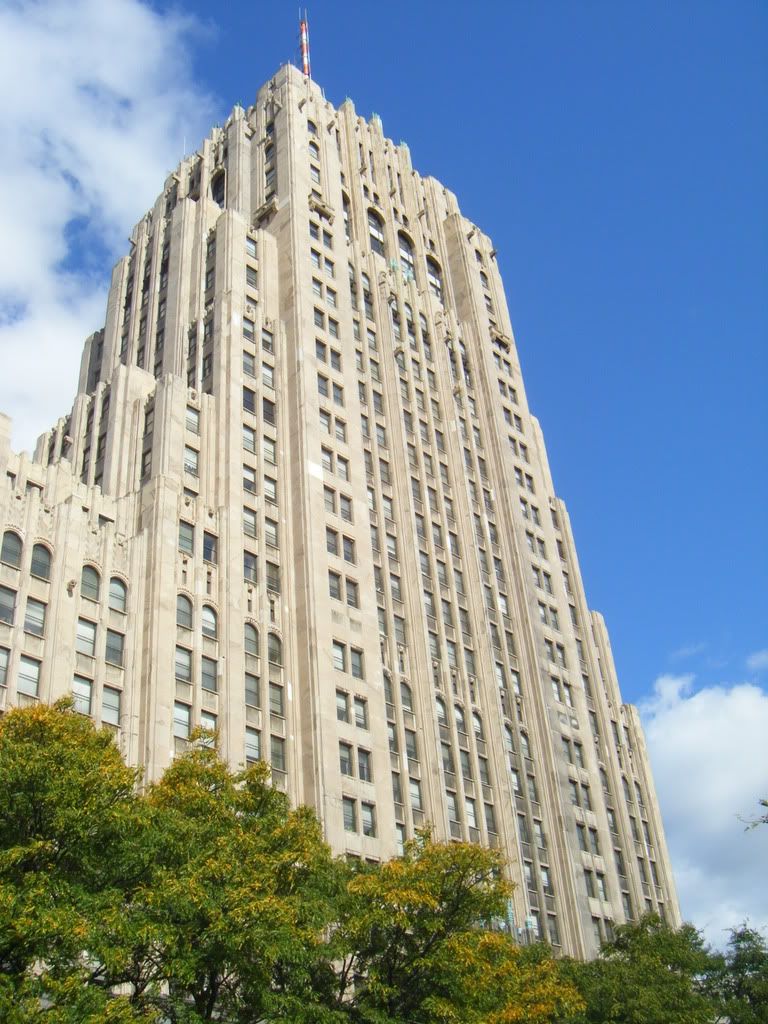


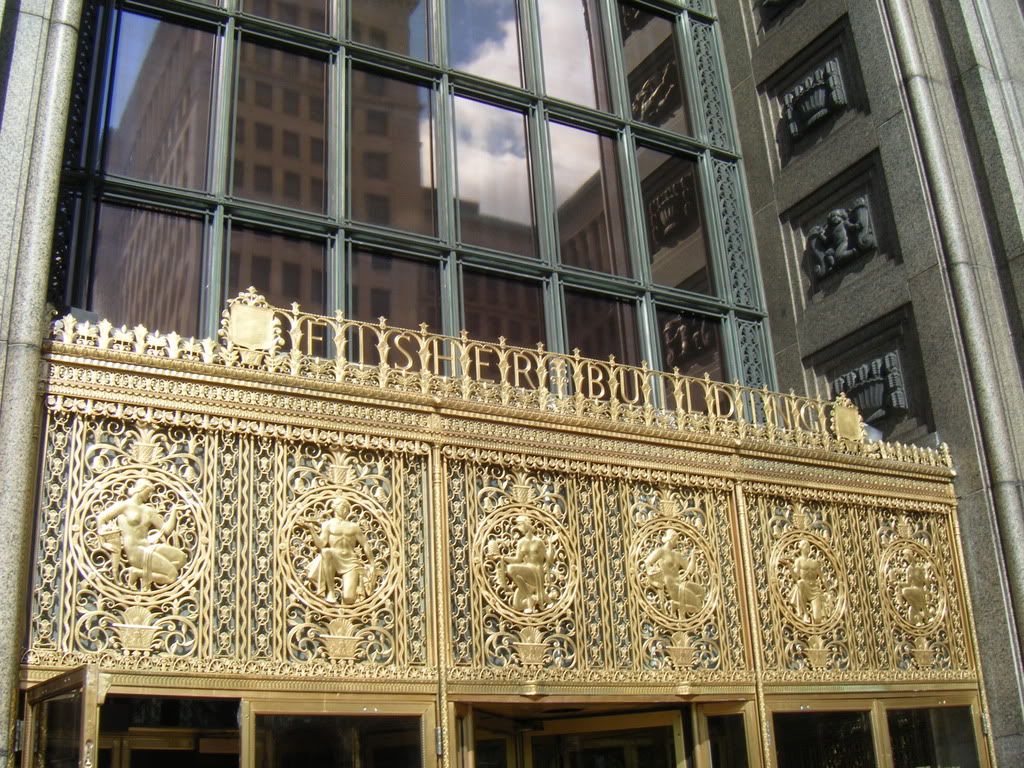

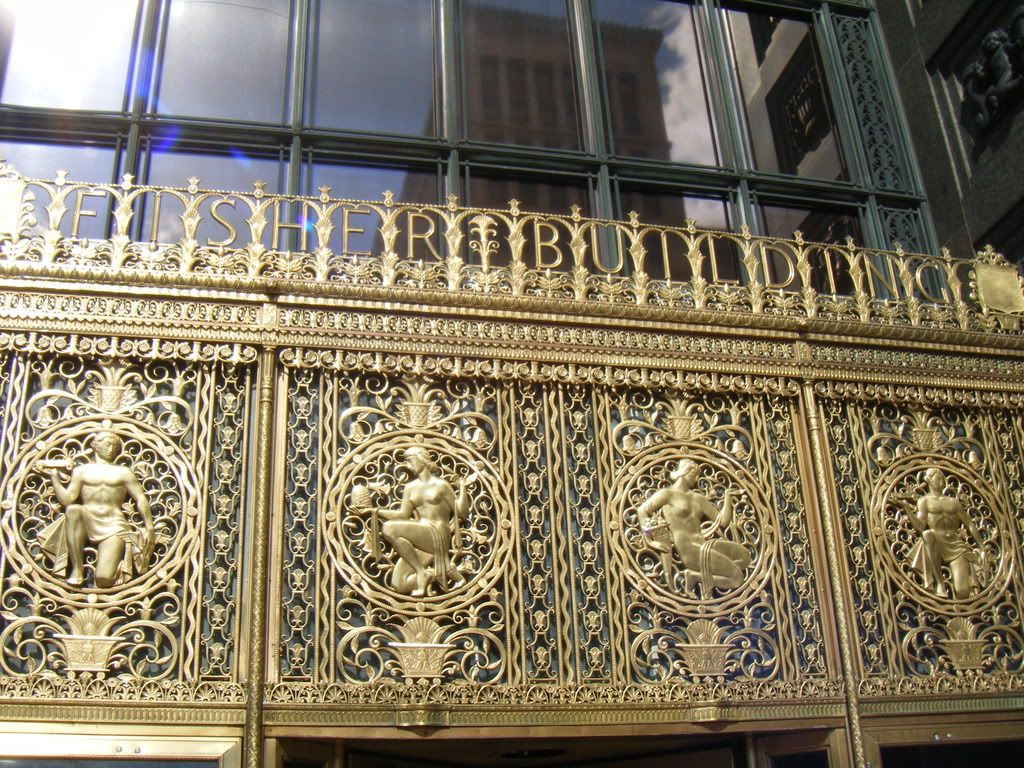
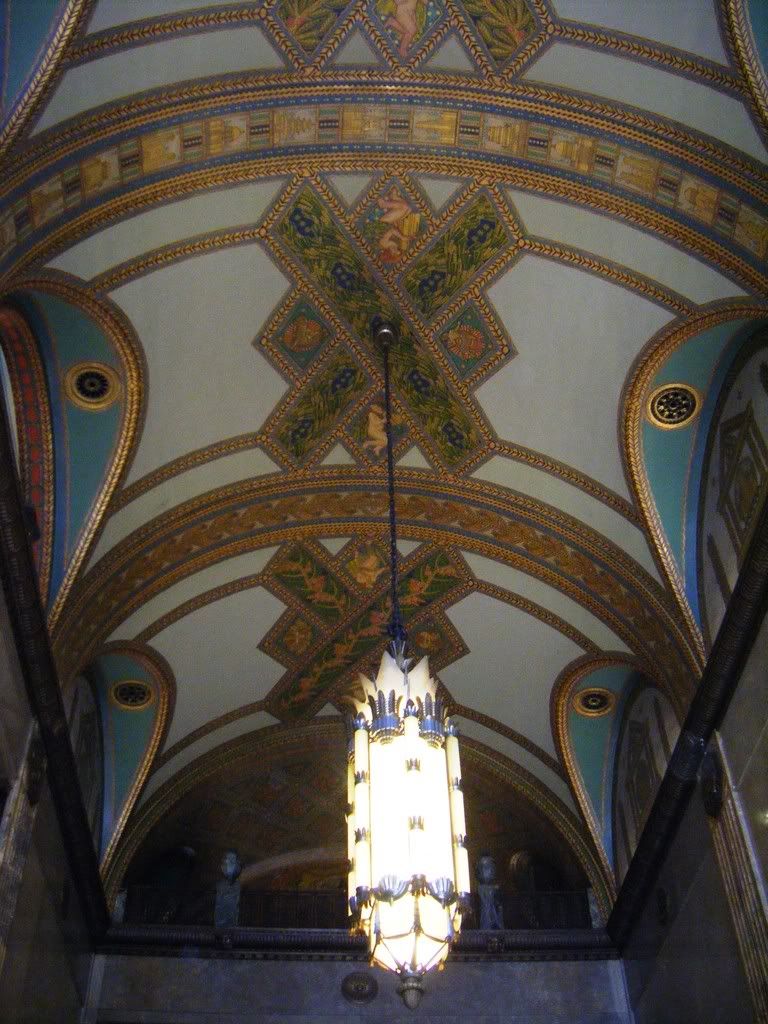



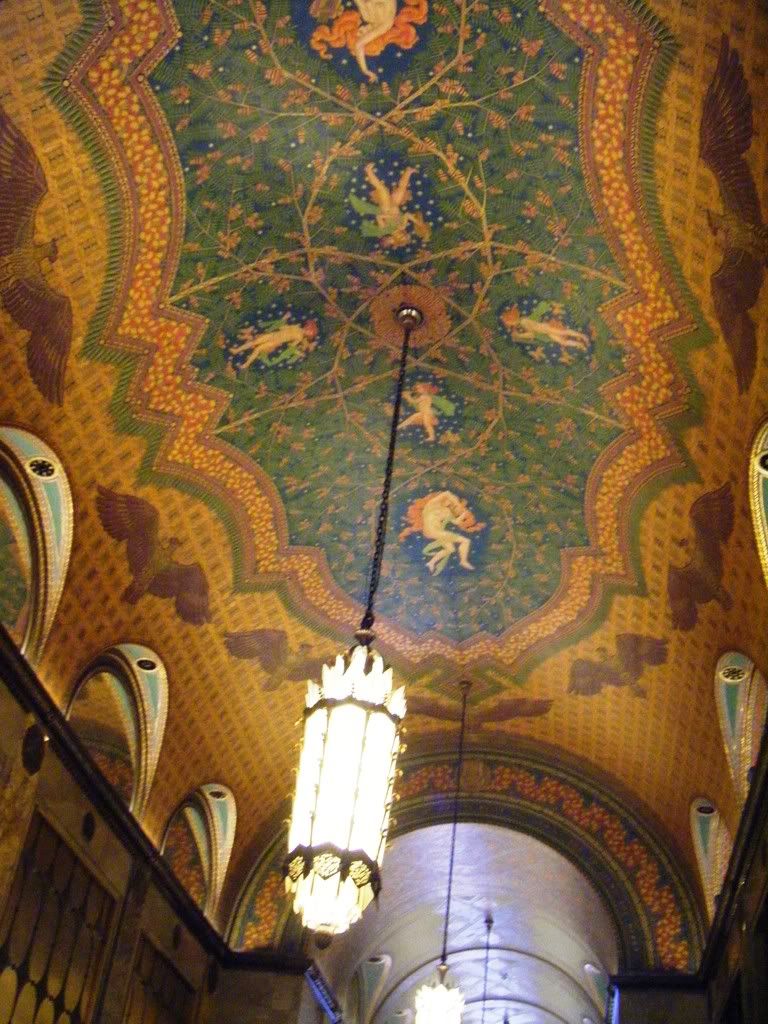


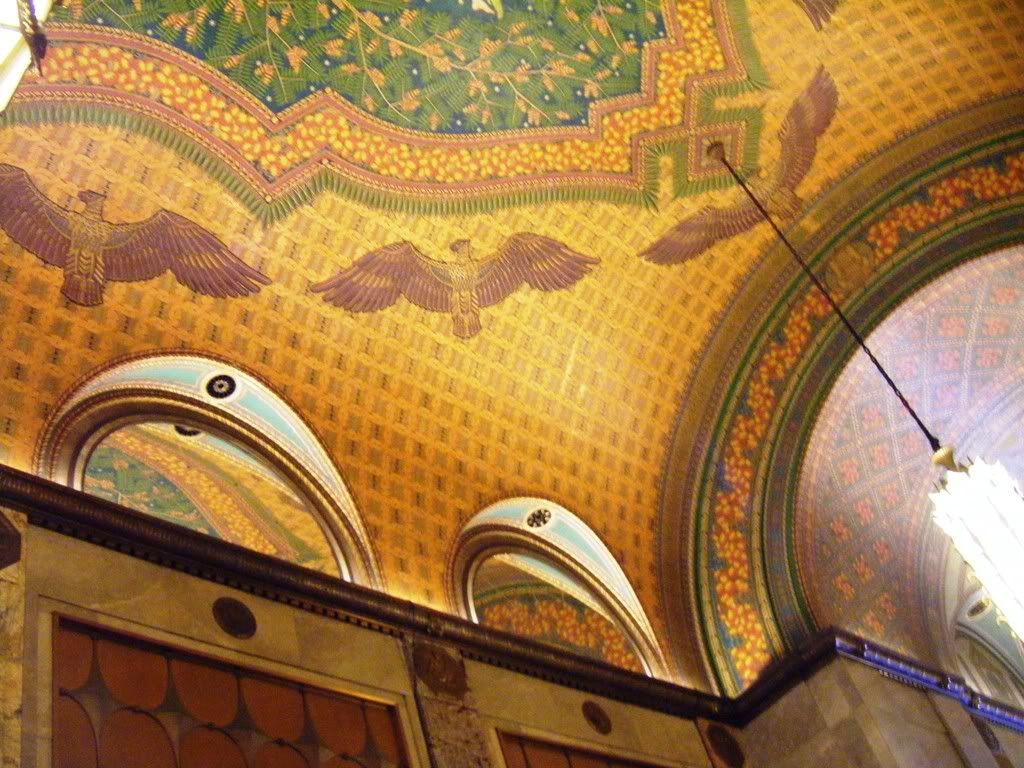


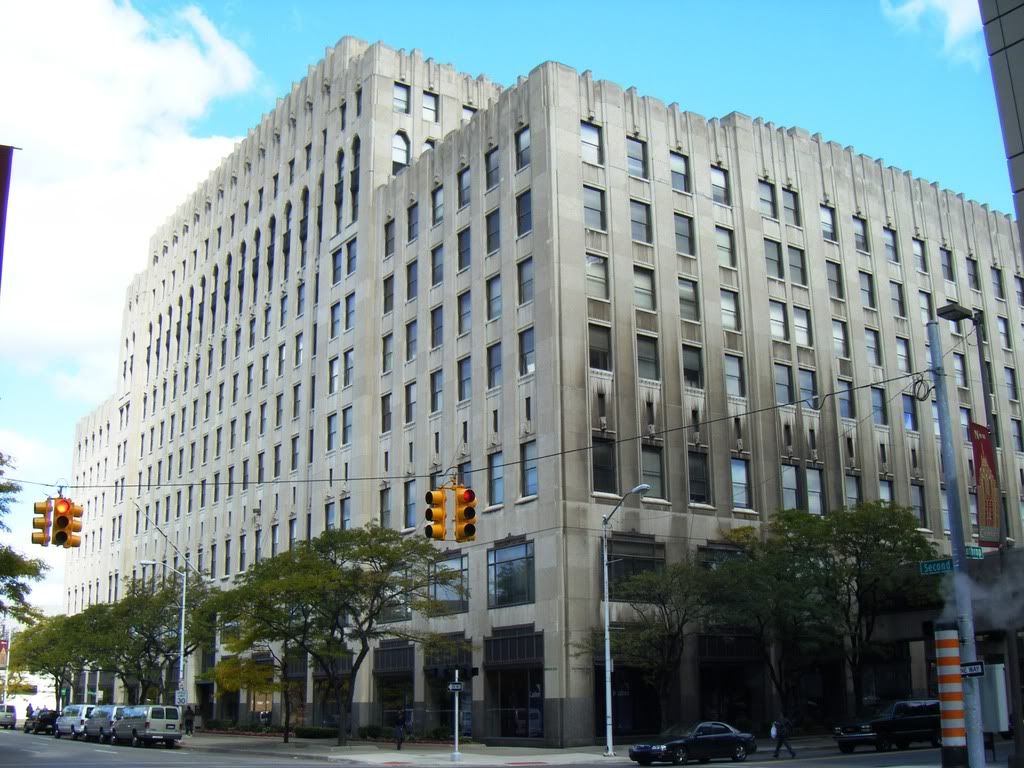

Woodward Avenue
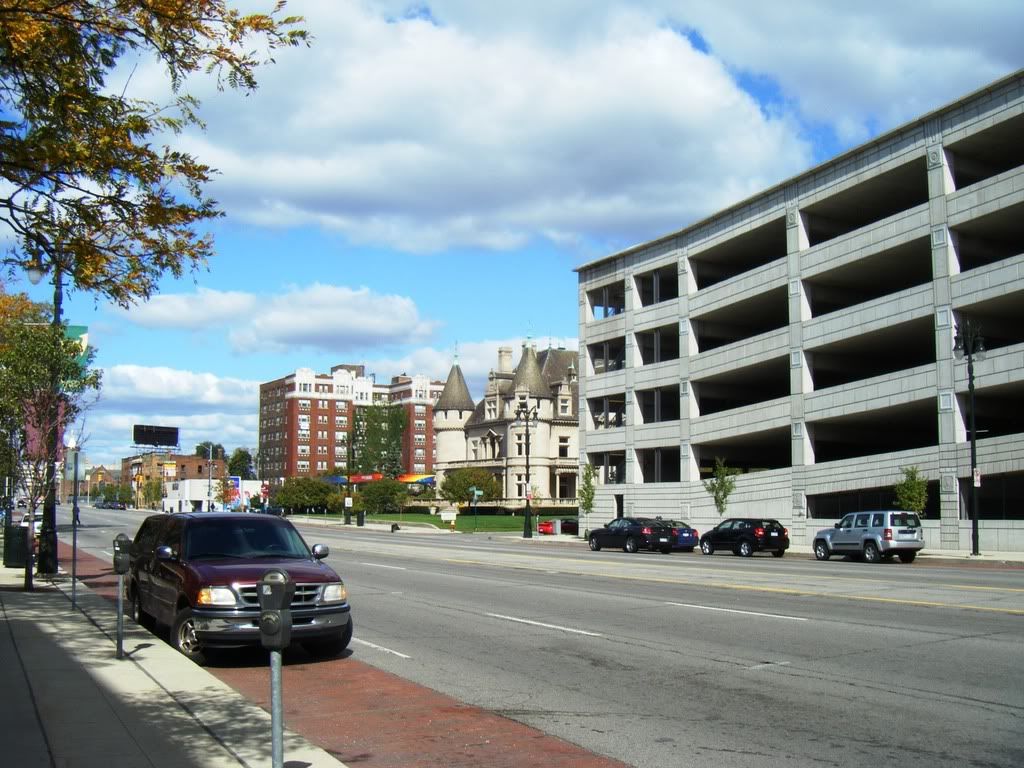

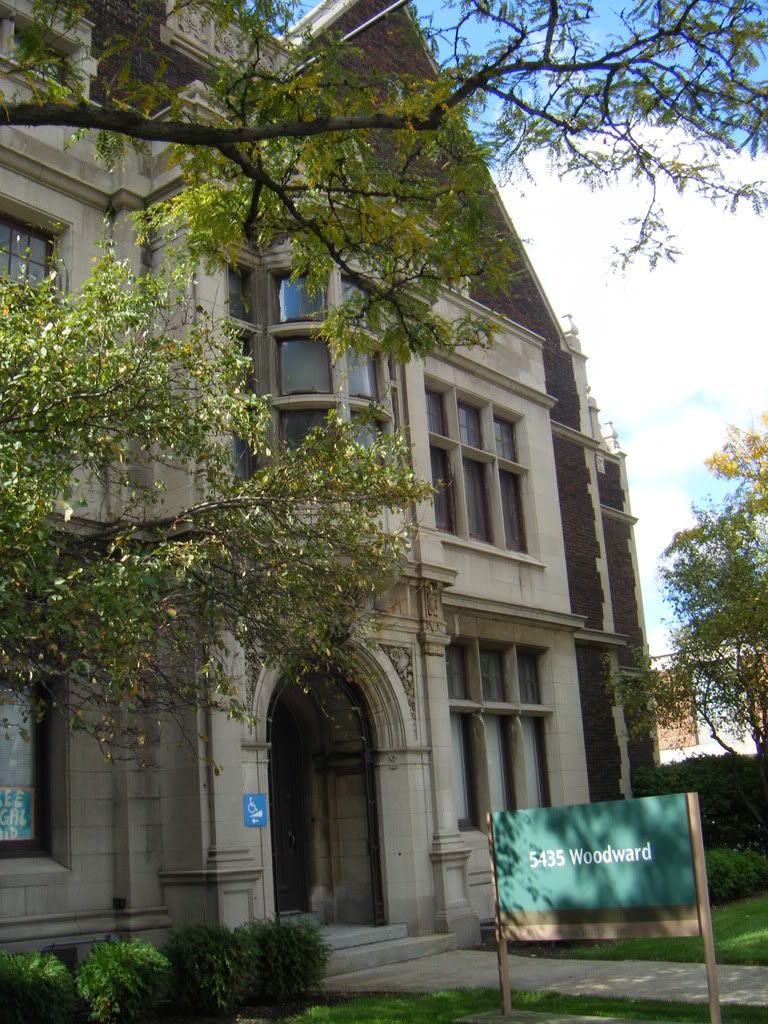




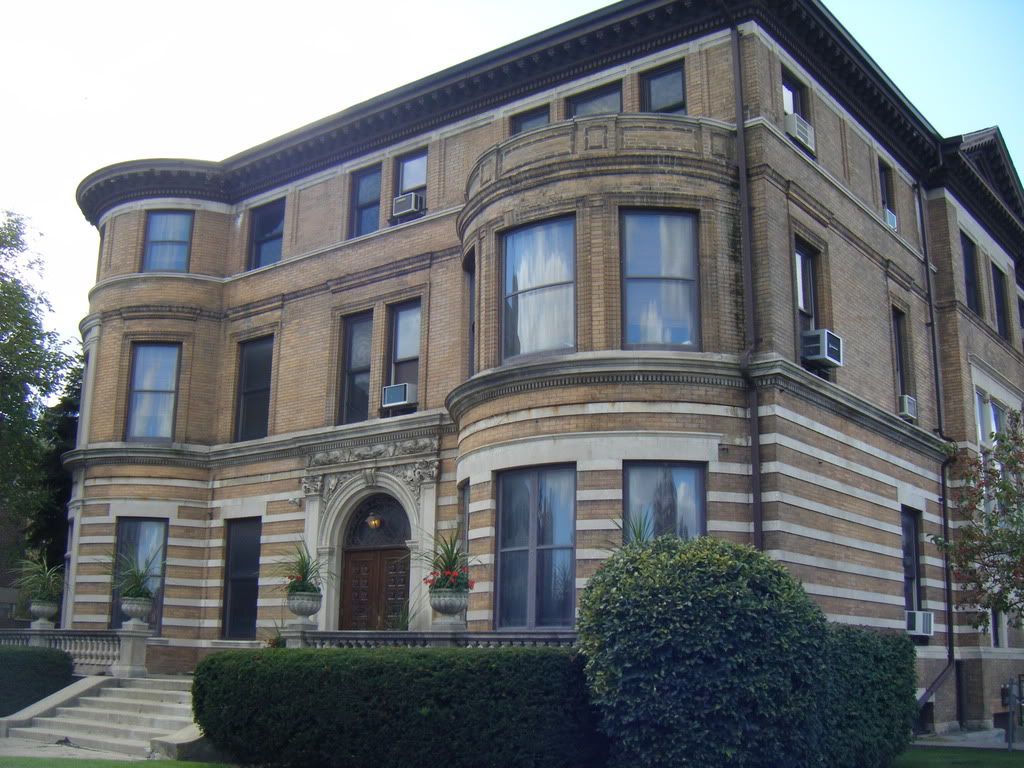
West Ferry Street.



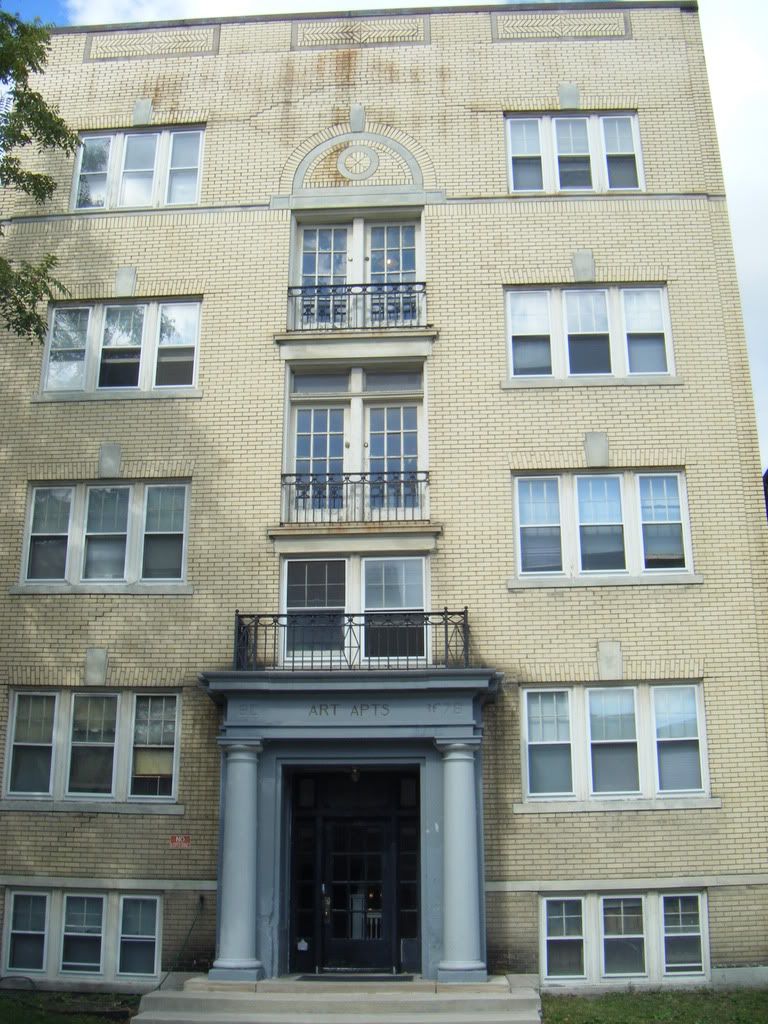
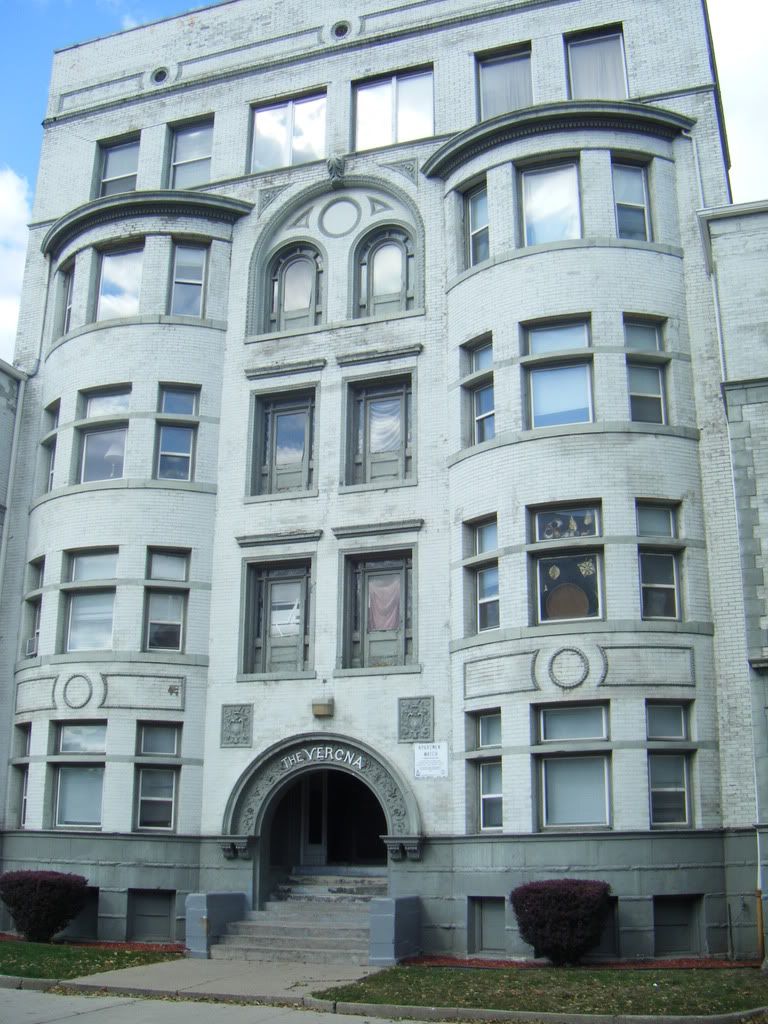
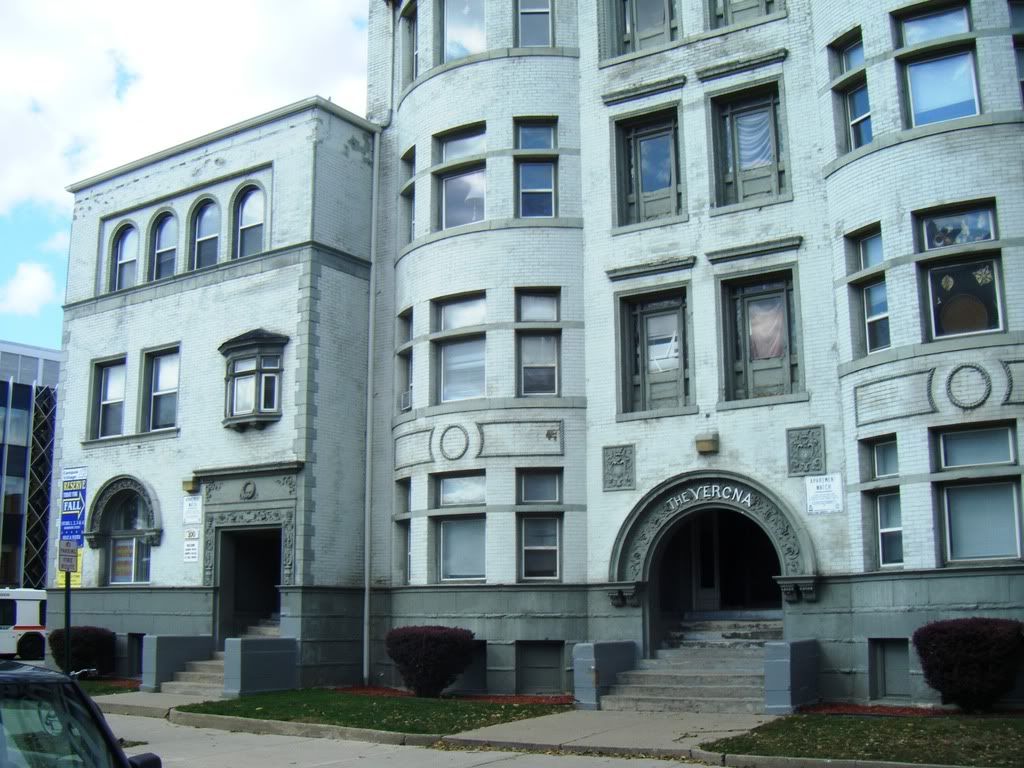
Back to Woodward Avenue





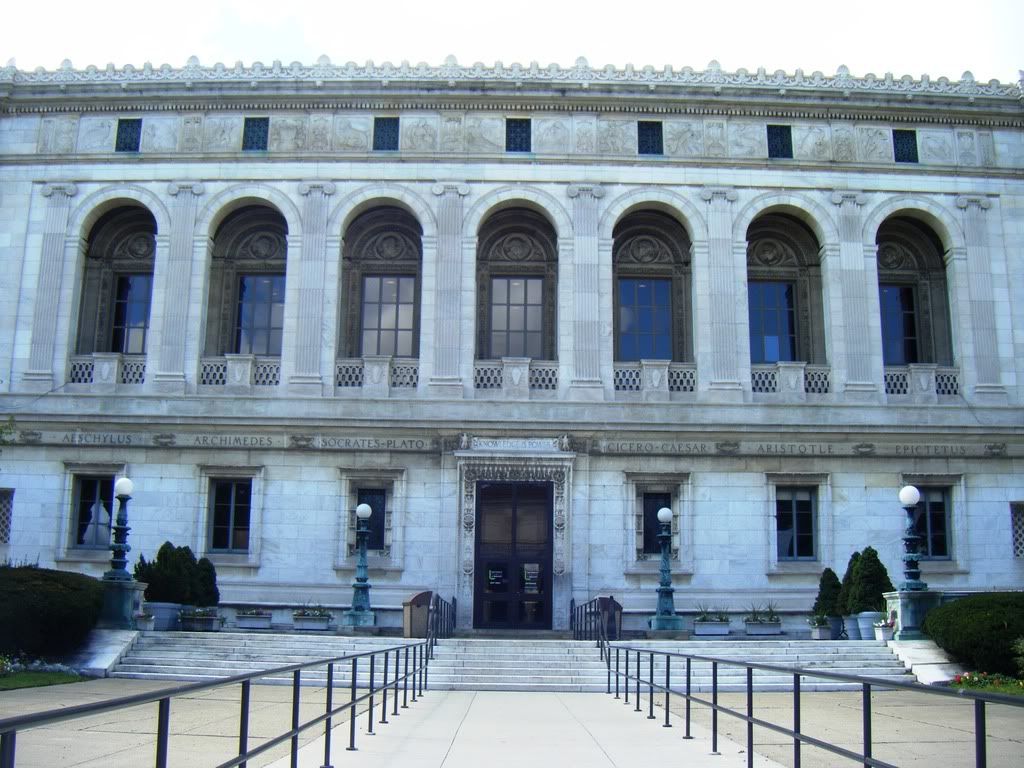

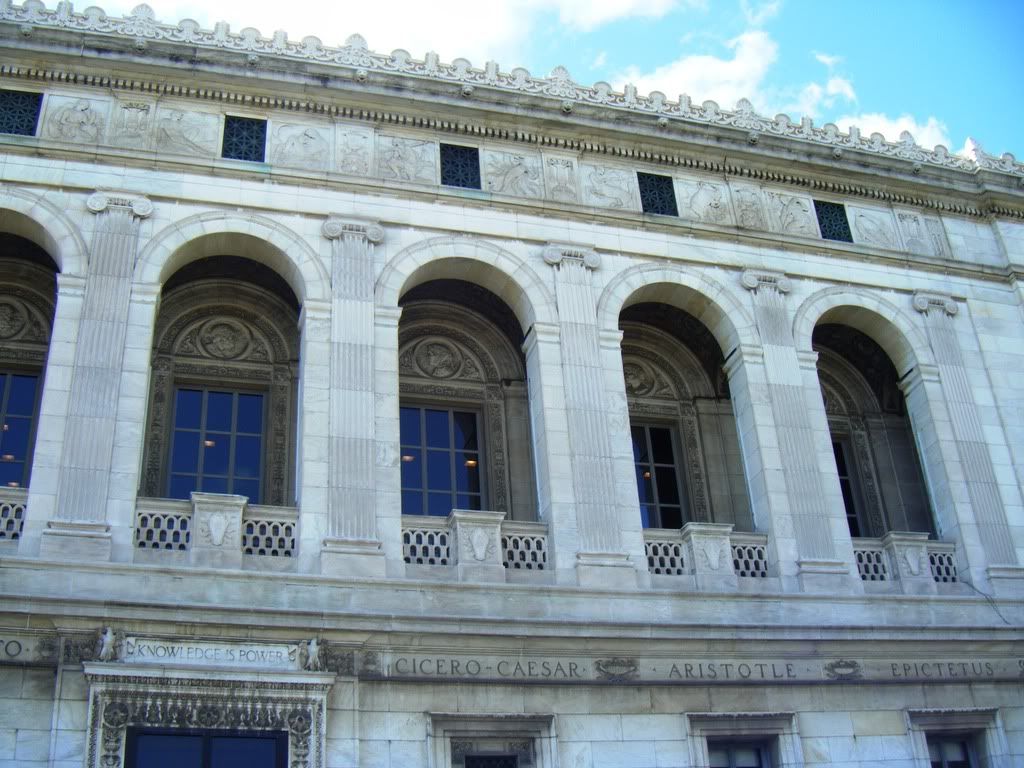

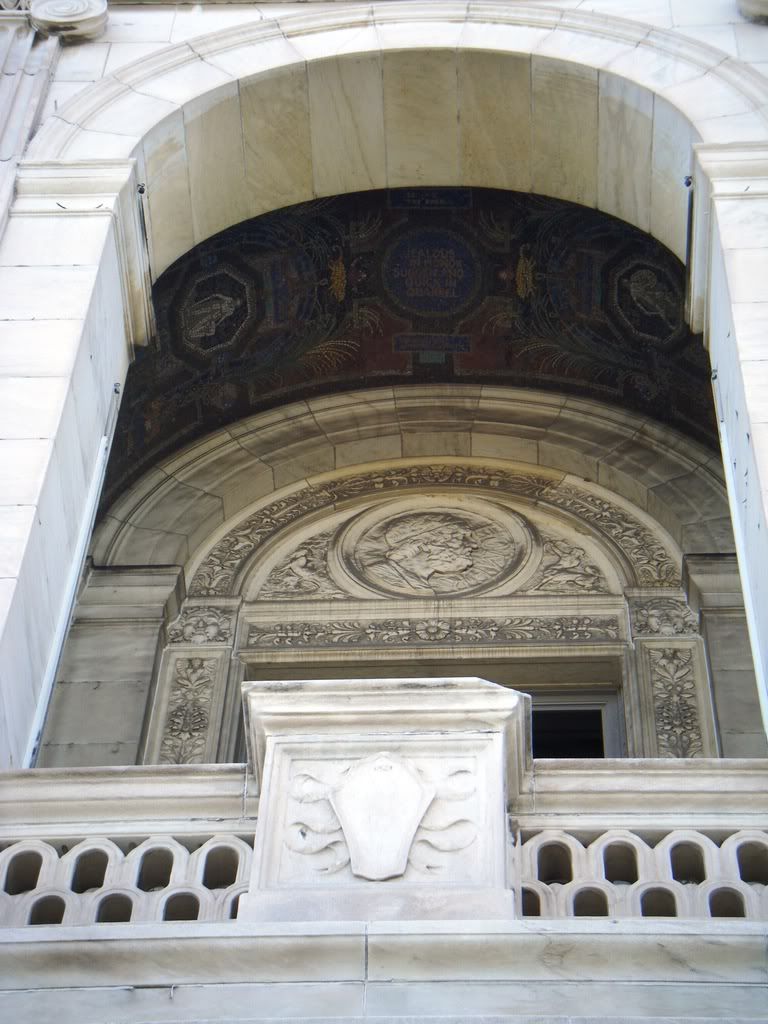
 Library
Library

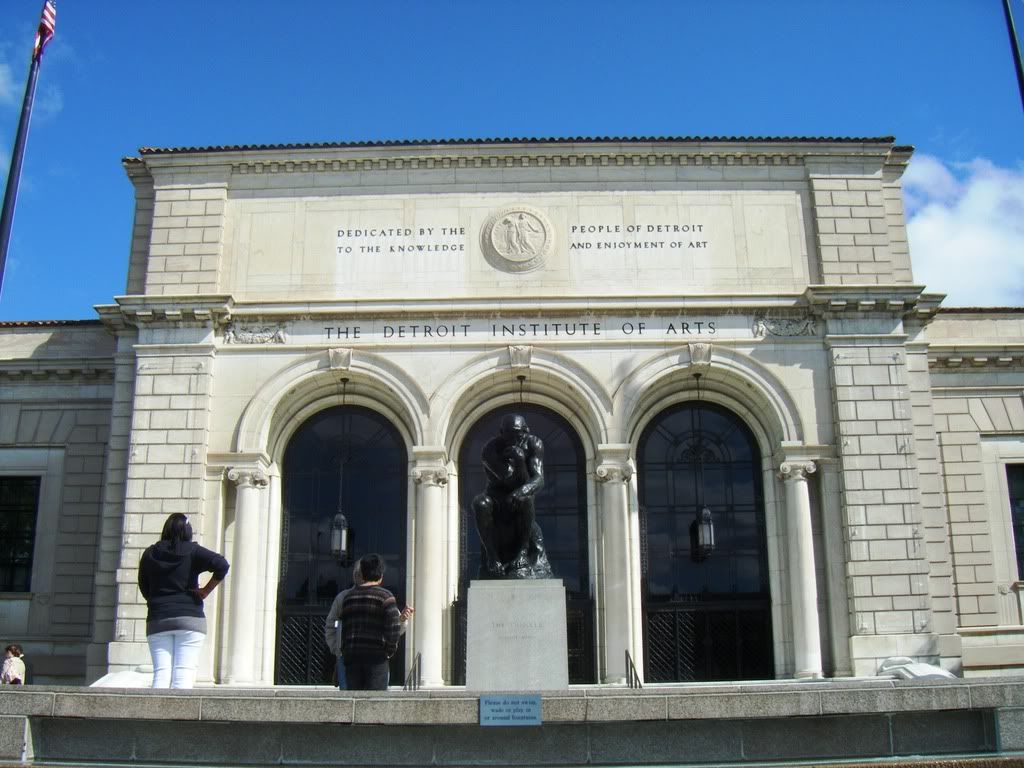

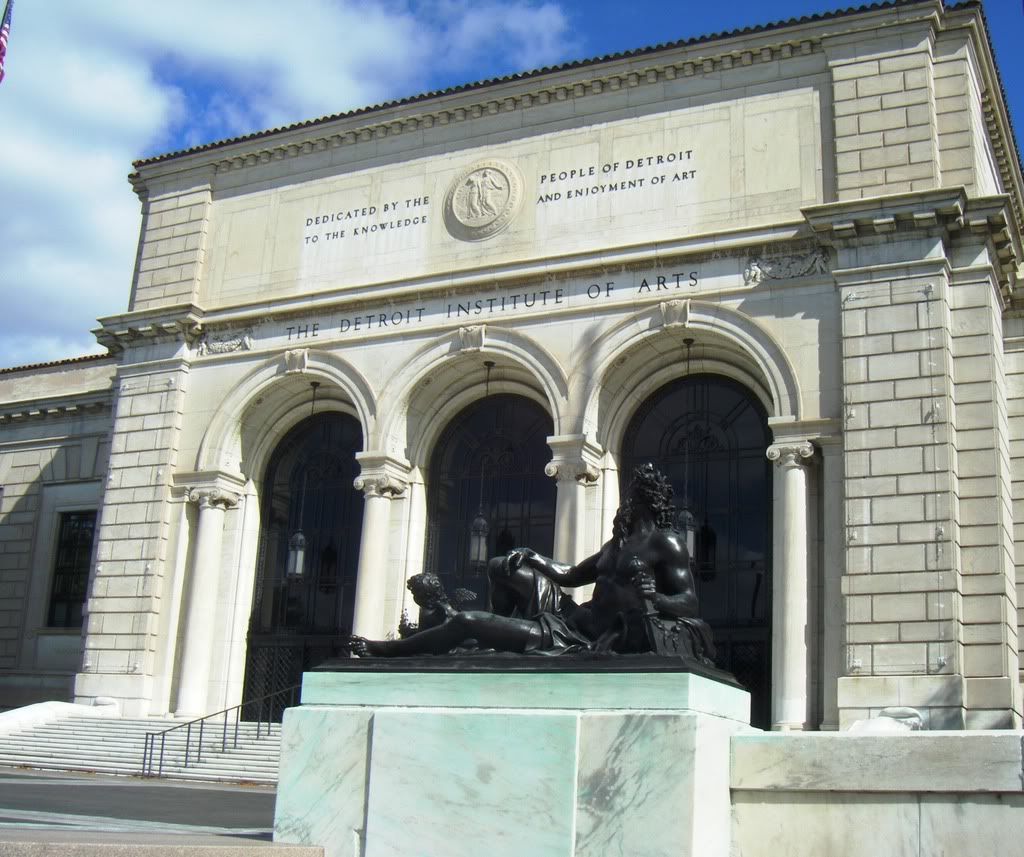
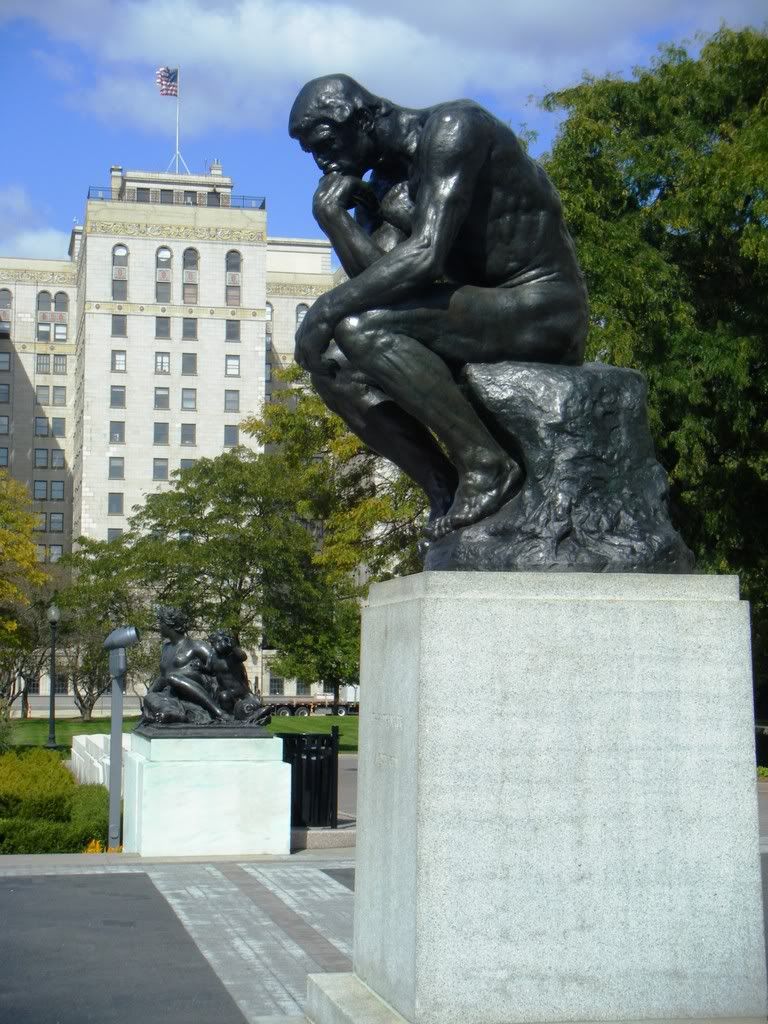
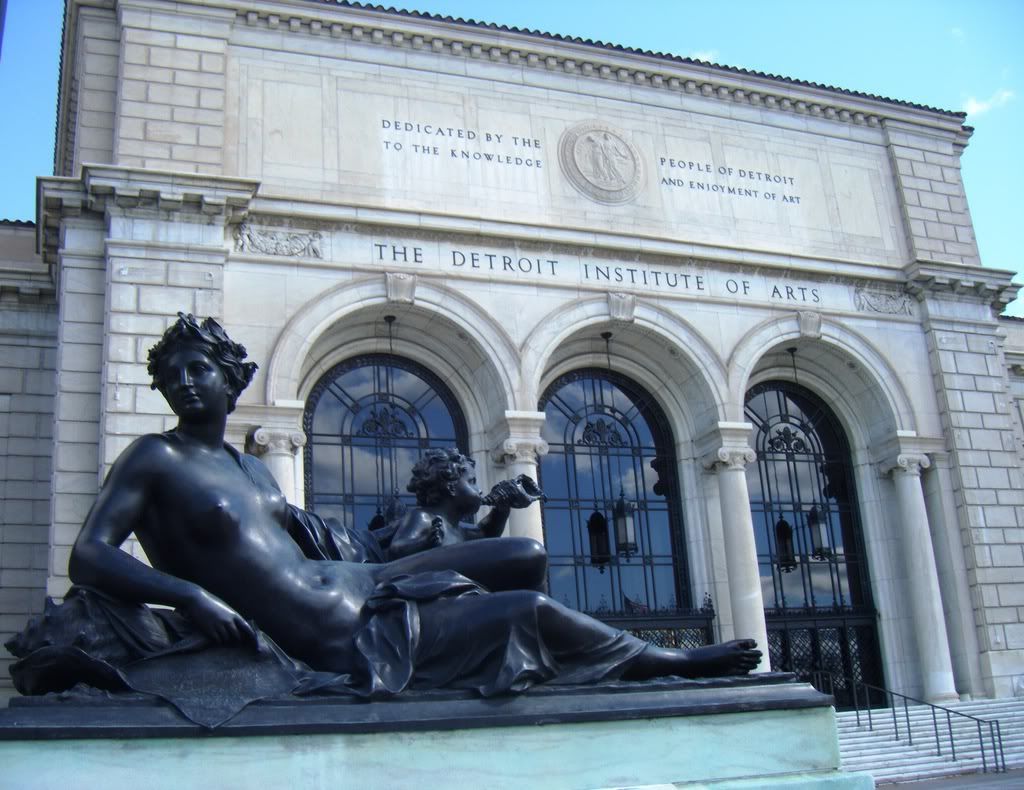
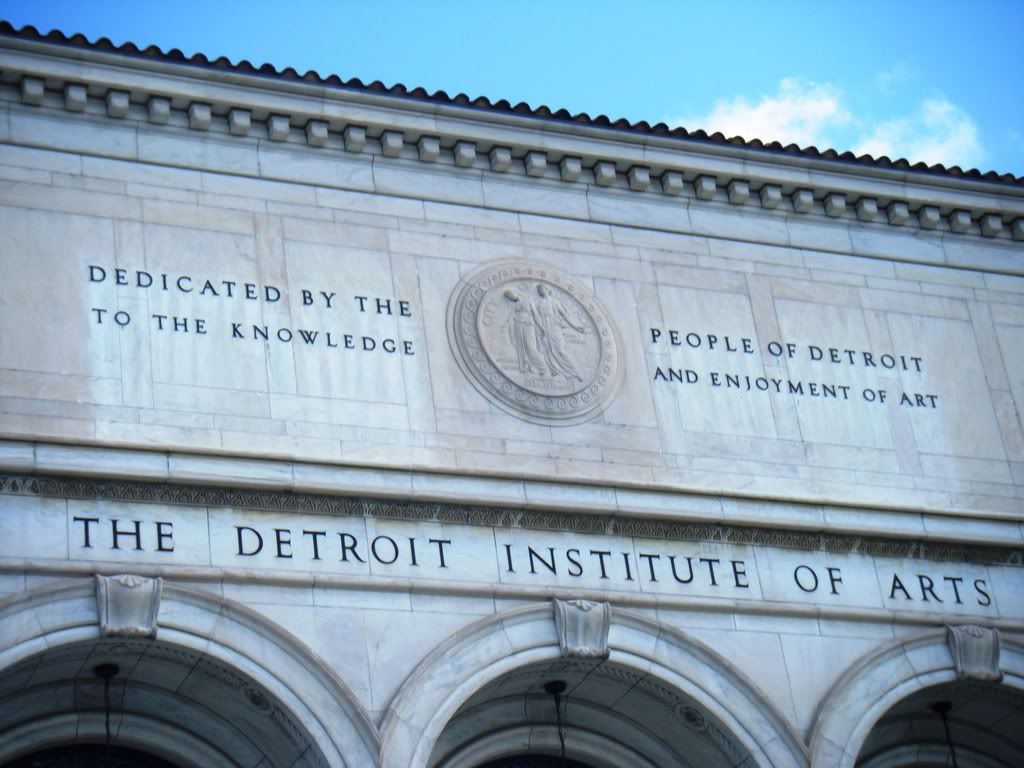
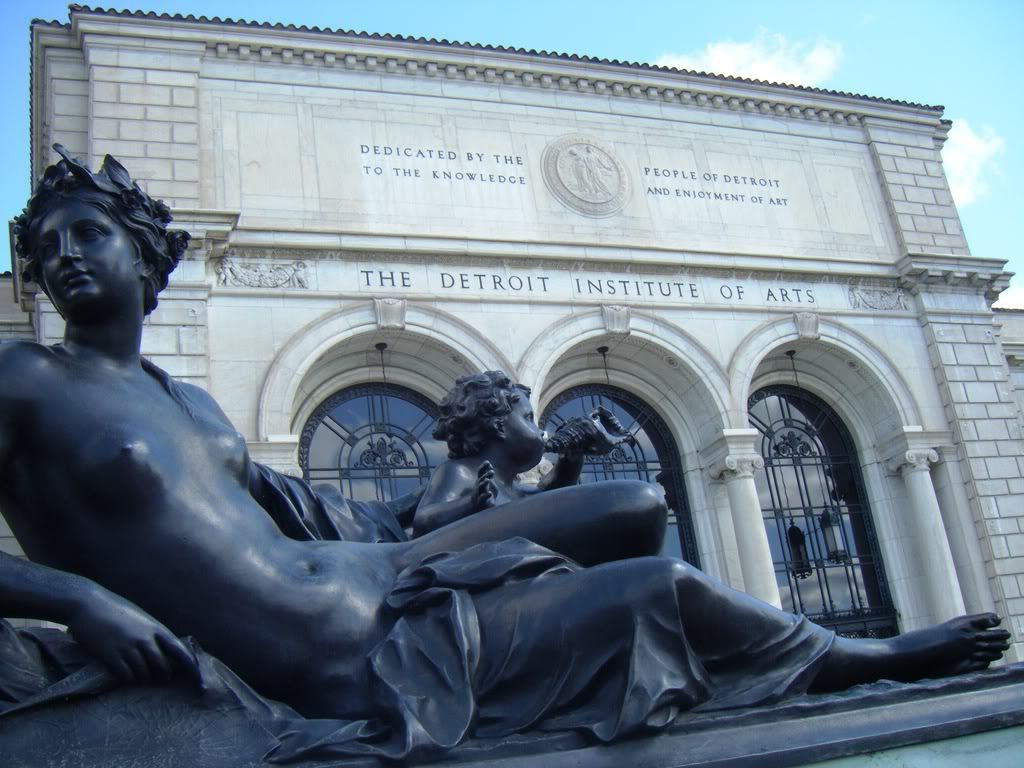

Belle Isle. Part One
Belle Isle is a 982 acre (3.9 km²; 1.53 mi²) island park in the Detroit River managed by the Detroit Recreation Department. It is connected to the rest of the city by the MacArthur Bridge. It is the largest island park in the United States and the third largest island in the Detroit River after Grosse Ile and Fighting Island.
It is home to the Anna Scripps Whitcomb Conservatory (1904), the Detroit Yacht Club, the Detroit Boat Club, James Scott Memorial Fountain, the Dossin Great Lakes Museum, a Coast Guard post, and a municipal golf course. The city maintains a Nature Center where visitors are able to traverse wooded trails and view wildlife natural habitats. The island includes a half-mile (800 m) swimming beach.
History
The island was settled by French colonists in the 18th century, who named it Île aux Cochons (Hog Island). The Island was once the estate of General Alexander Macomb, Jr., whose monument stands in the Washington Boulevard Historic District. In 1845 it was given its present name.
A design for the island was created in the 1880s by Frederick Law Olmsted, a prominent urban park designer; only some elements of his design were carried out. The 1908 Belle Isle Casino building is not an actual gambling facility but rather, is used for occasional public events. A highlight of Belle Isle is a beautiful botanical garden and the Anna Scripps Whitcomb Conservatory (1904). Both the conservatory and the adjacent aquarium were designed by Detroit architect Albert Kahn, who designed city landmarks such as Cadillac Place and the Ford Rouge Factory.
Interior waterways in the park as they appeared soon after the park's creationThe island park served as a staging ground by the U.S. military during World War II for a re-enactment of a Pacific island invasion by the Navy and Marine Corps. The island was temporarily renamed Bella Jima, and Detroiters were treated to the sight of an island invasion without the bloodshed. It was conducted after the invasion of Iwo Jima.
Architect Cass Gilbert designed Belle Isle's James Scott Memorial Fountain. Gilbert's other works include the U. S. Supreme Court building in Washington, DC. William Livingstone Memorial Light, the only marble lighthouse in the United States, is on the east end of the island, with sumptuous materials and architecture. Additional recreational options include a nature center, wheelchair accessible nature trail, fishing piers, playgrounds, picnic shelters, and handball, tennis and basketball courts, baseball fields, and even a cricket pitch.
There was a canoe concession (which provided rental canoes and stored private ones) and a band shell, and canoe riders often stopped nearby to enjoy the concert. Concerts occurred at the band shell from 1950 to 1980. The Detroit Boat Club moved to the island in 1902 but the marina and building is currently closed and only rowing activities still occur at that location. The Belle Isle Golf Course opened in 1922. The Detroit Yacht Club building dates to 1923 and still houses an active private sailing club. The Scott Fountain was finished in 1925. The Activities Building was the site of a restaurant. The Flynn Pavilion (1949) was designed by Eero Saarinen and used for ice skating rental. A ferry service to the island existed from 1840-1957, although the bridge was completed to the island in 1923. Riding stables were housed in a 1863 market building that was relocated from Detroit to the island in the 1890s. The building was disassembled and stored by Greenfield Village in the 2000s. The park headquarters and police station are each located in 1860s houses.
The island was home to a large herd of European fallow deer for more than 50 years. However, this isolated population fell prey to disease at the close of the 20th century. The children's zoo on the island and the aquarium closed due to budget constraints. In 2004, the last of the 300 animals were captured and moved to the zoo and nature center properties.
Detroit Indy Grand Prix
In 1992, a temporary street race circuit was constructed on the isle for CART races. The island hosted ten events at Belle Isle from 1992–2001, and racing resumed in 2007 as part of the IndyCar Series and ALMS.
http://en.wikipedia.org/wiki/Belle_Isle_Park

 James Scott Fountain
James Scott Fountain
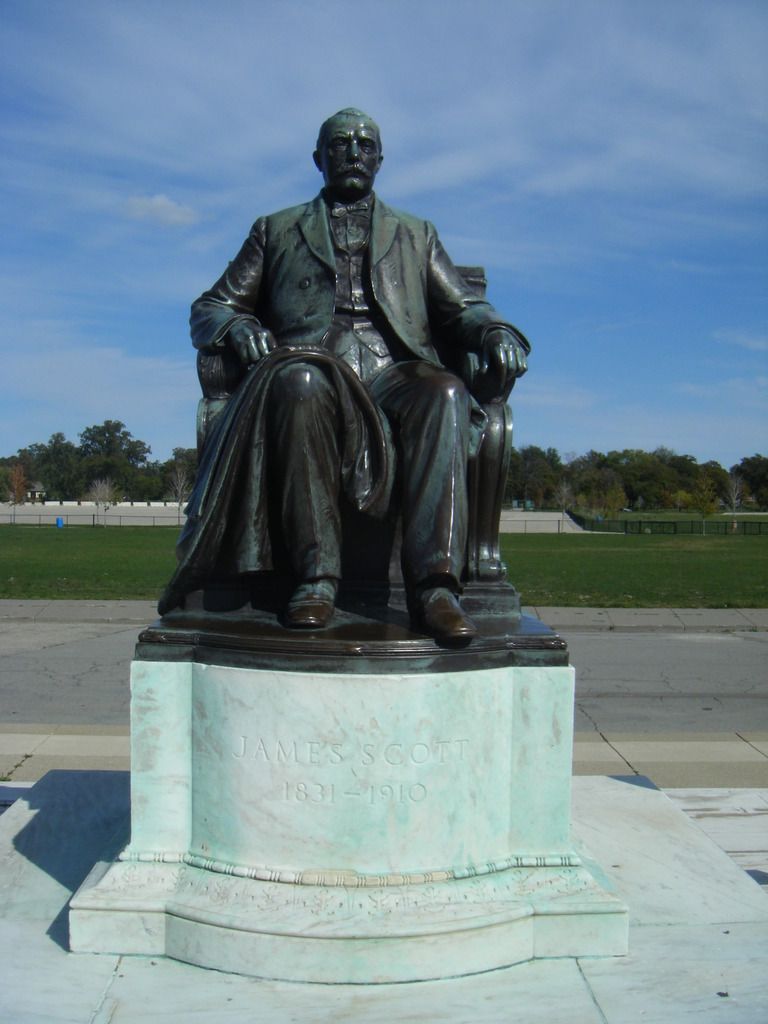
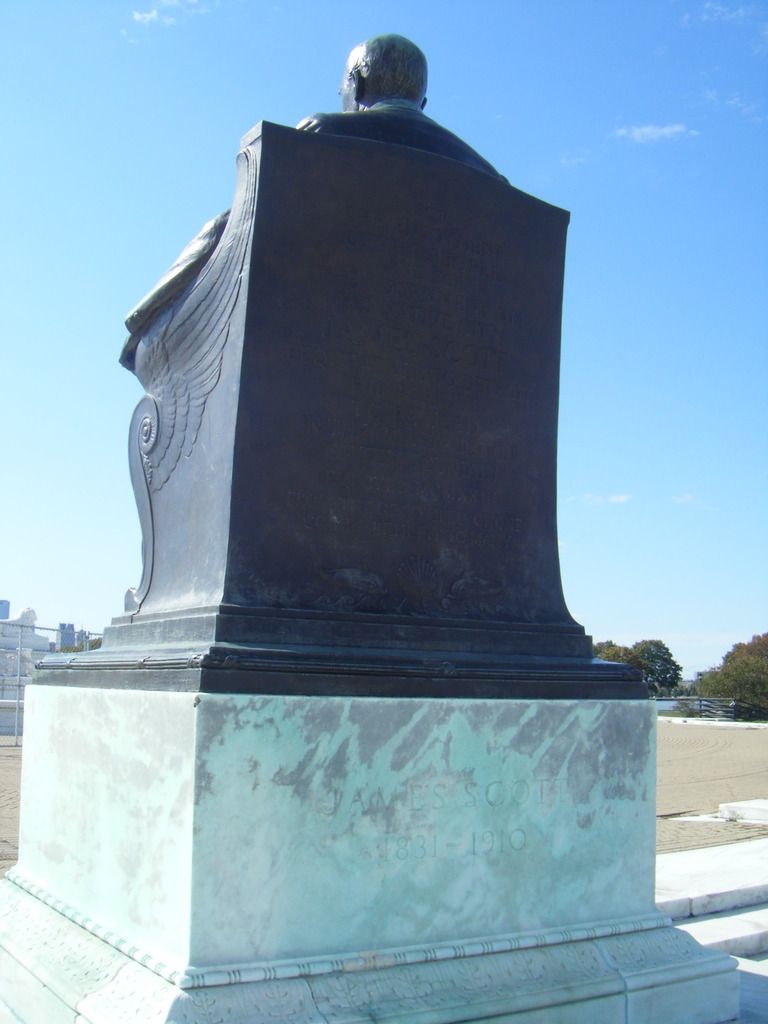
 James Scott
James Scott

Detroit Boat Club

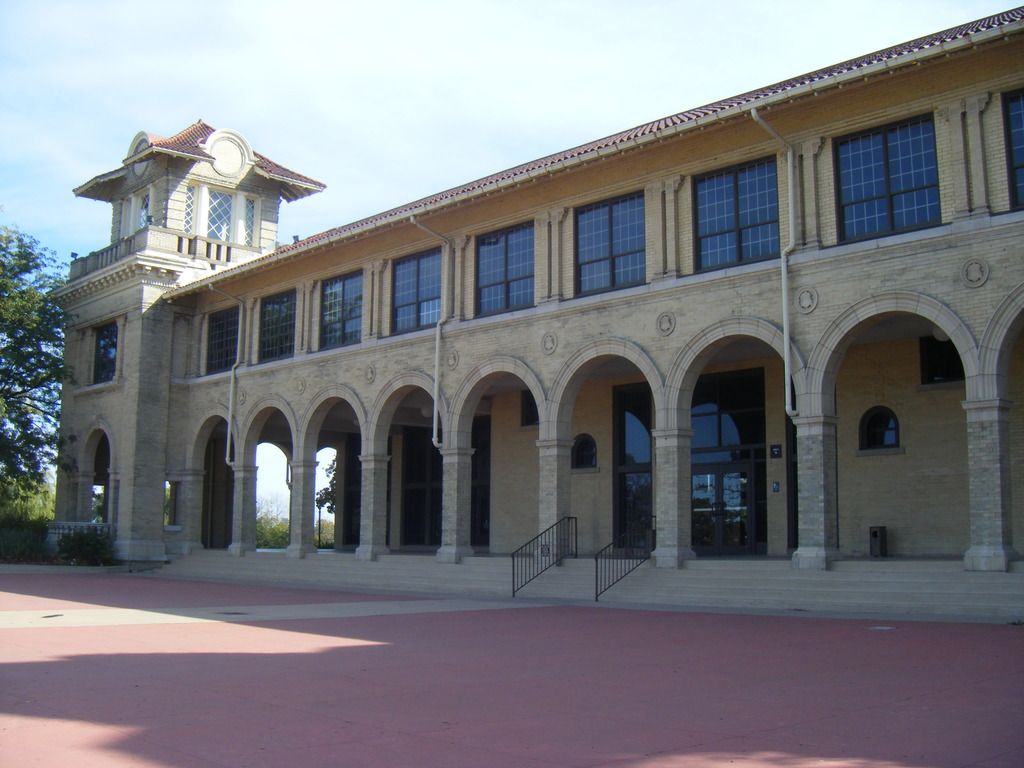



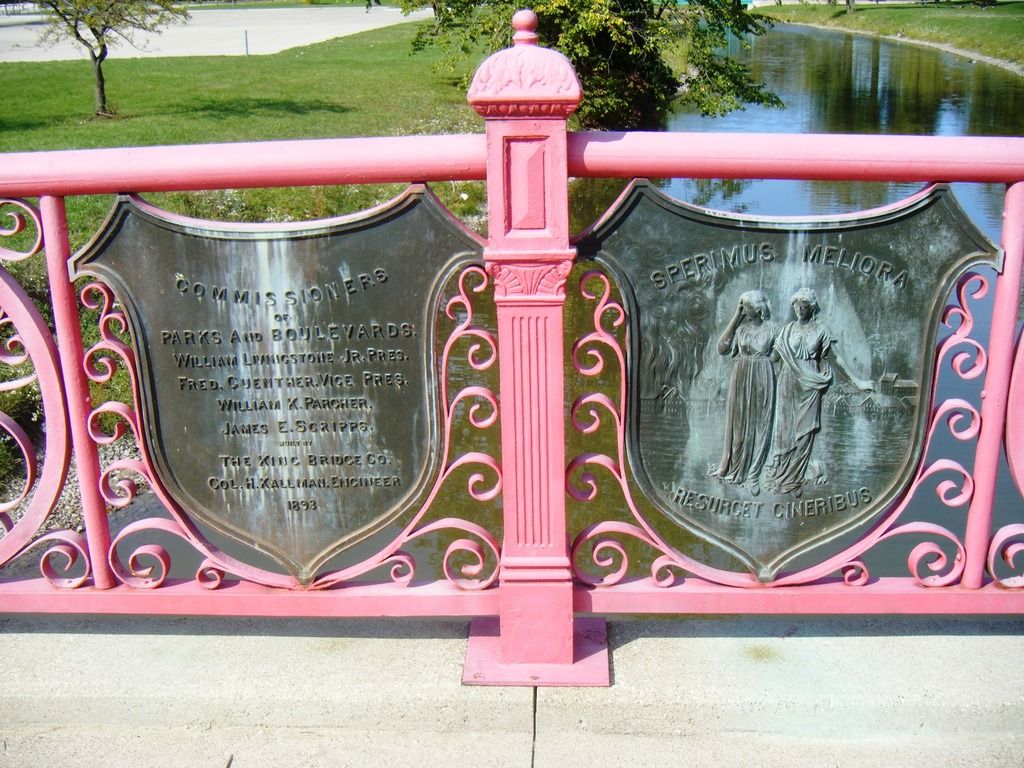
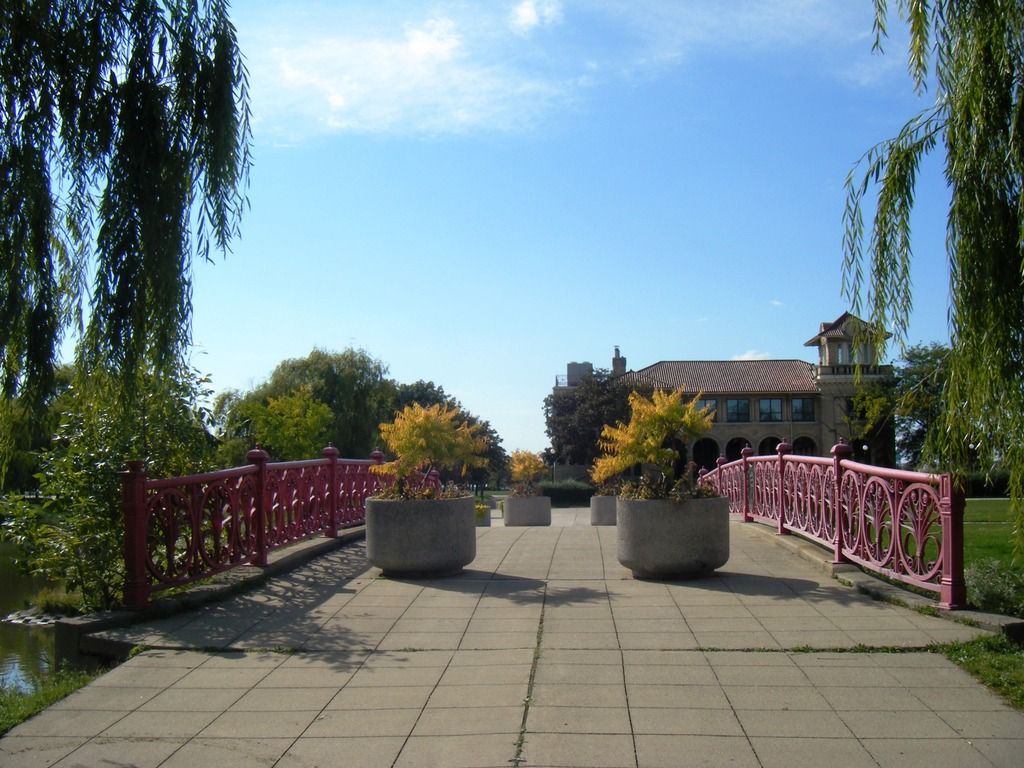
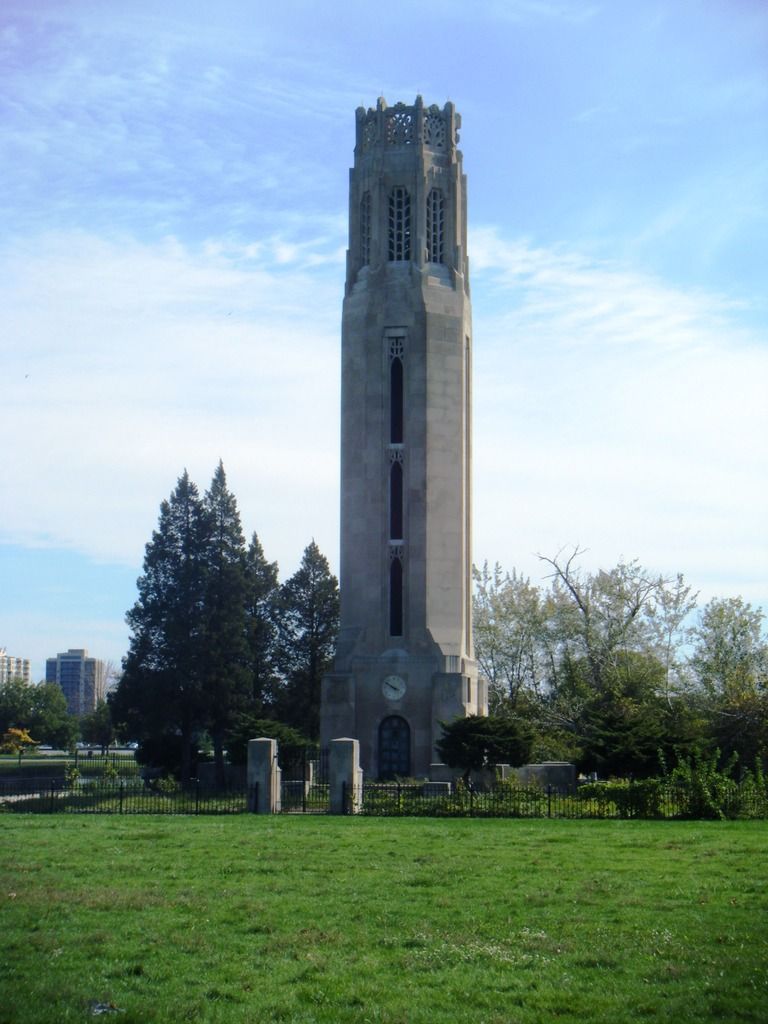
Poor Mr. Scott, I'm sure he'd roll over in his grave if he know what had become of his beautiful home!
Peterboro Street.
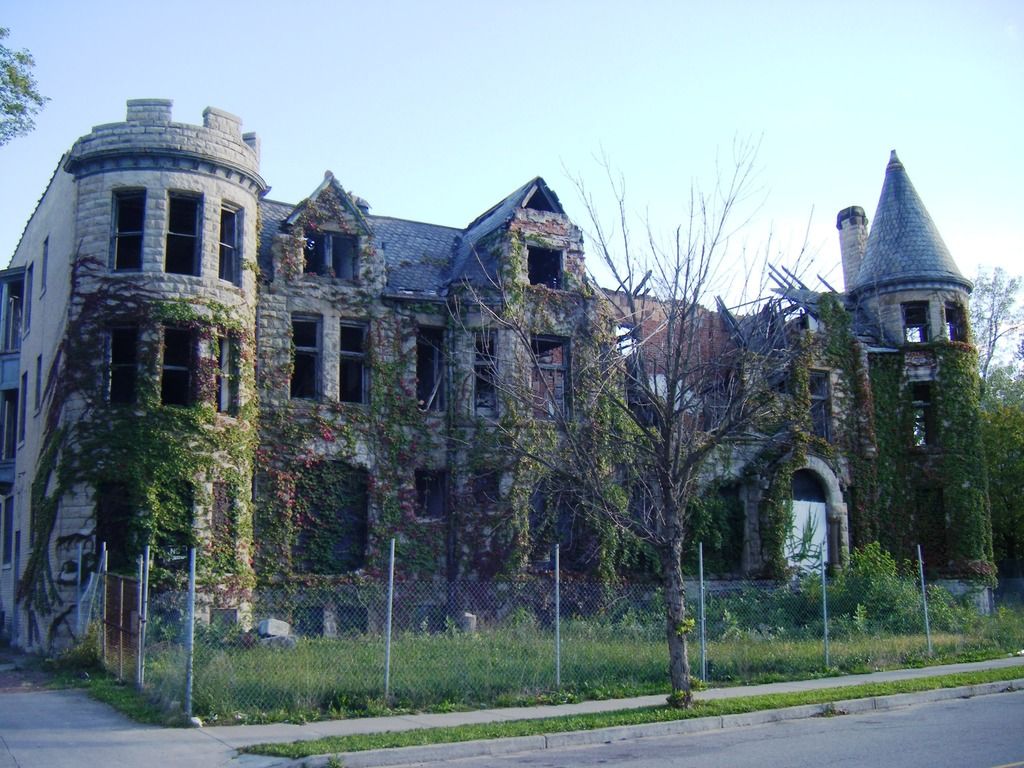
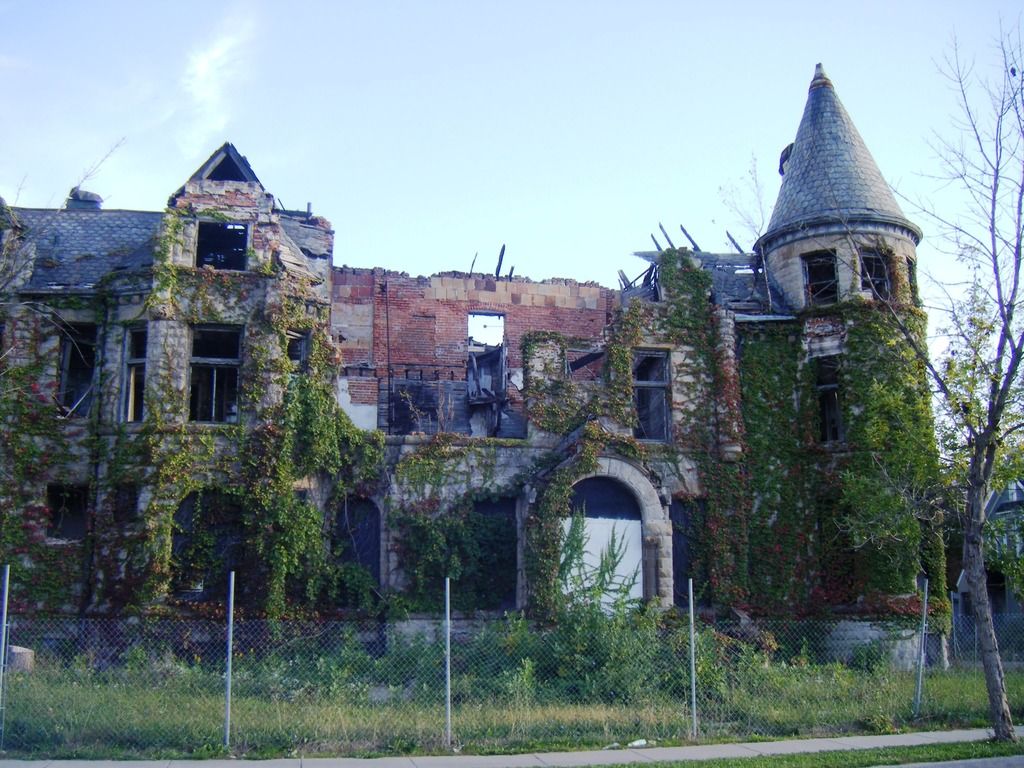
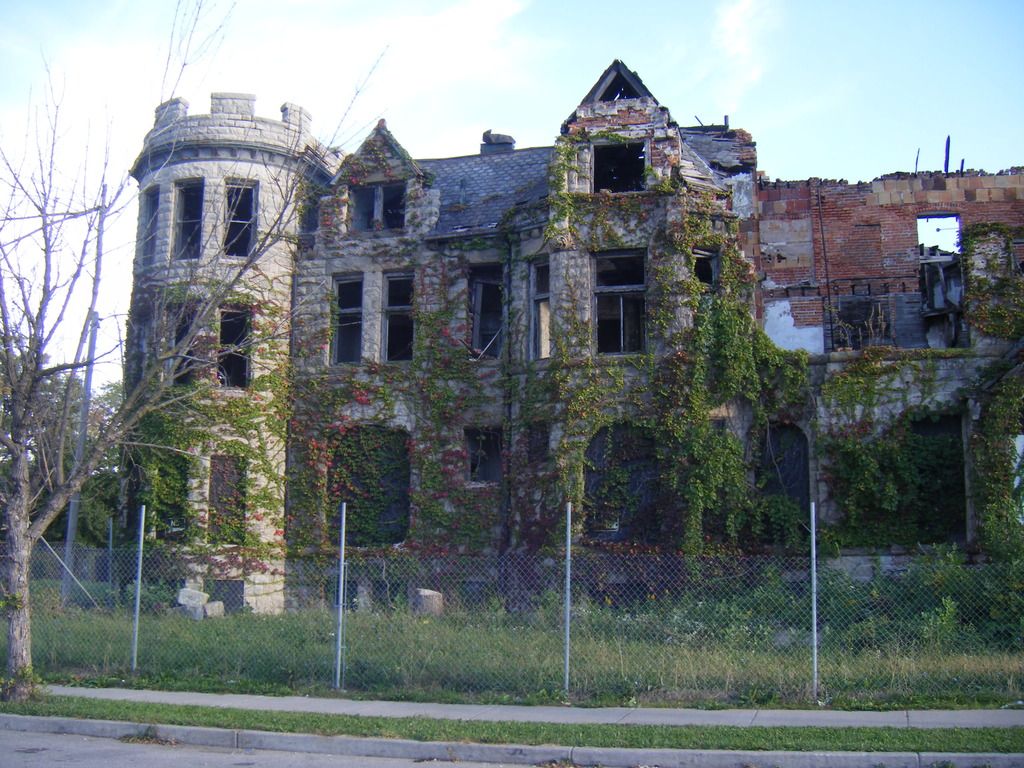
More Downtown.
We begin back at Cadillac Square.
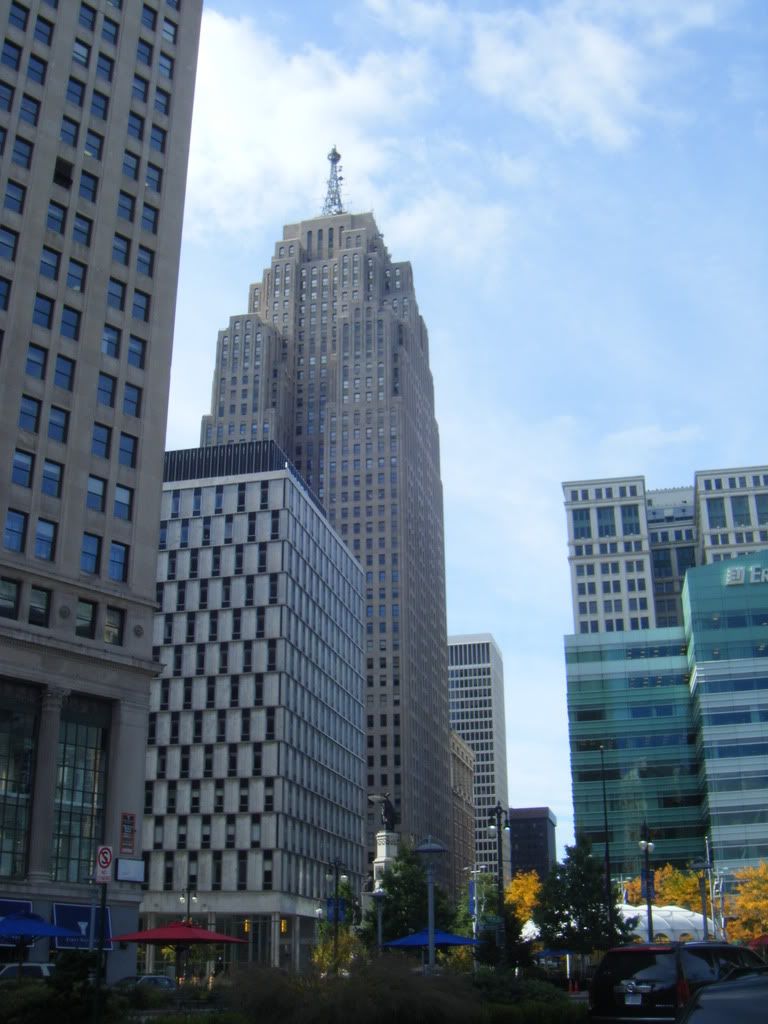
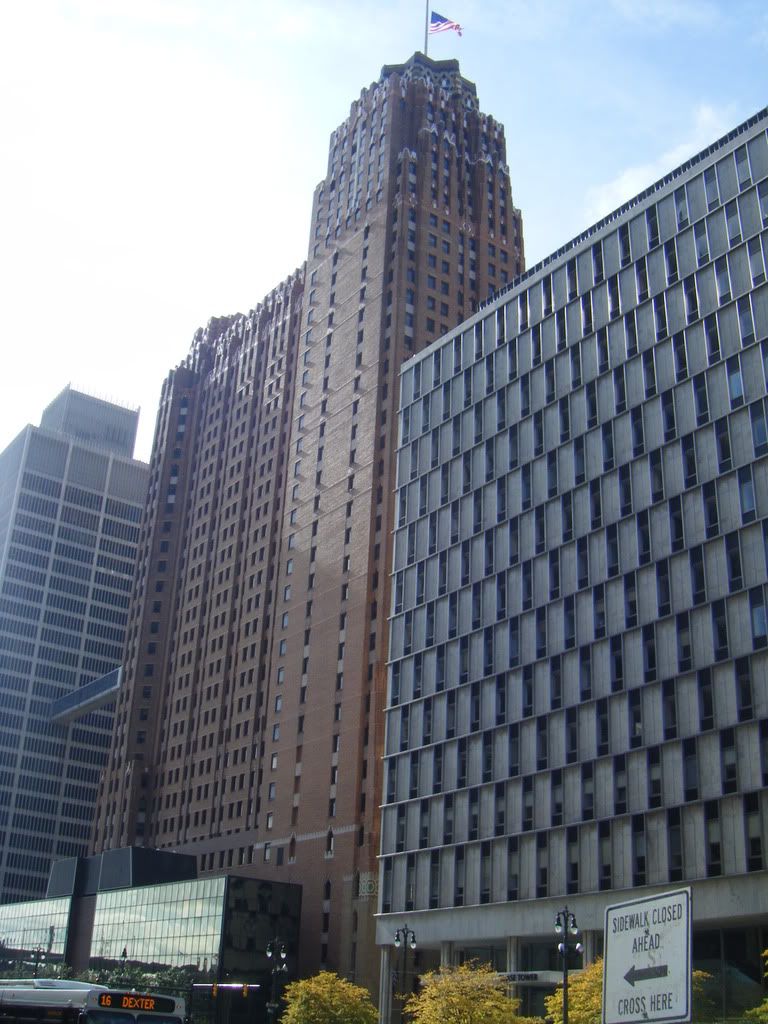
Campus Martius




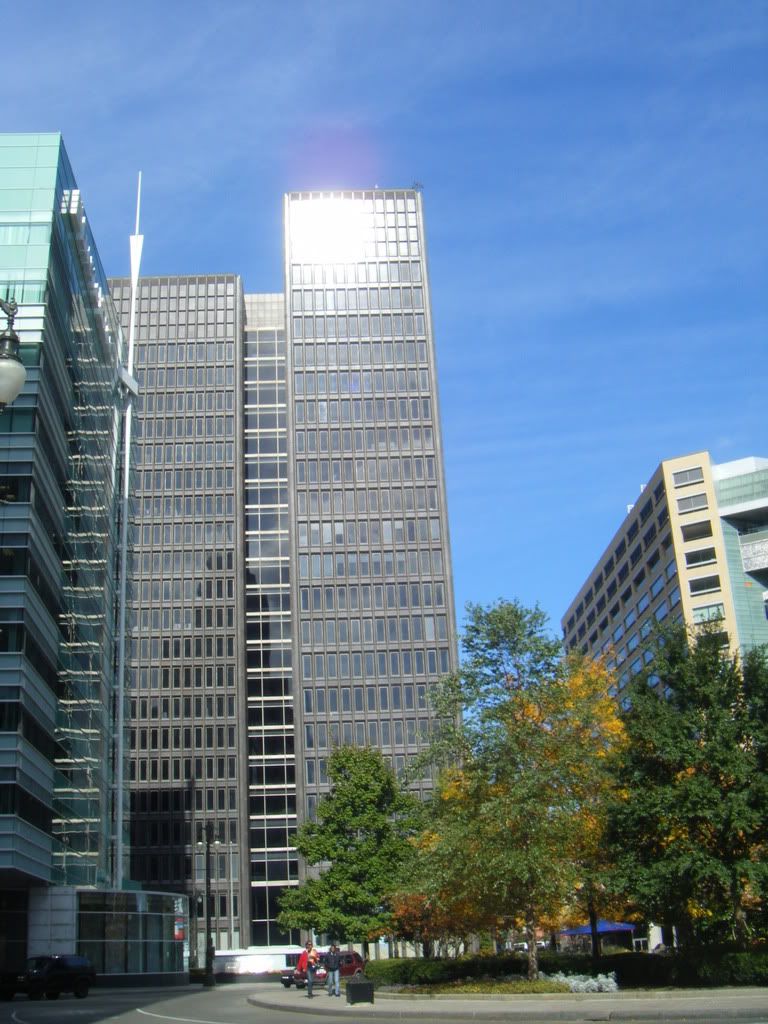
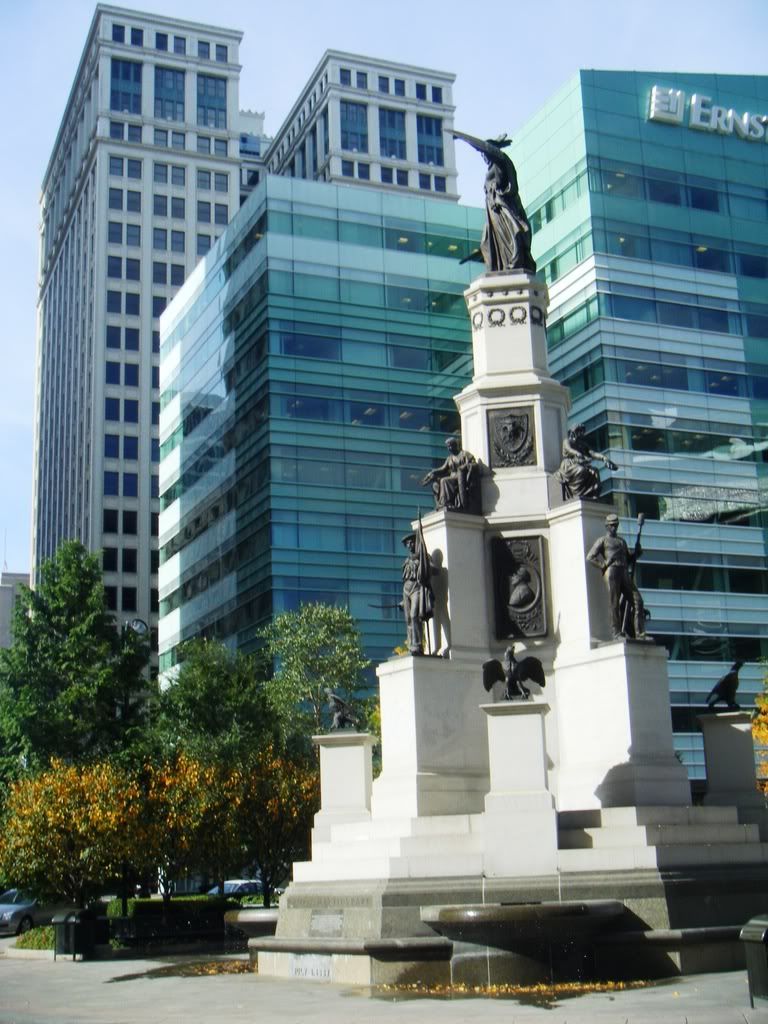
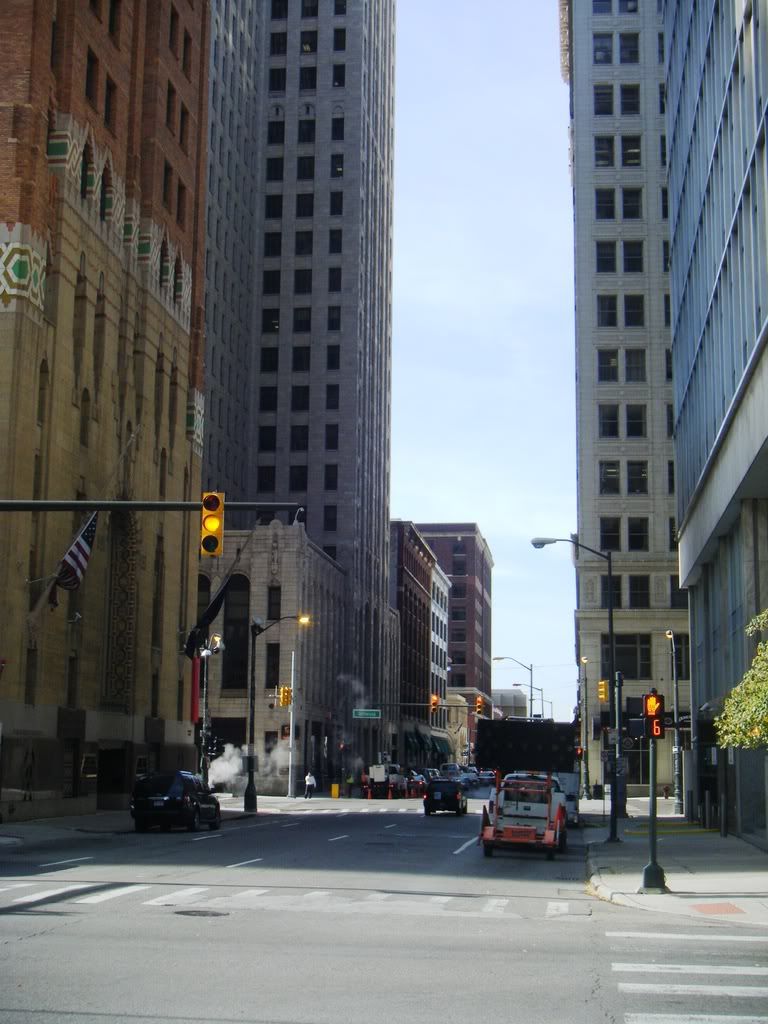
 Looking down Fort Street
Looking down Fort Street
Walking down Woodward Avenue.
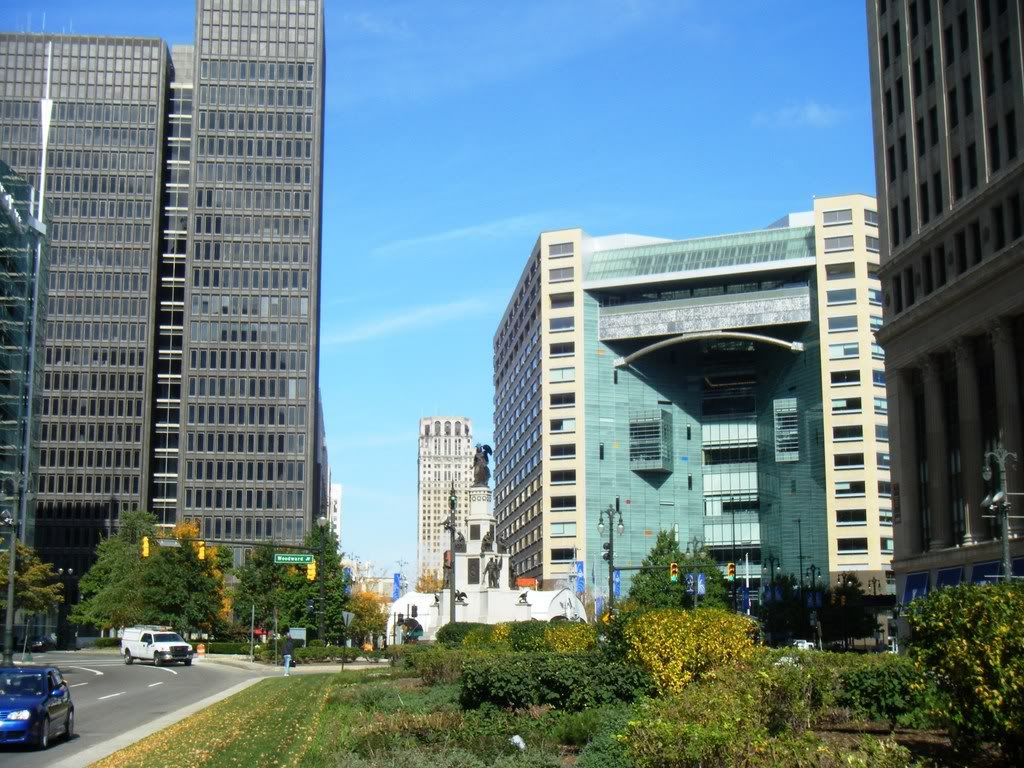
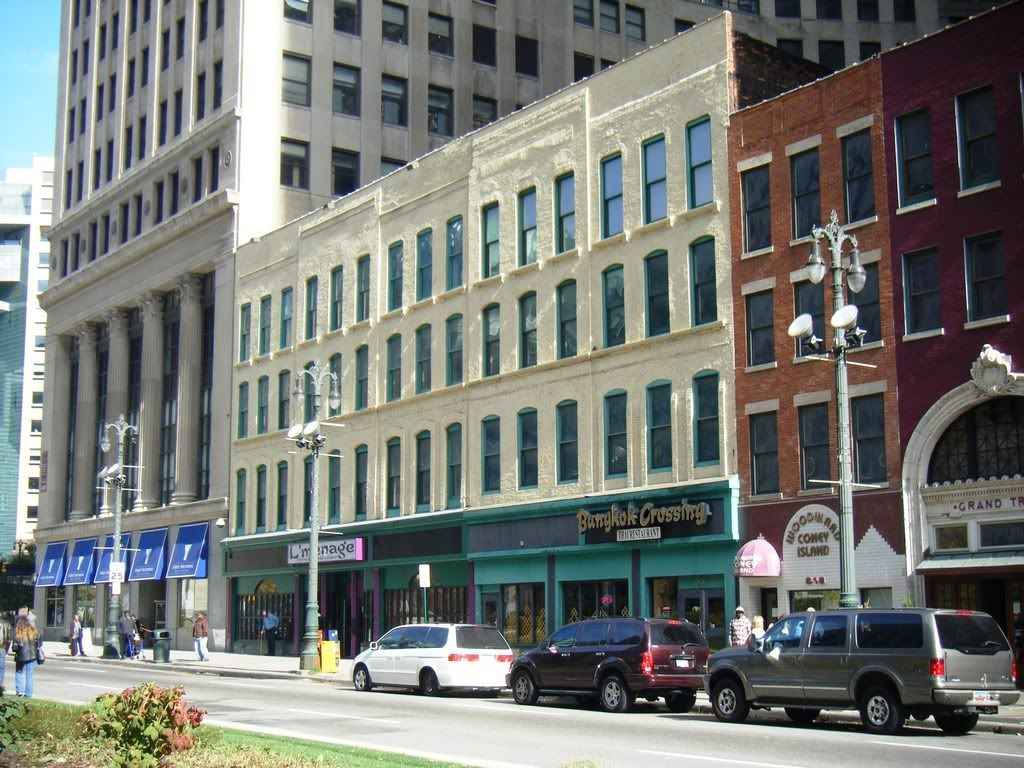
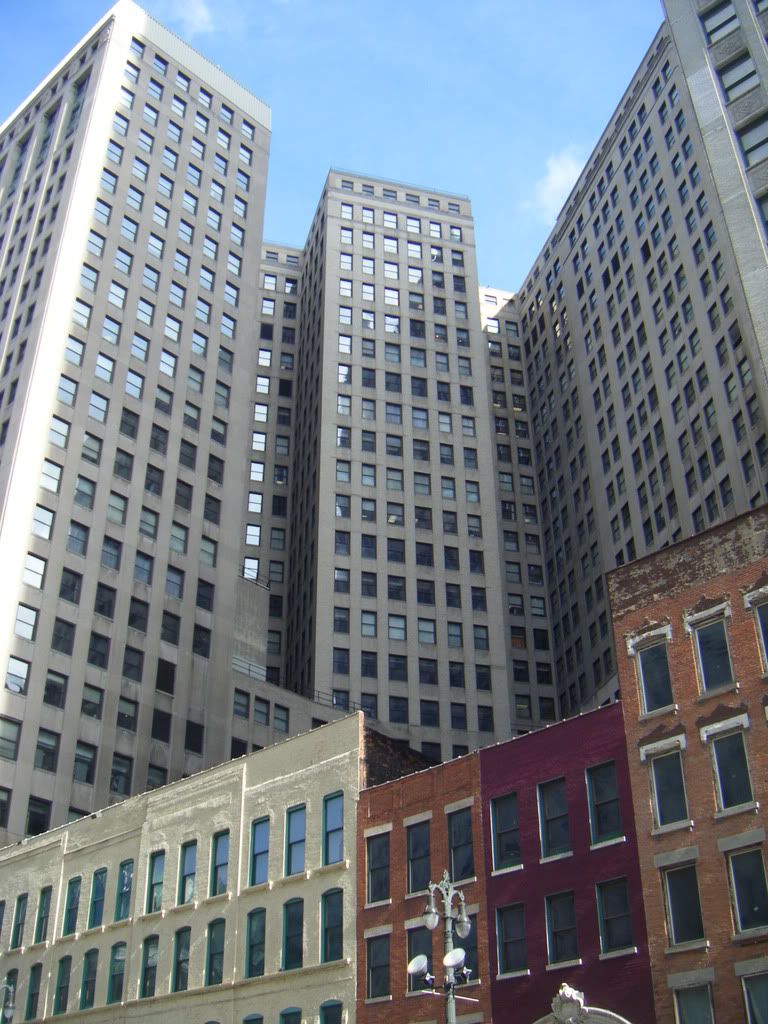
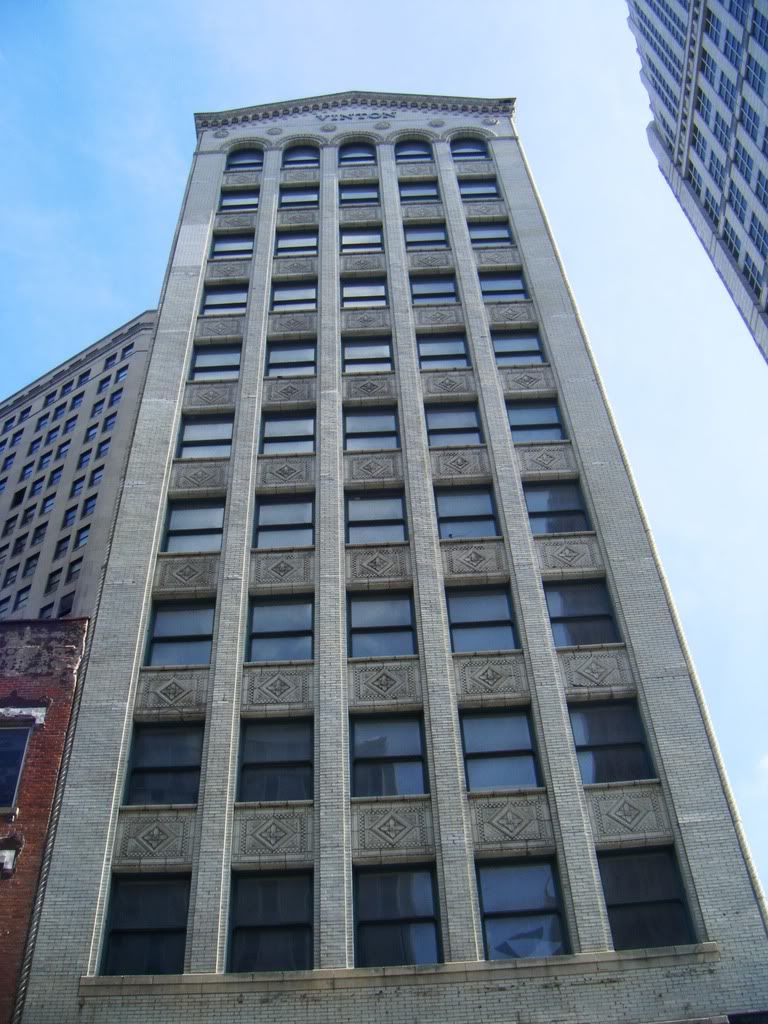
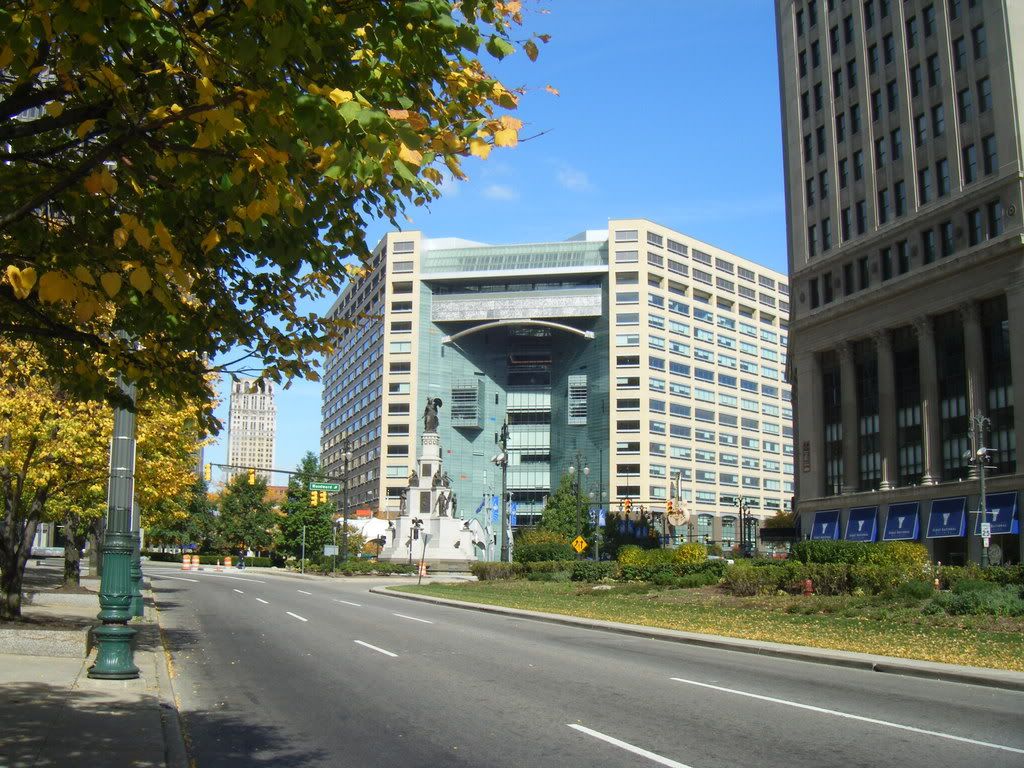
Walking up and down Griswold Street.
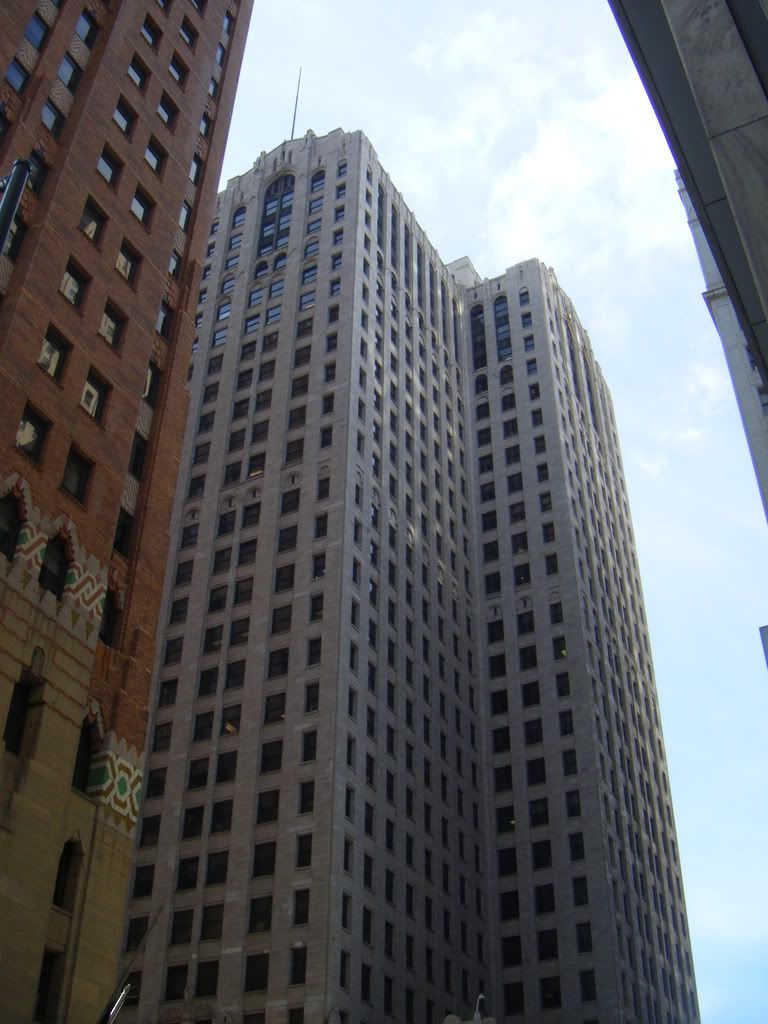
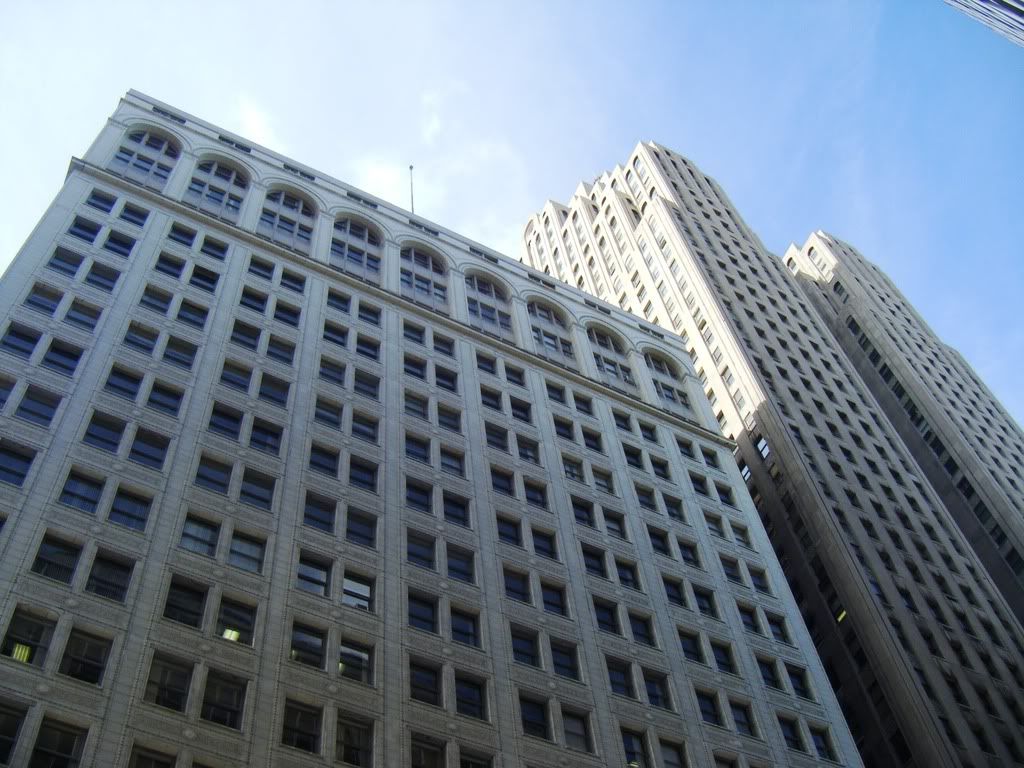
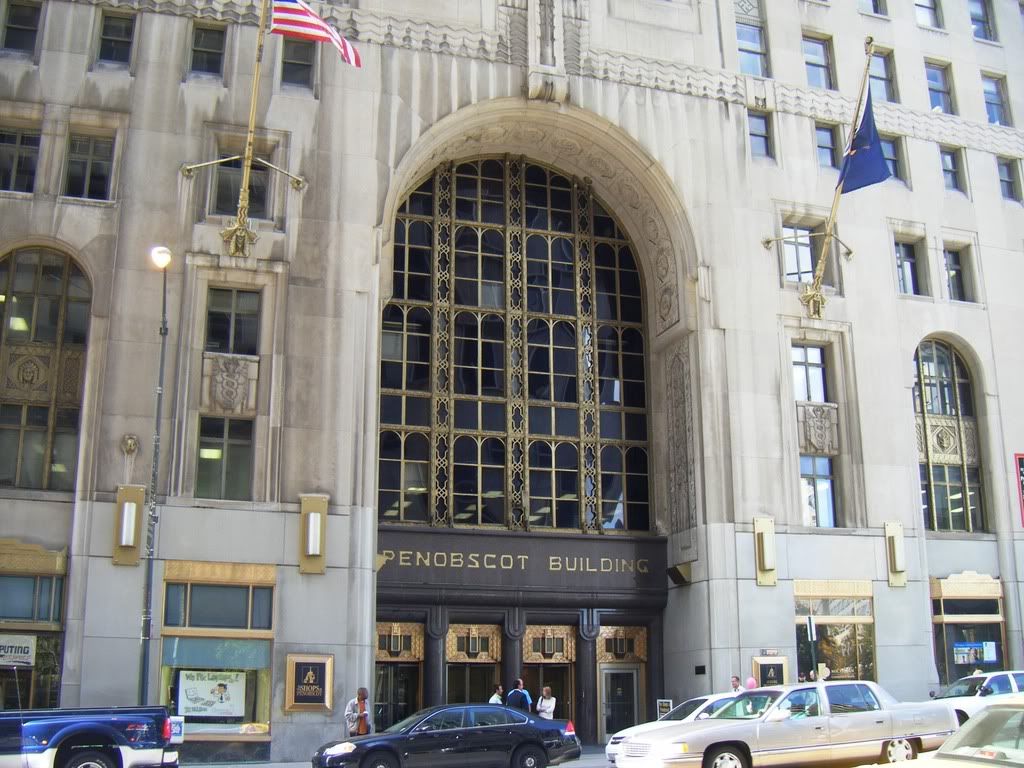

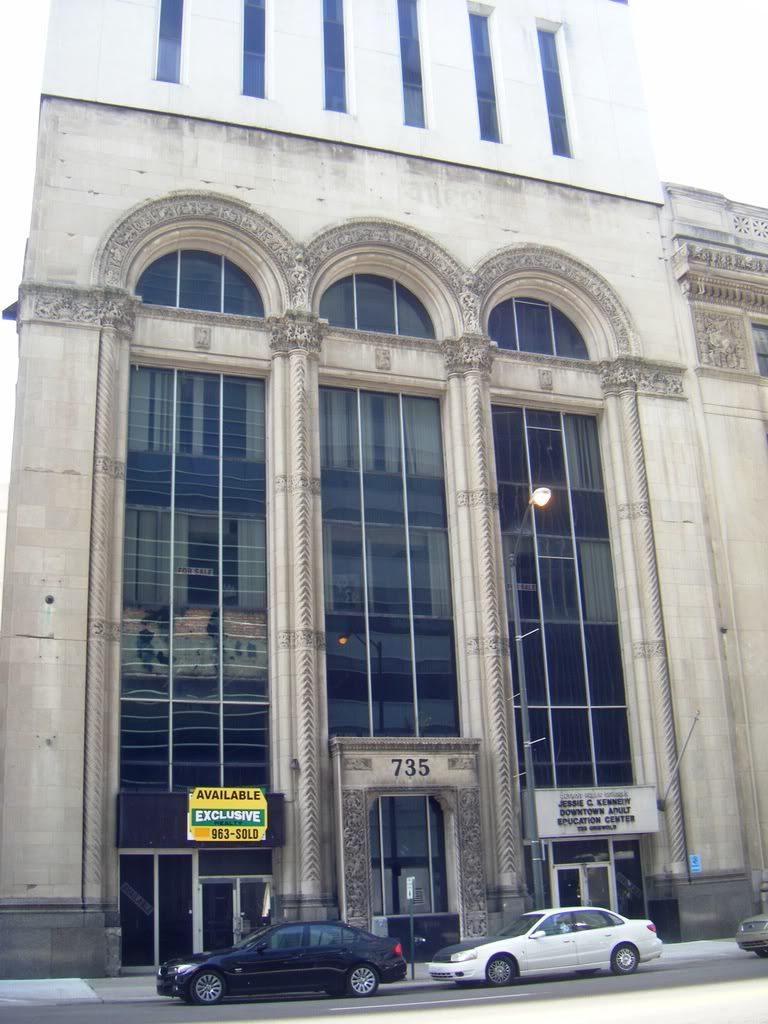
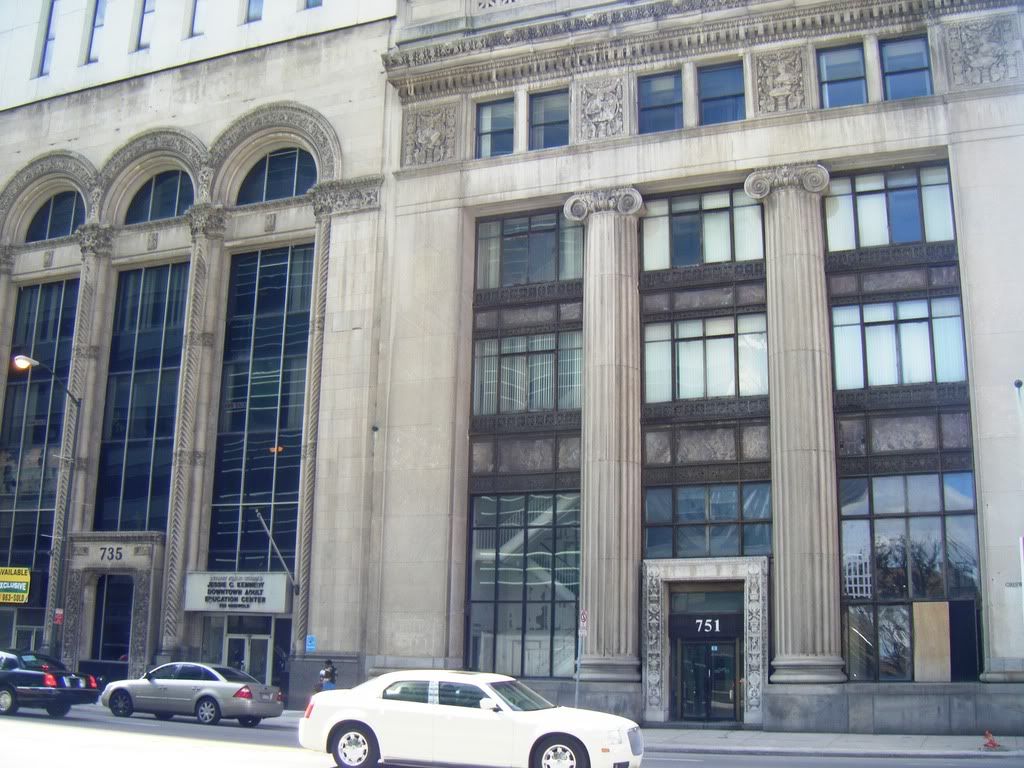
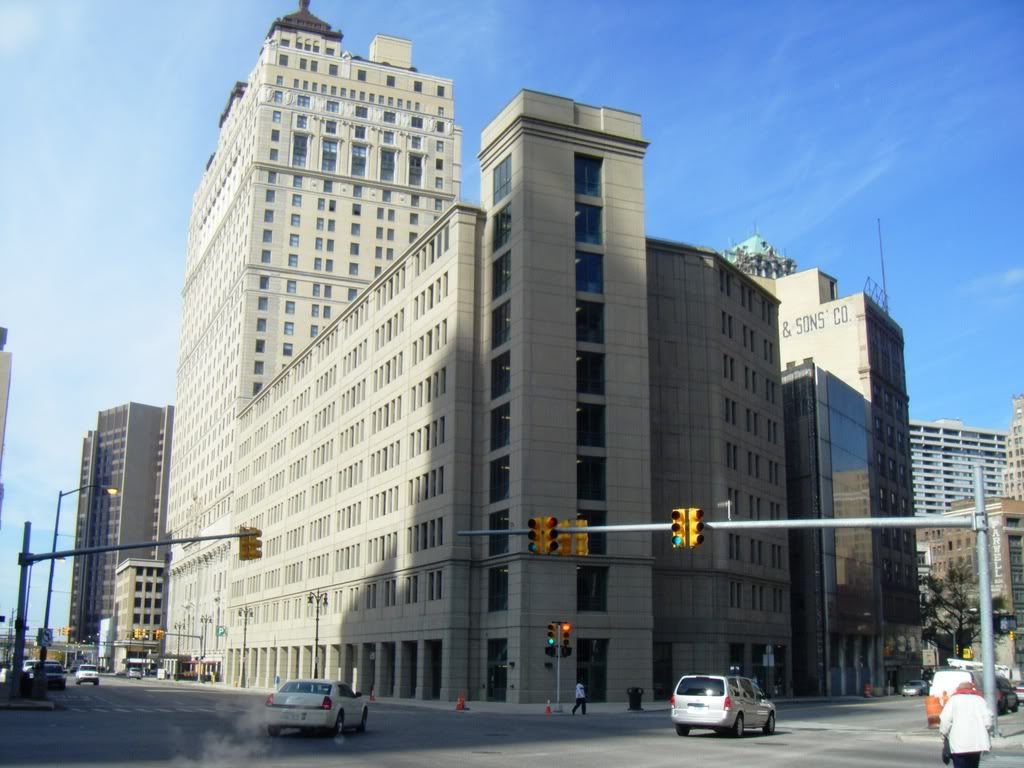
 Intersection of Griswold Street, Michigan Avenue, and Lafayette Blvd
Intersection of Griswold Street, Michigan Avenue, and Lafayette Blvd
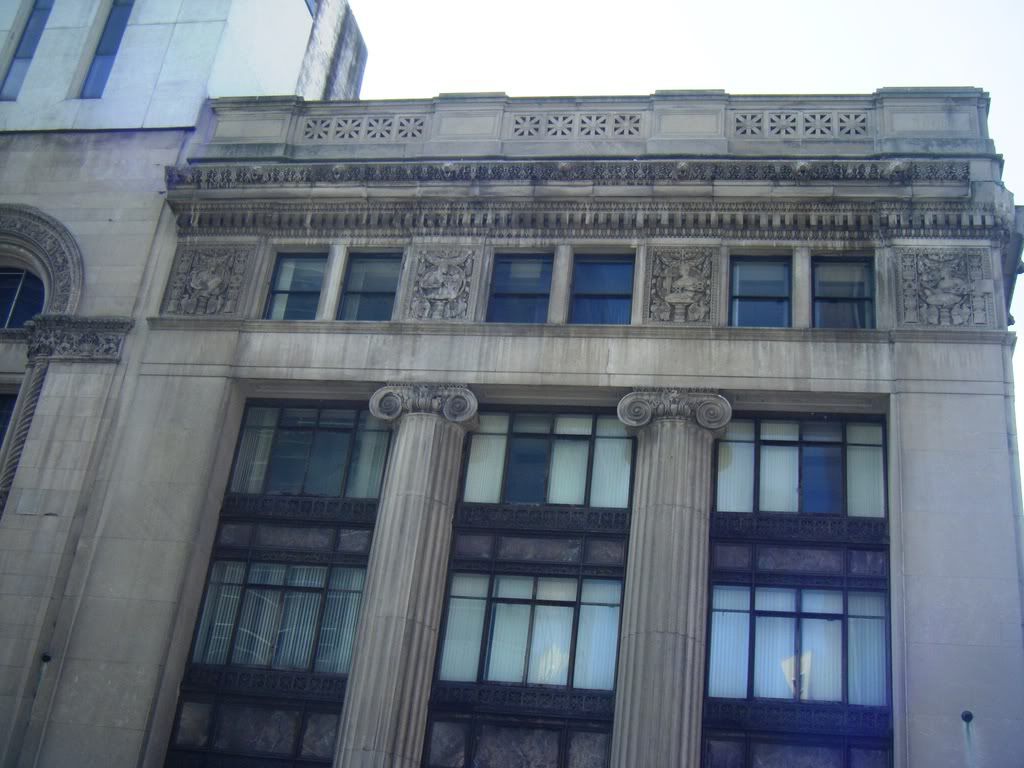
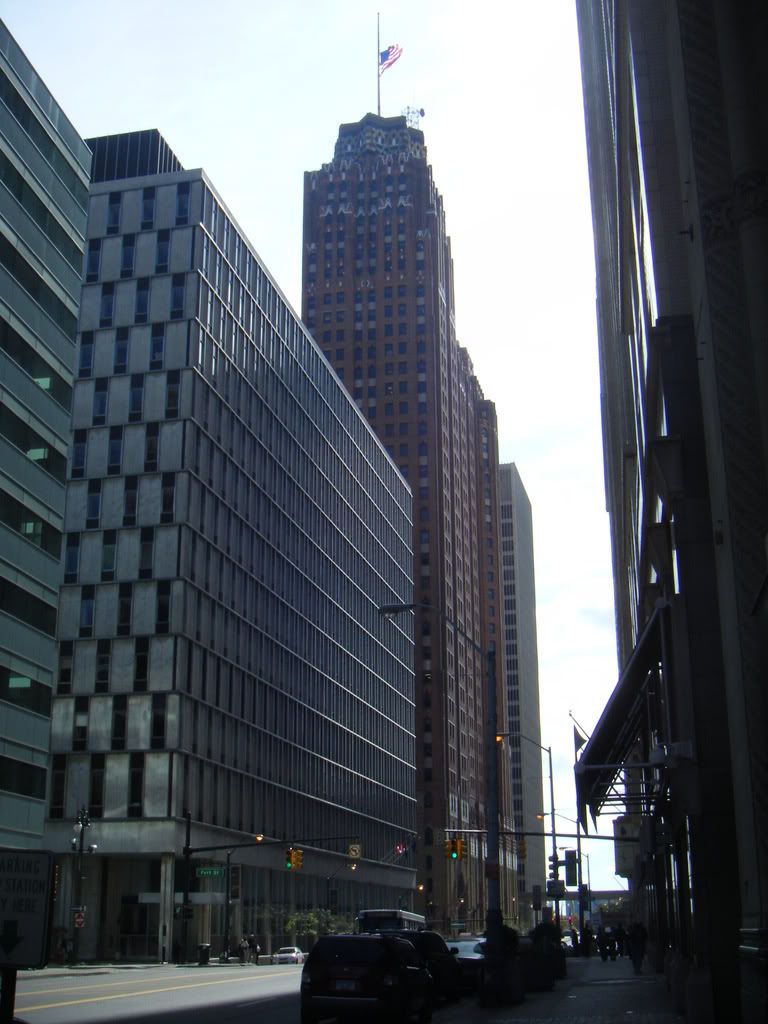
 Looking down Griswold towards the Detroit River.
Looking down Griswold towards the Detroit River.
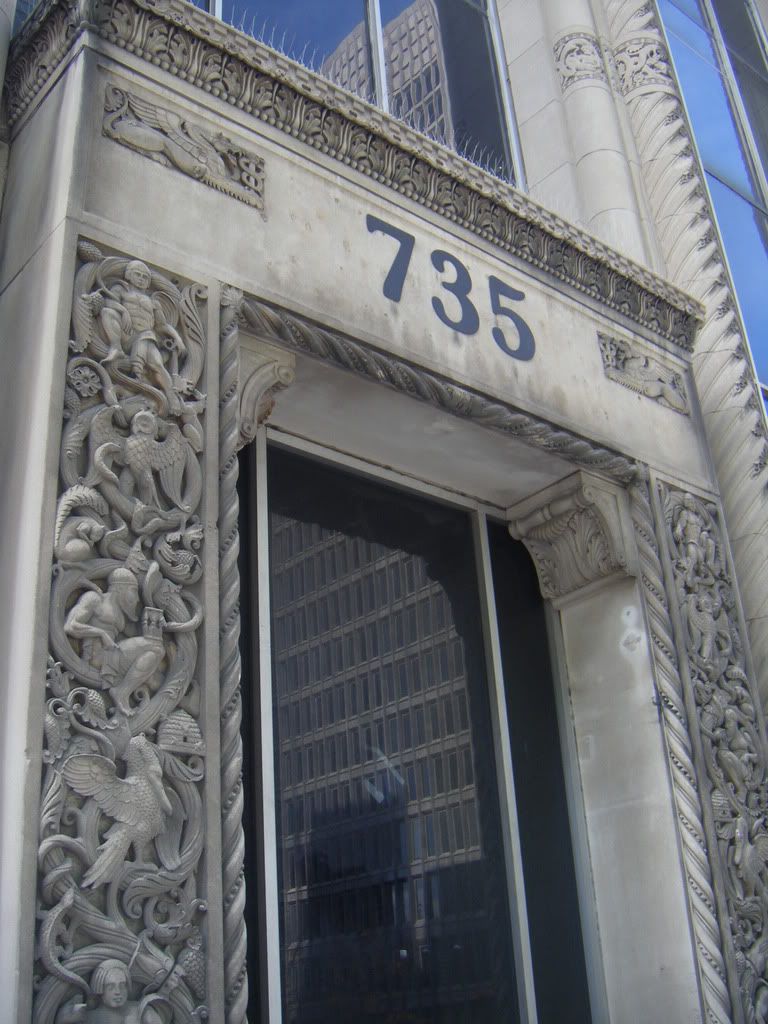
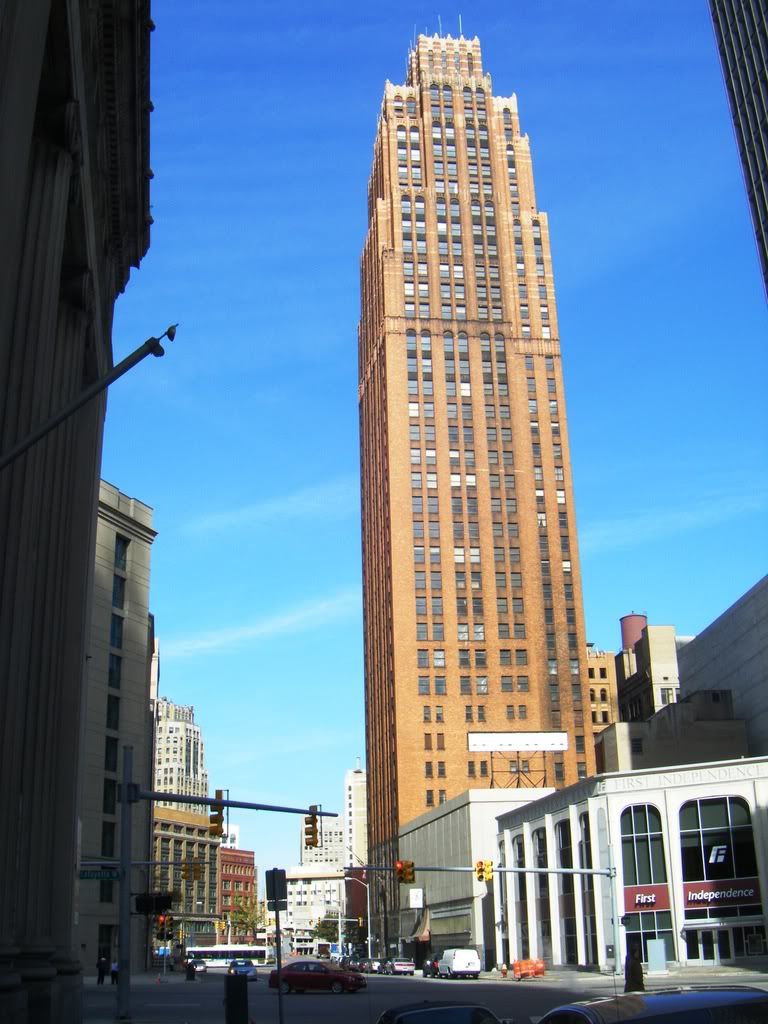
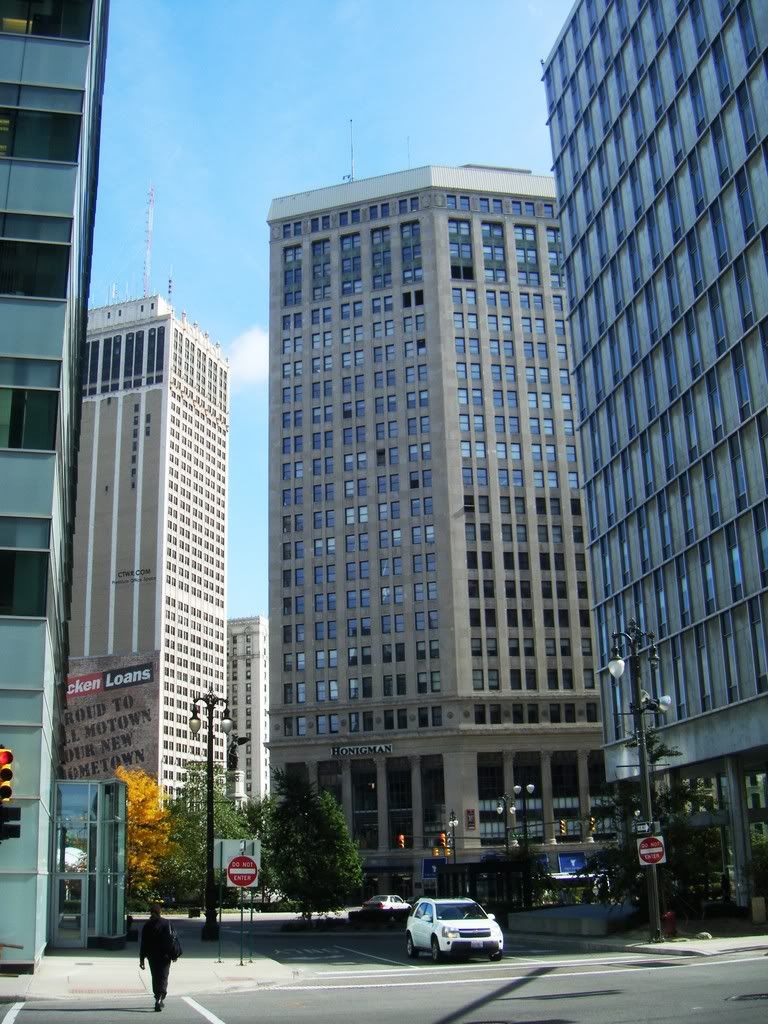
 Fort Street
Fort Street
Griswold Street
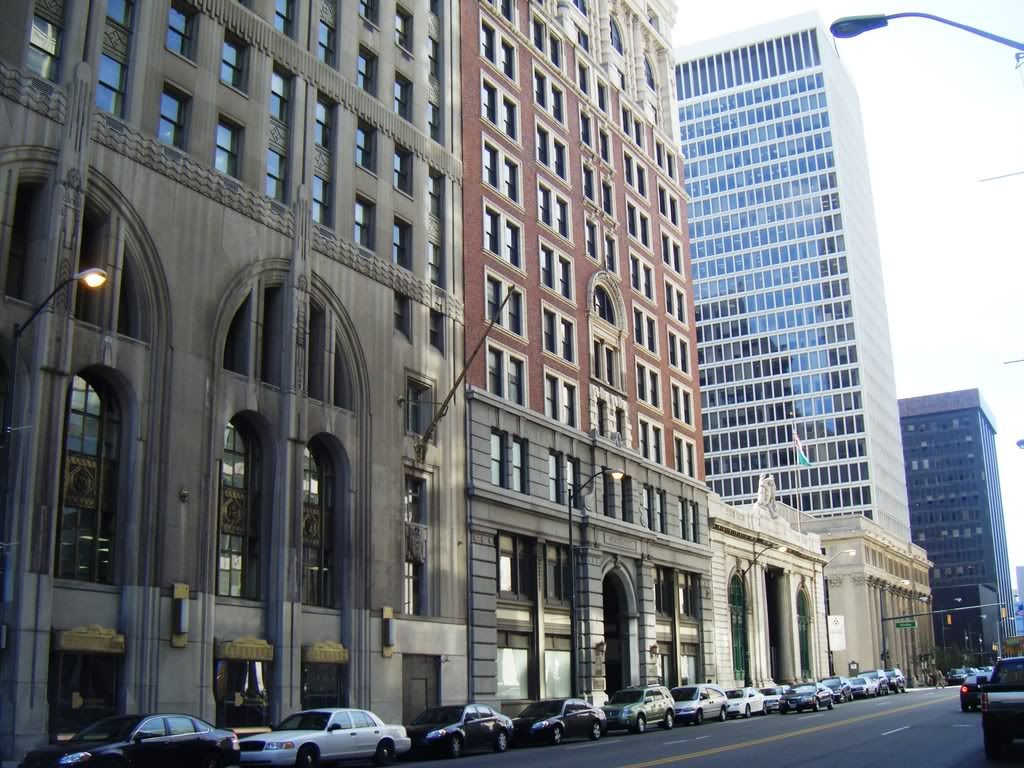

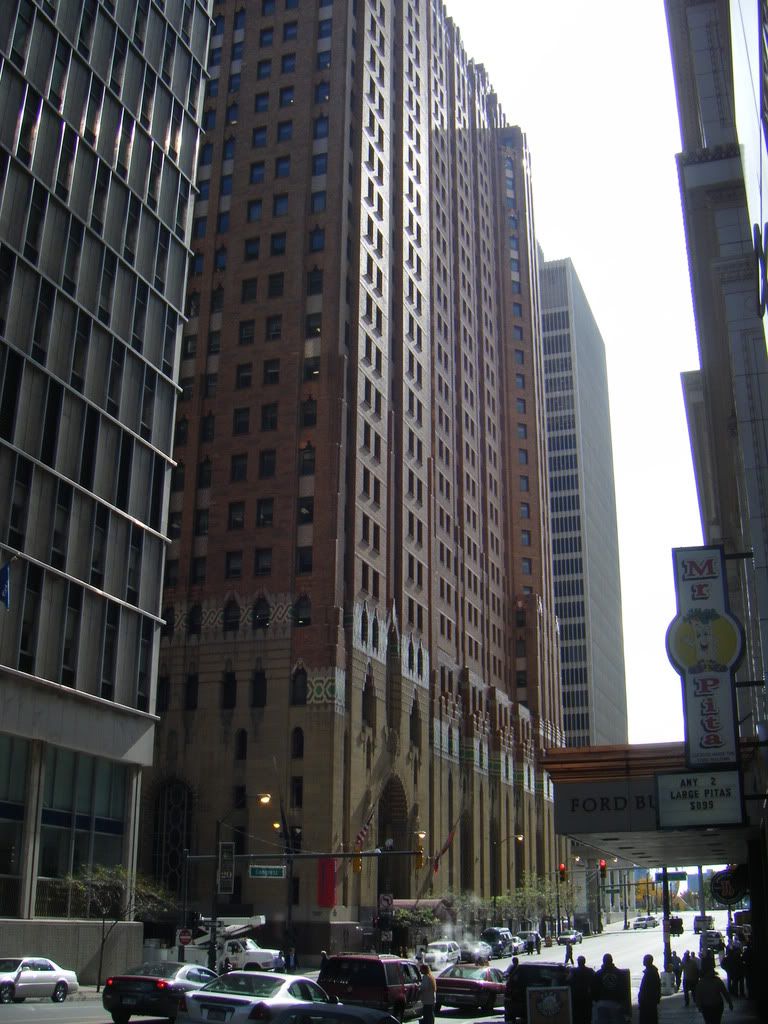

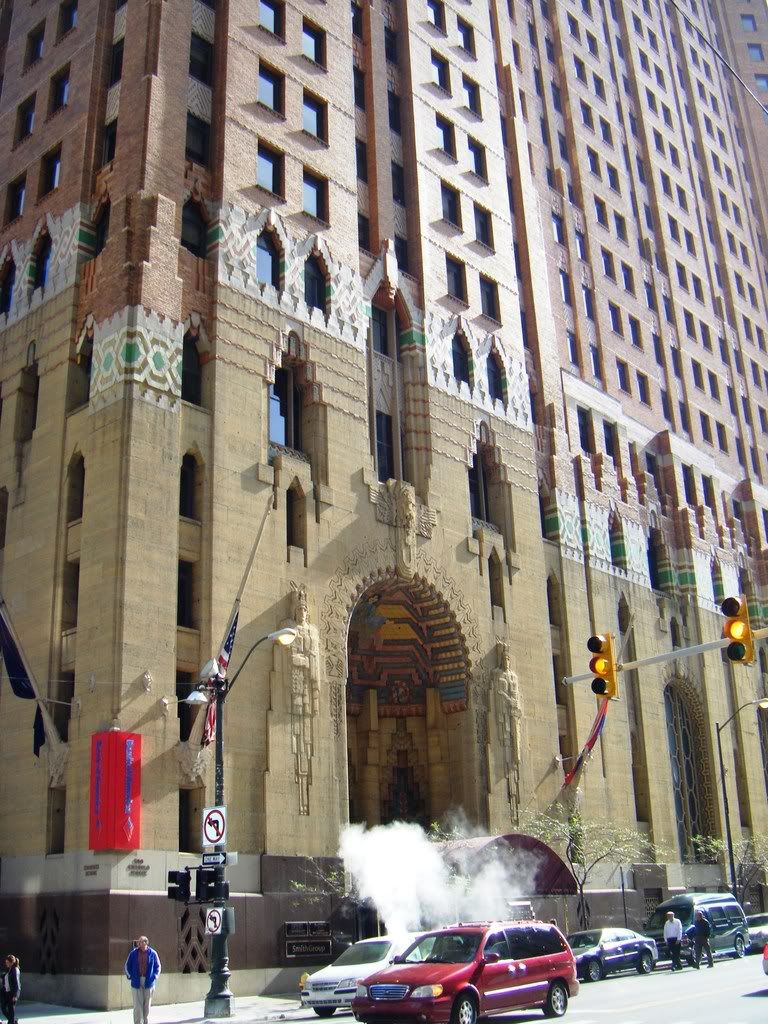
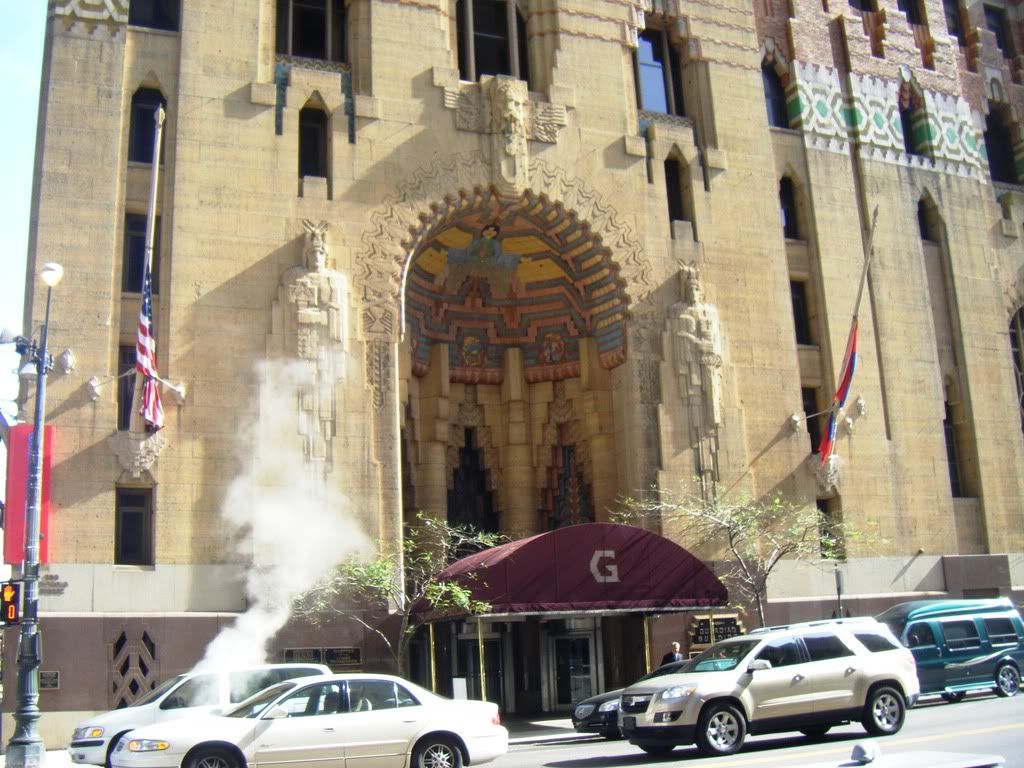
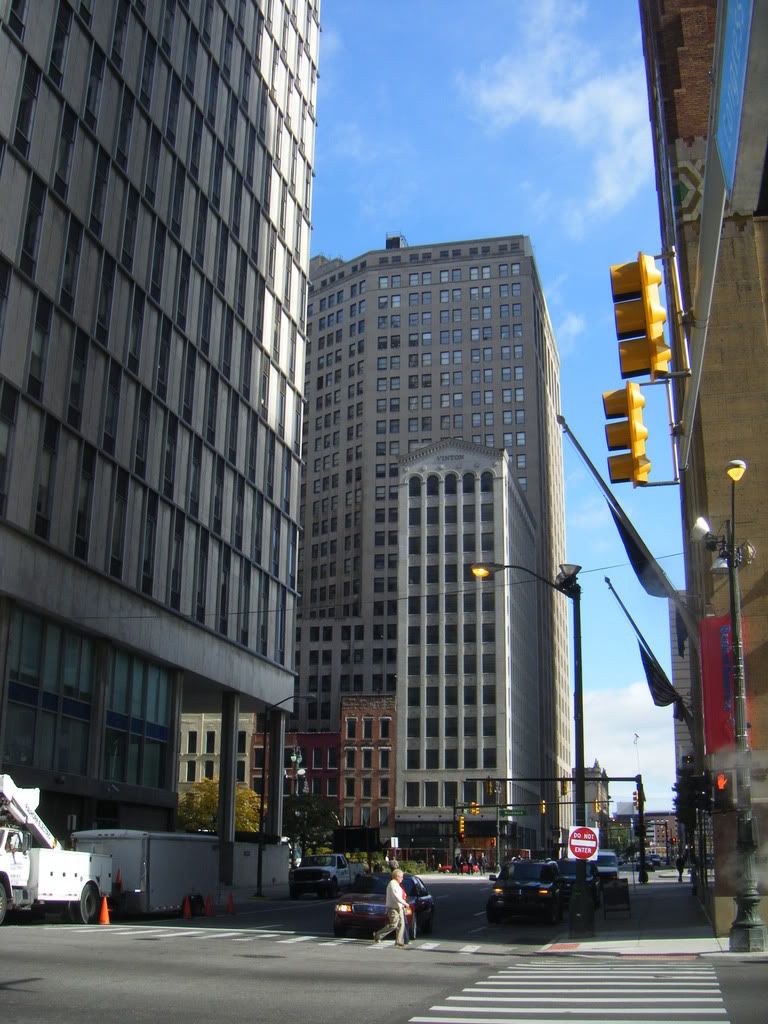
 West Congress Street
West Congress Street
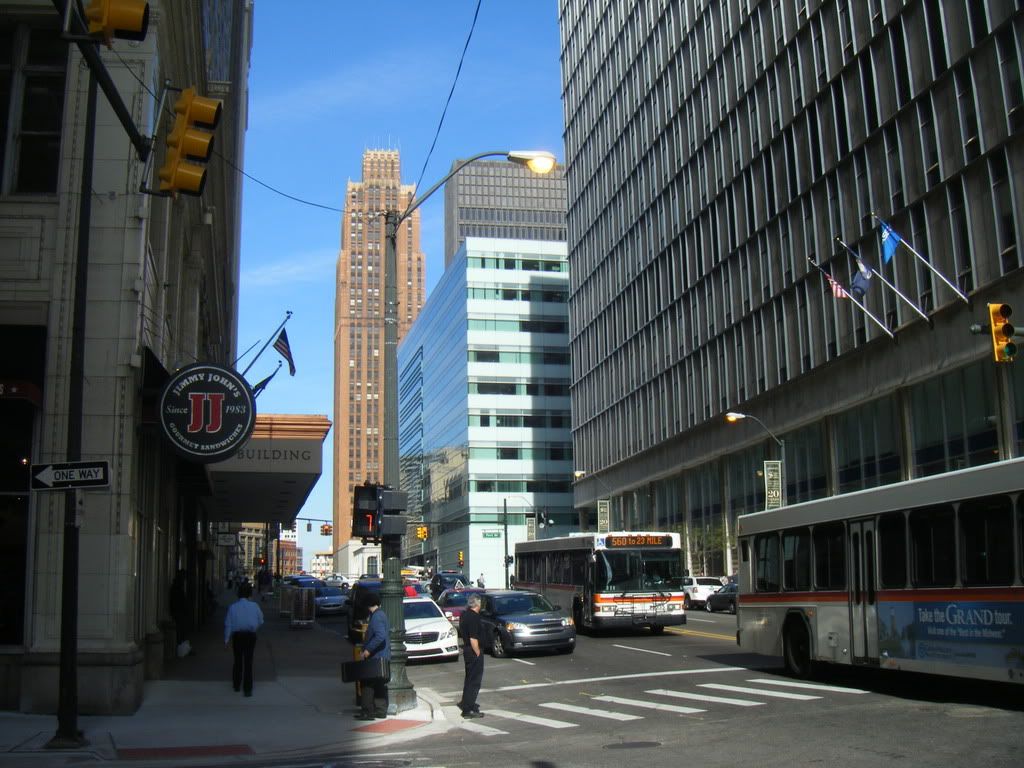
Inside the Gaurdian building
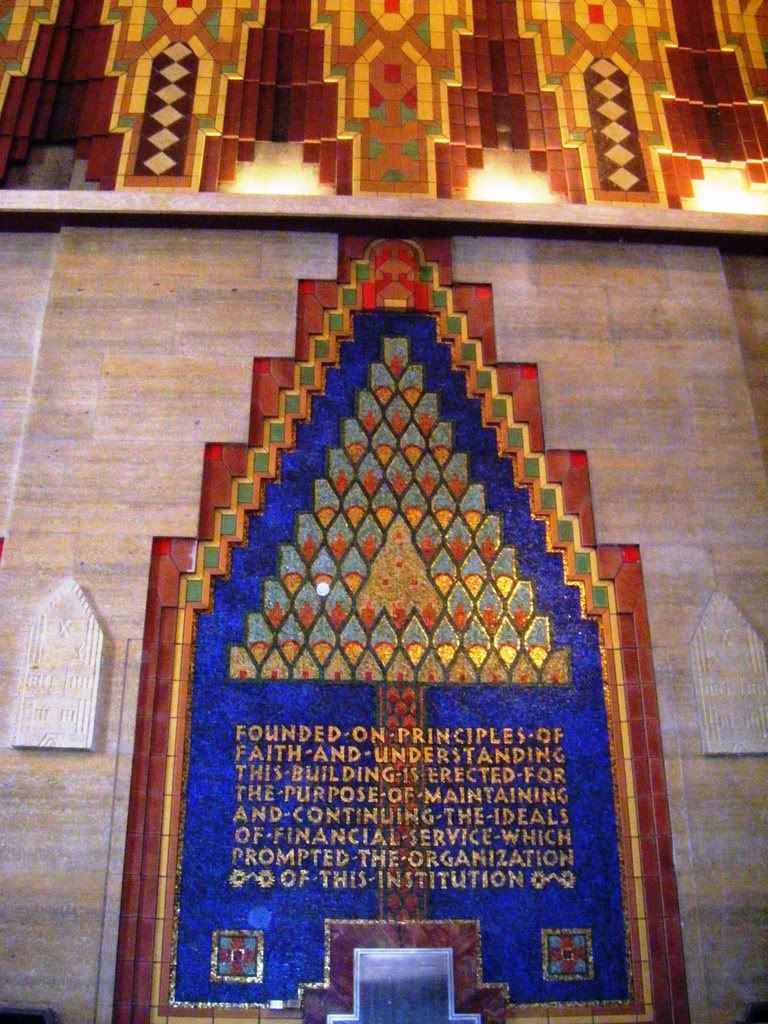
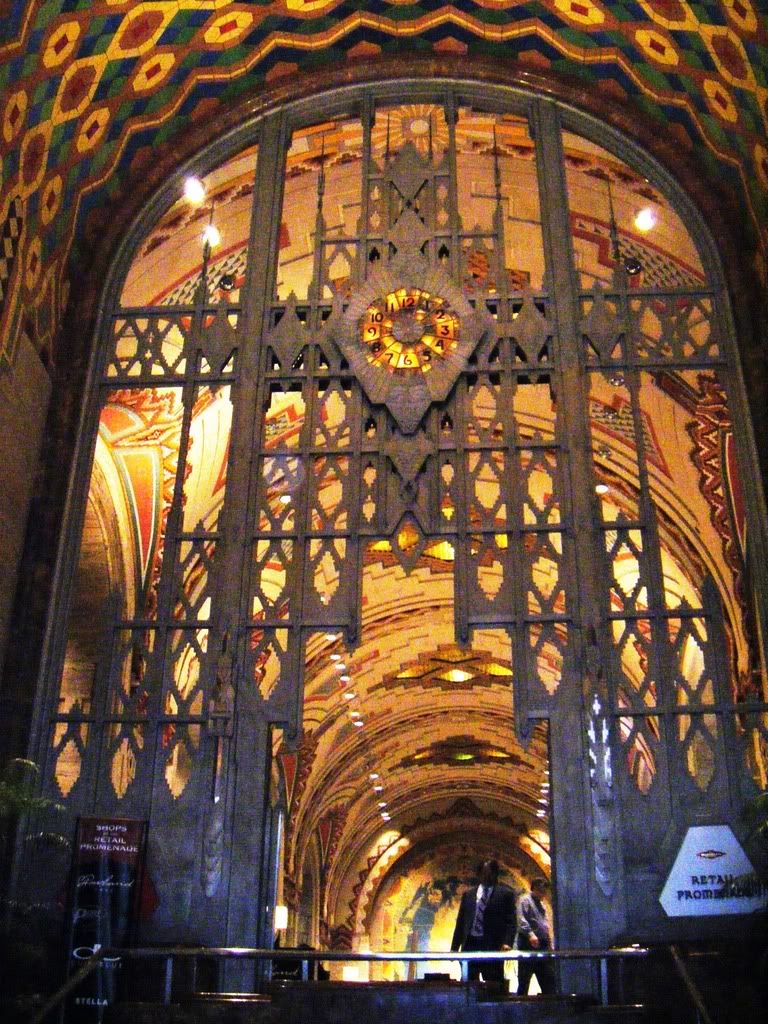

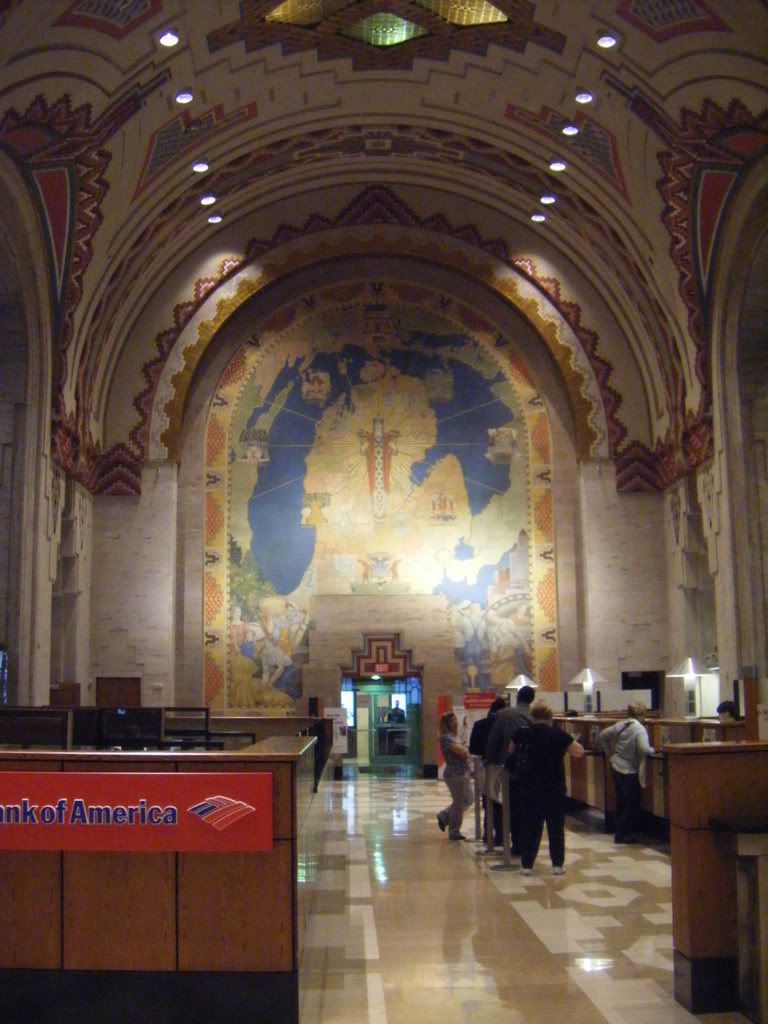

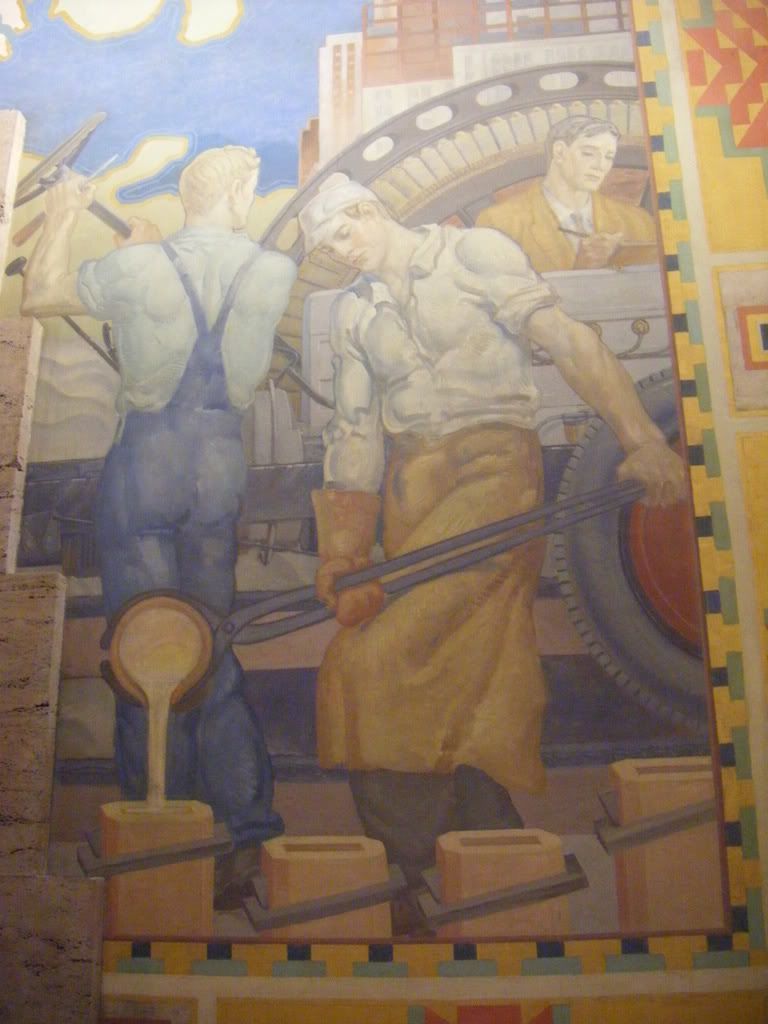
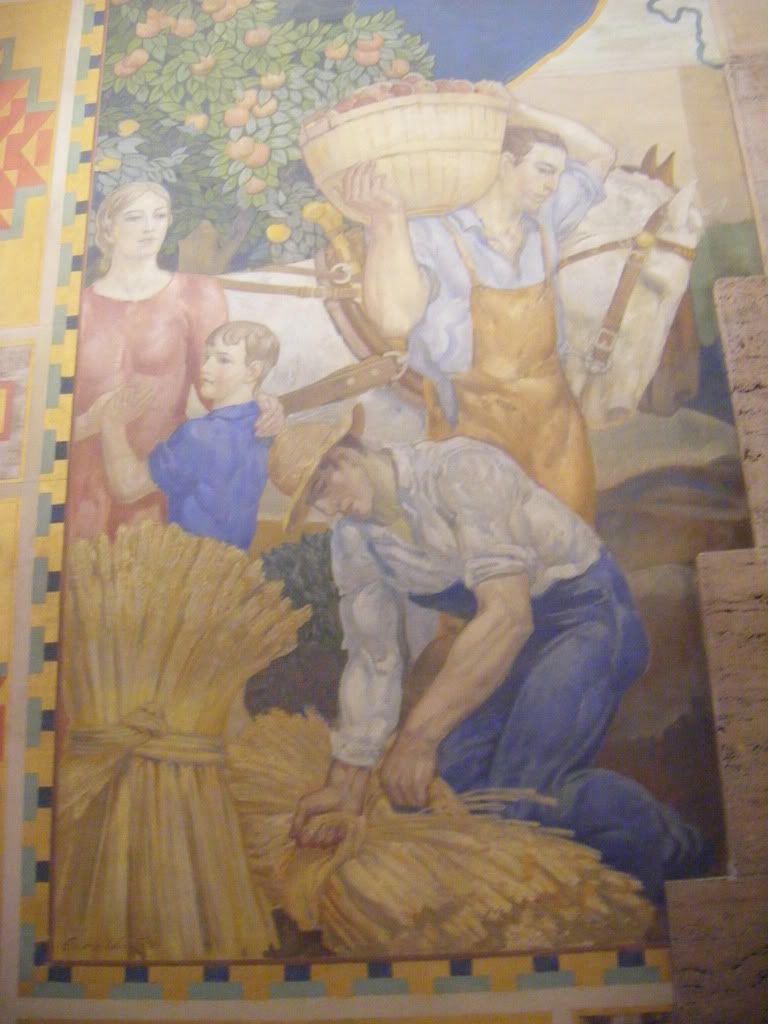
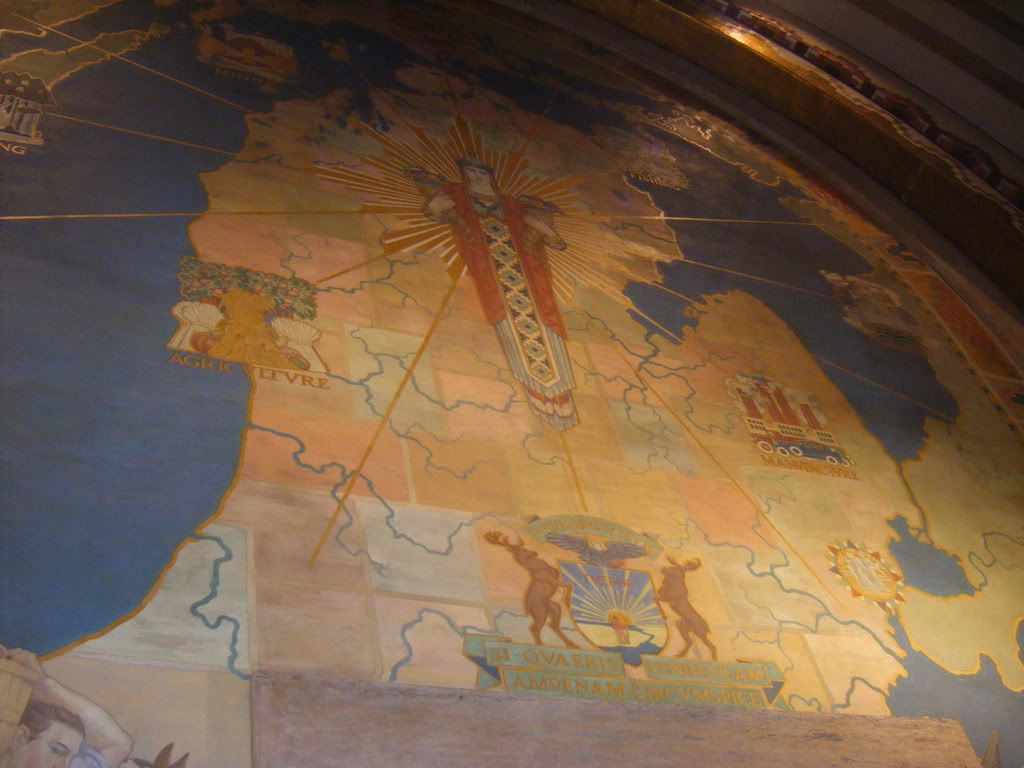
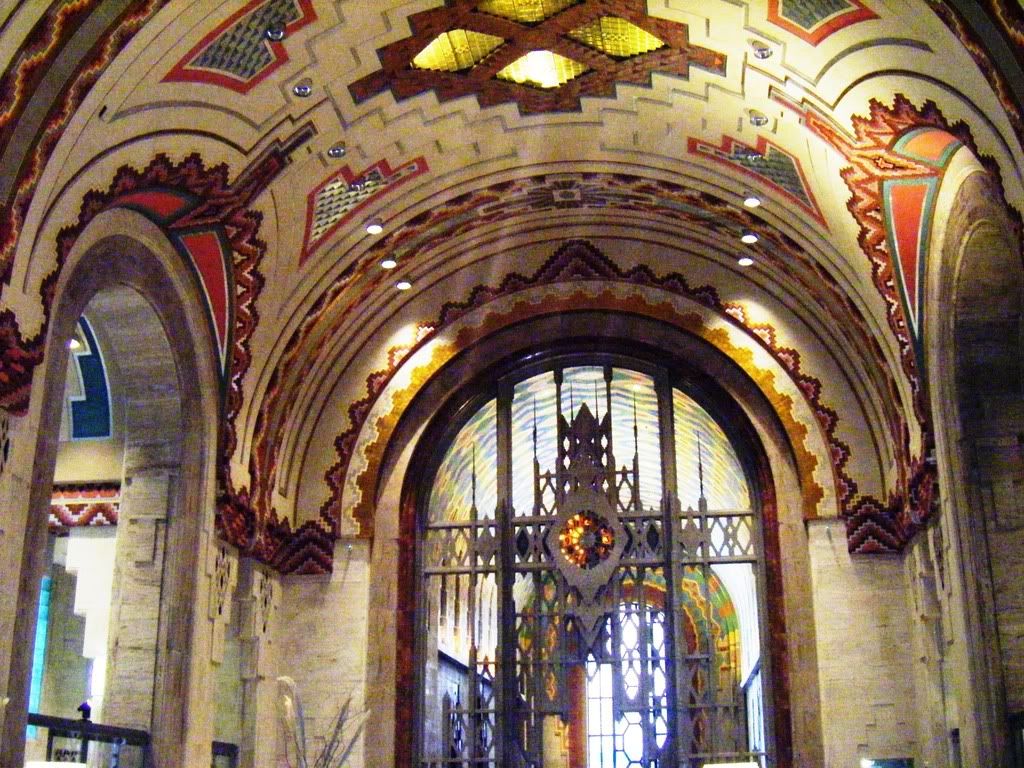
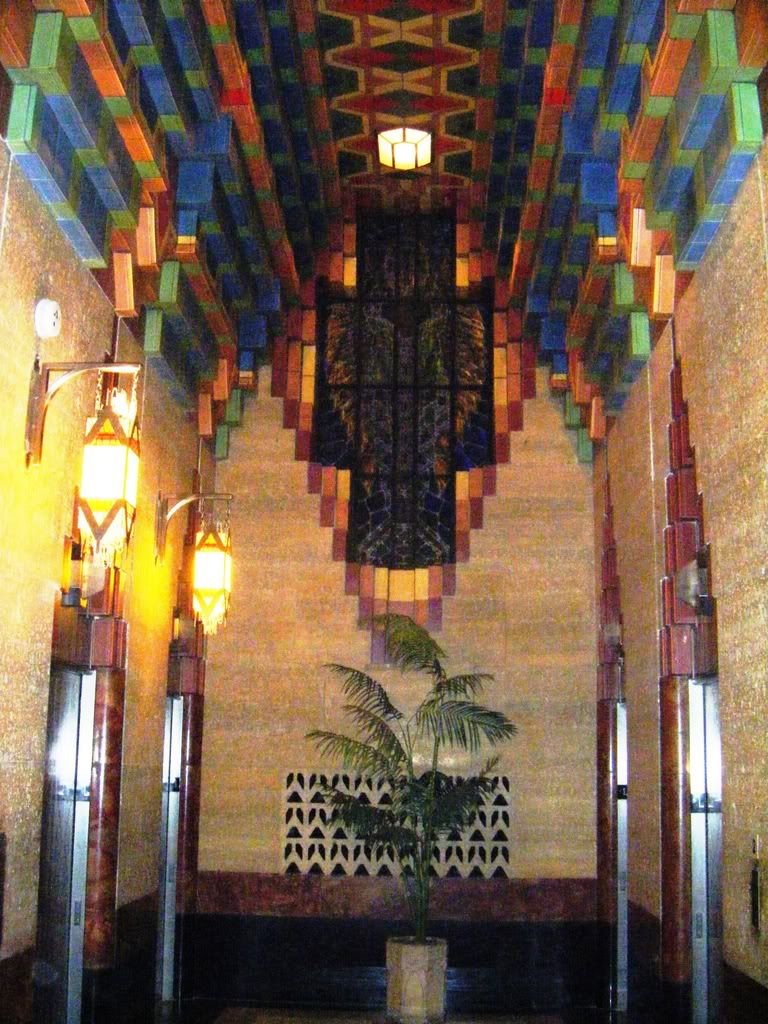
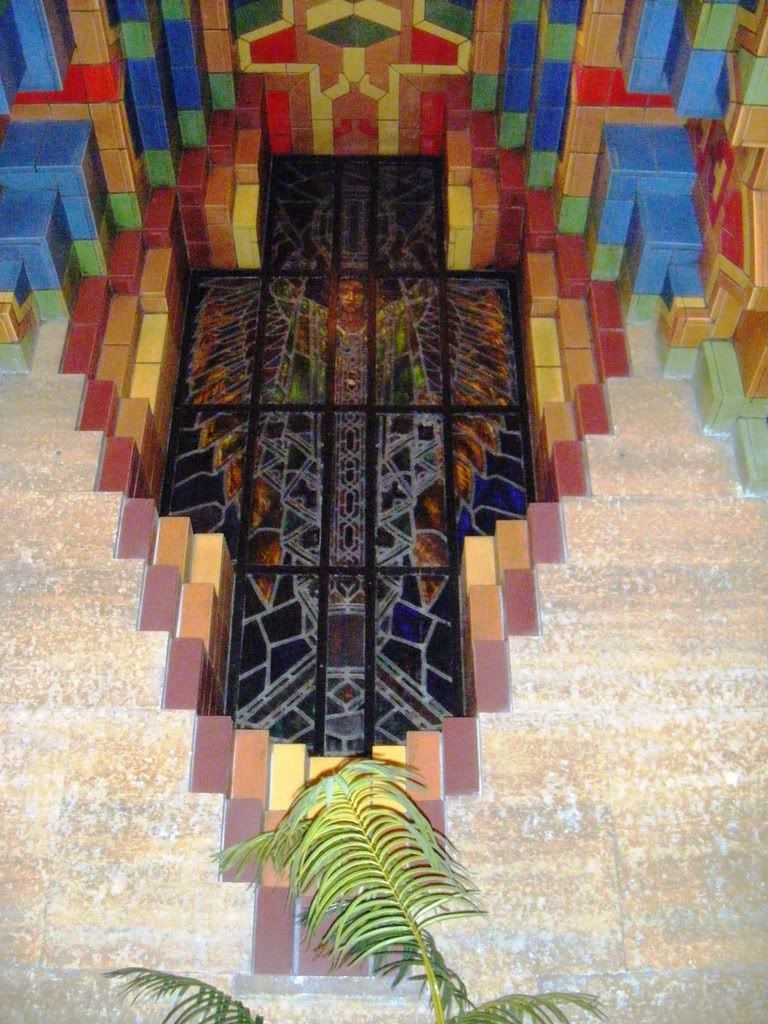


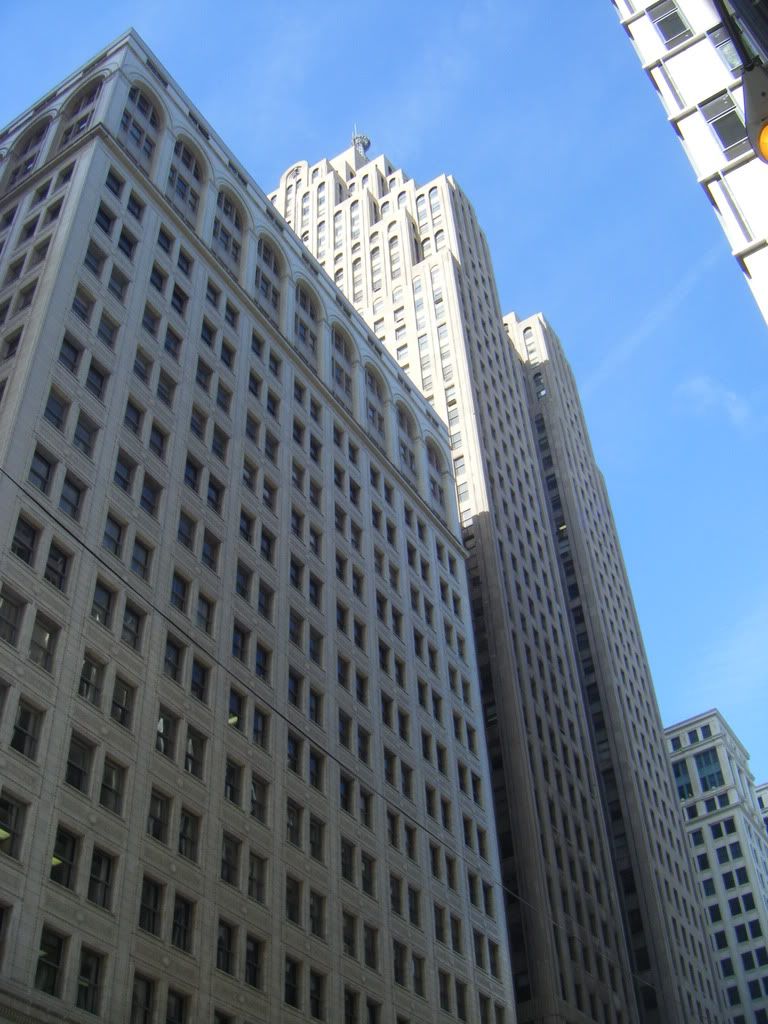
Congress Street
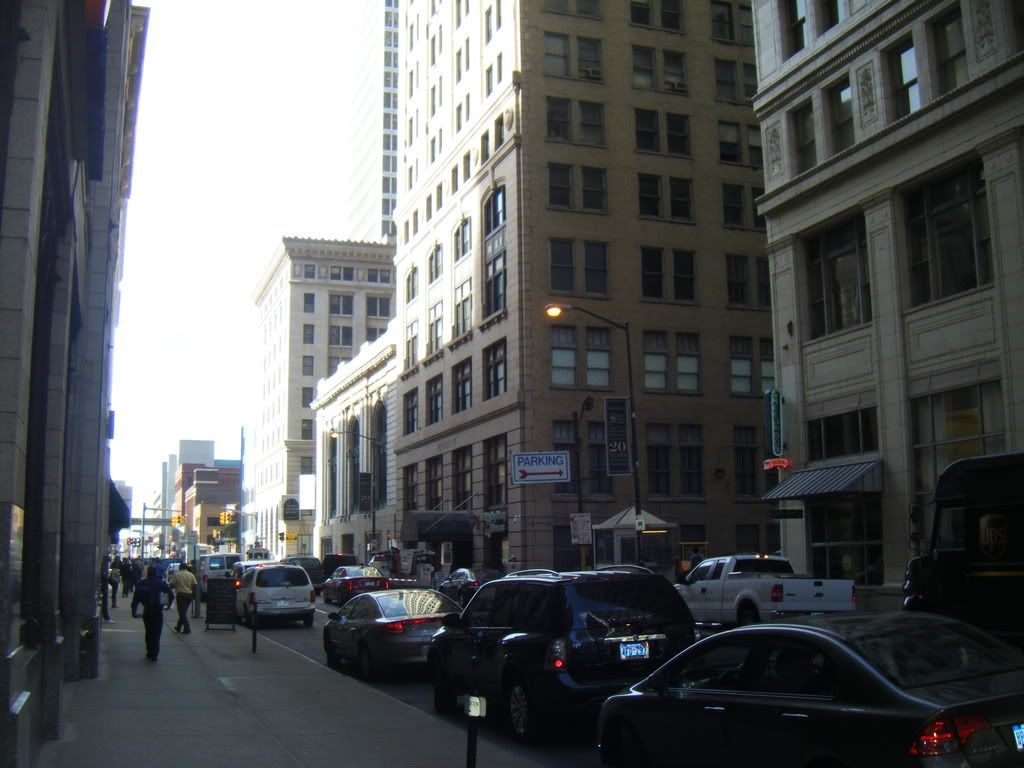

 Intersection of Congress and Shelby Street. I LOVE this building!
Intersection of Congress and Shelby Street. I LOVE this building!
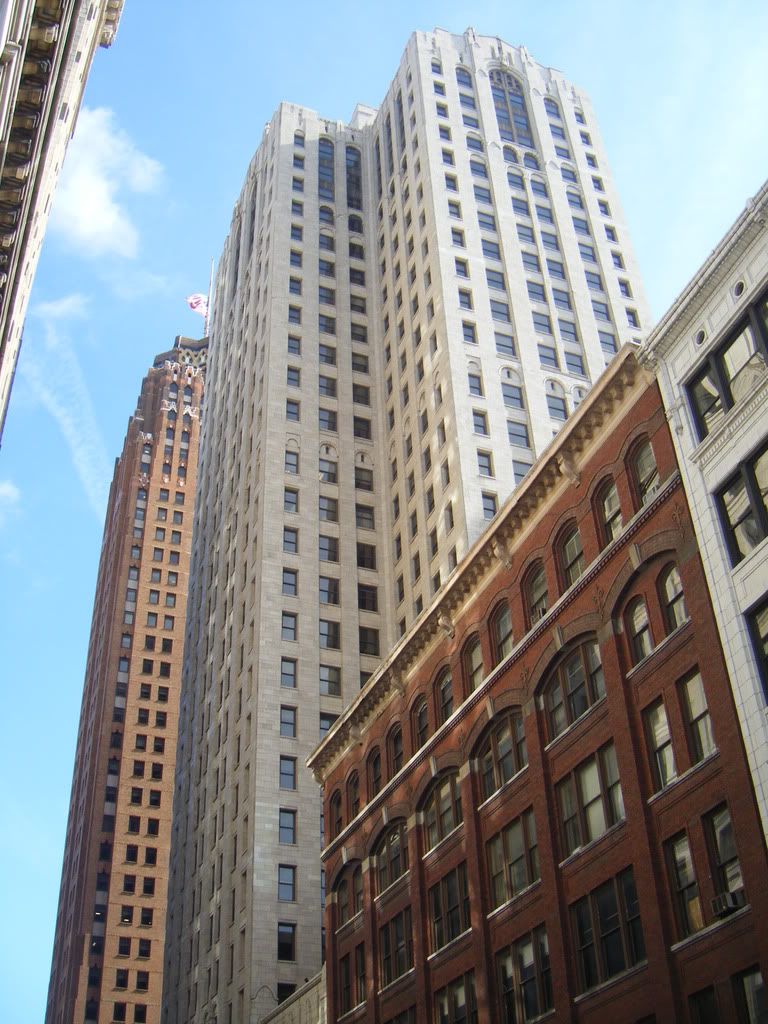
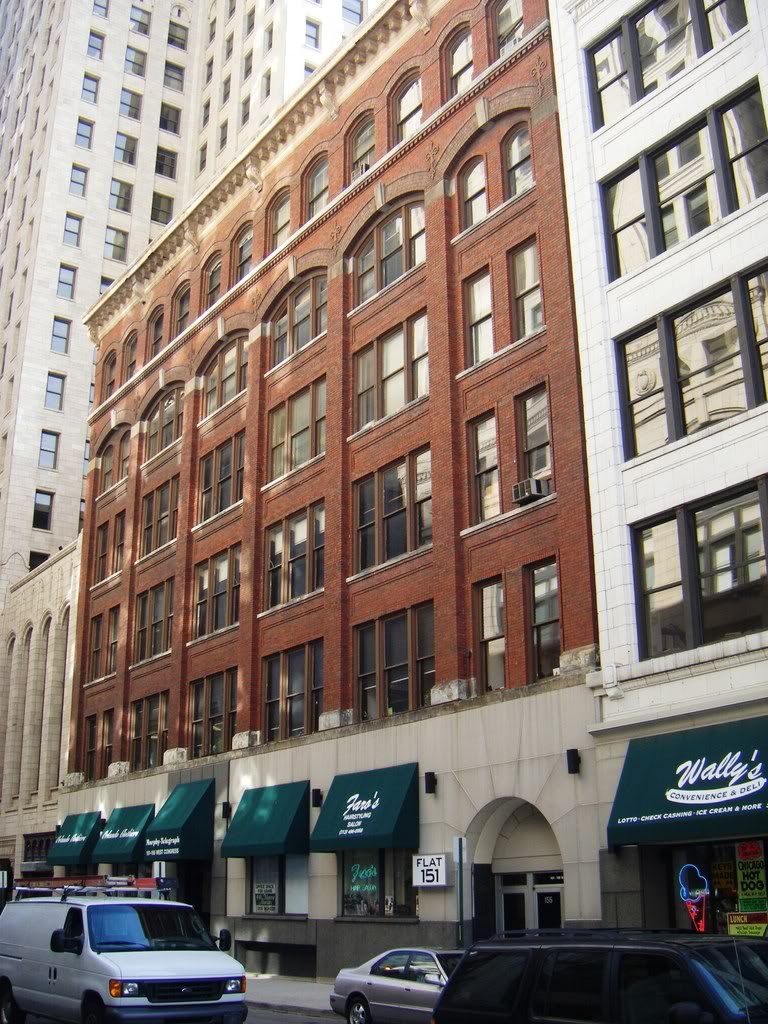
Walking up Shelby
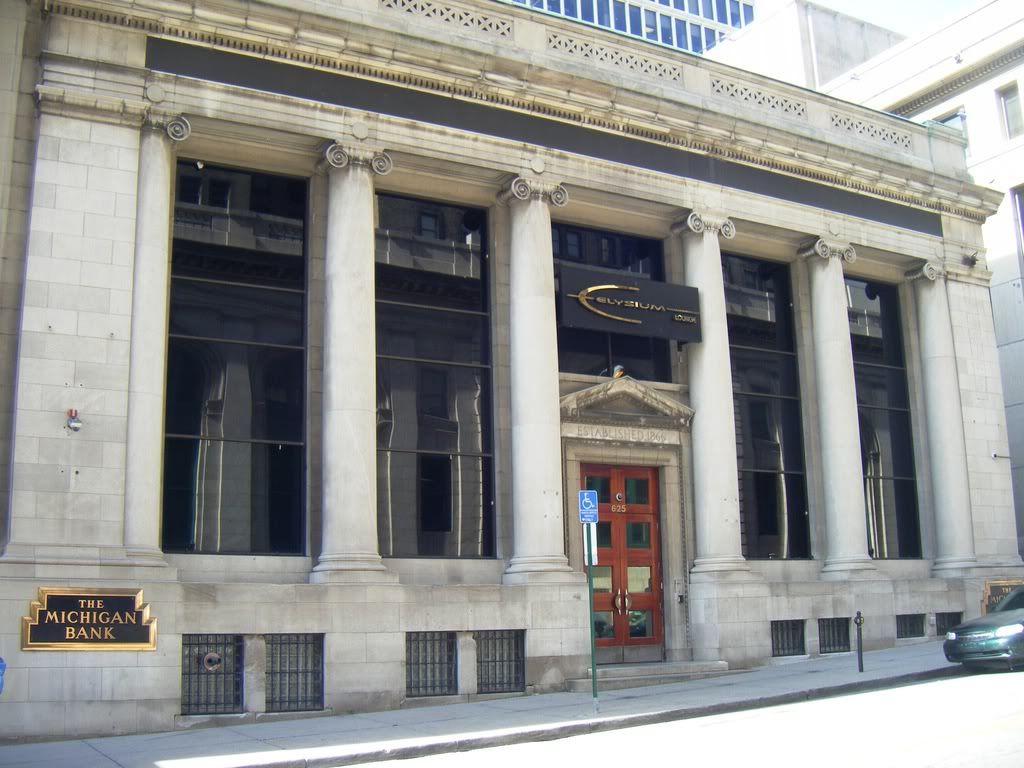
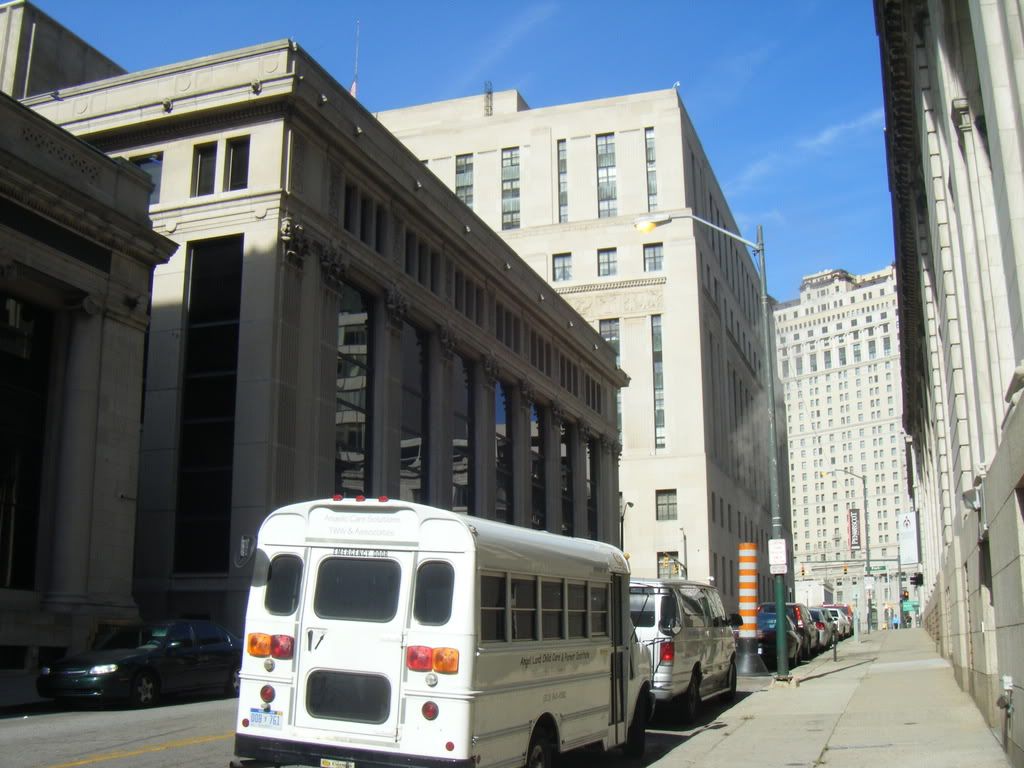

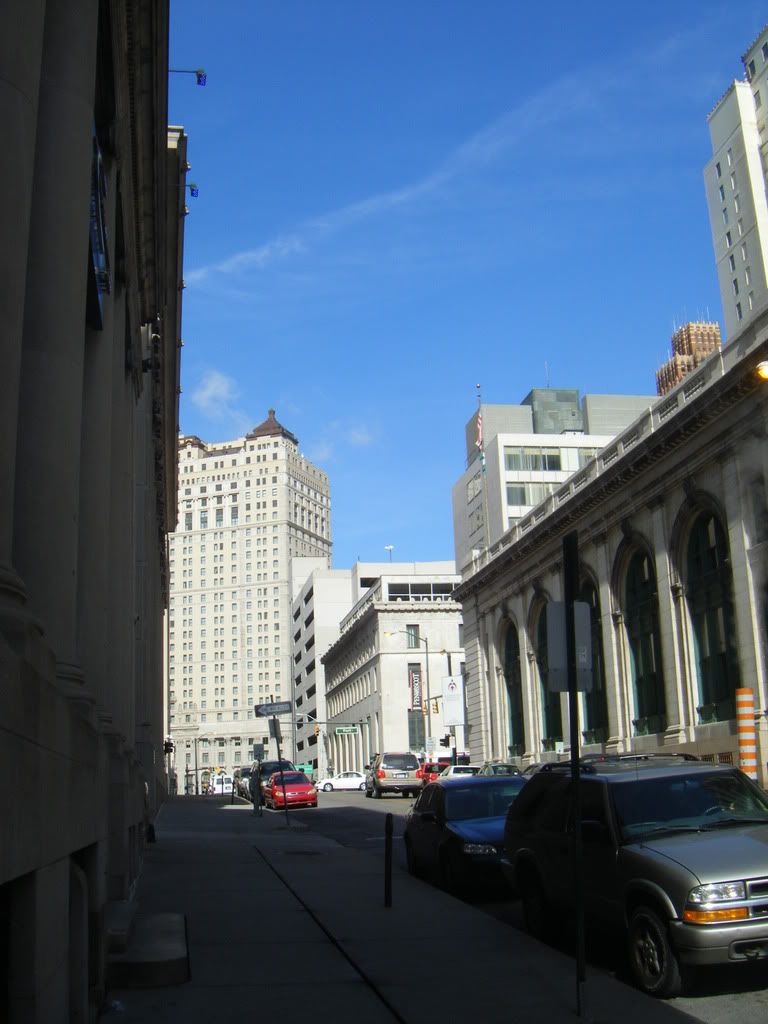
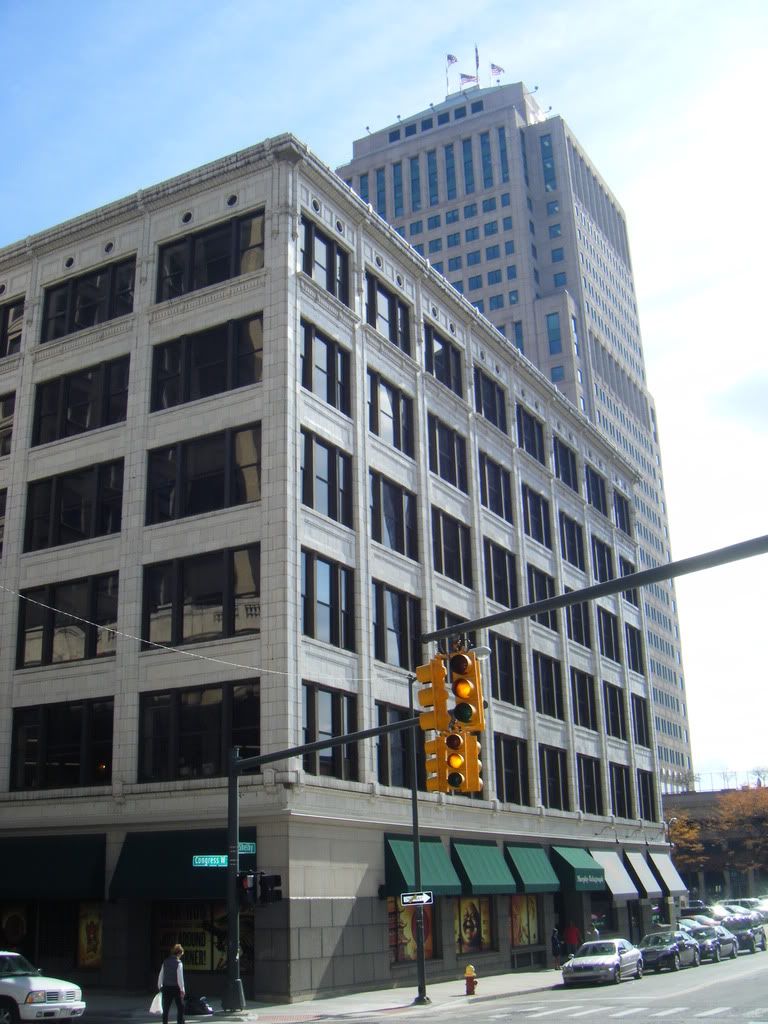
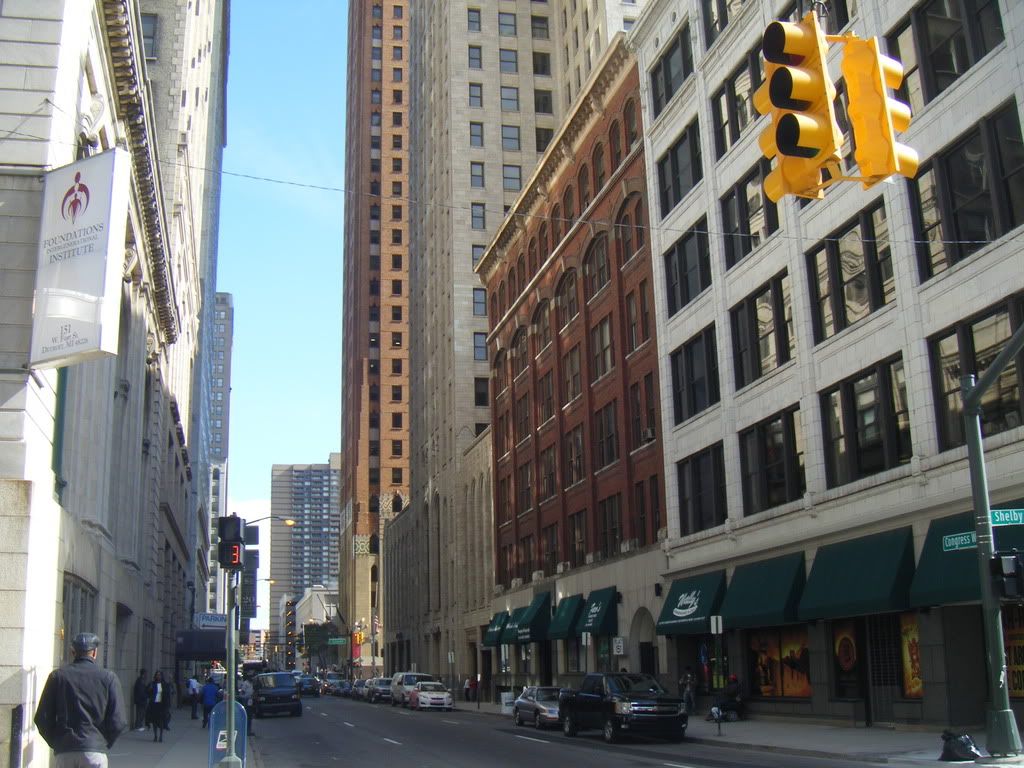
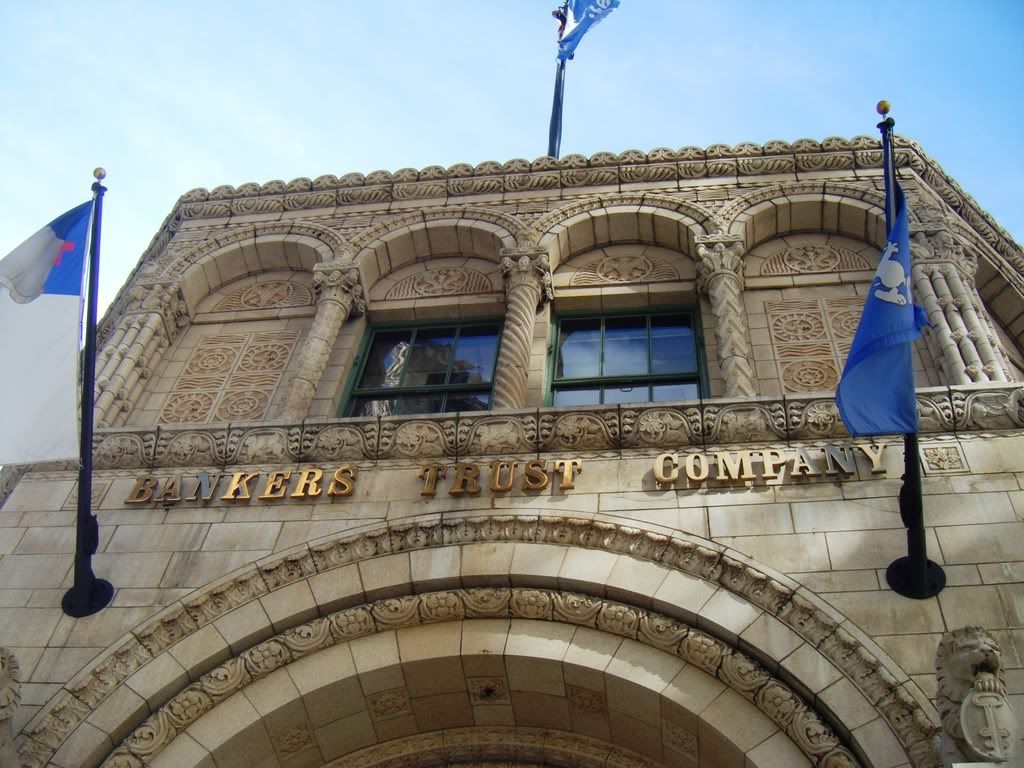


 This was my FB pic for awhile!
This was my FB pic for awhile!
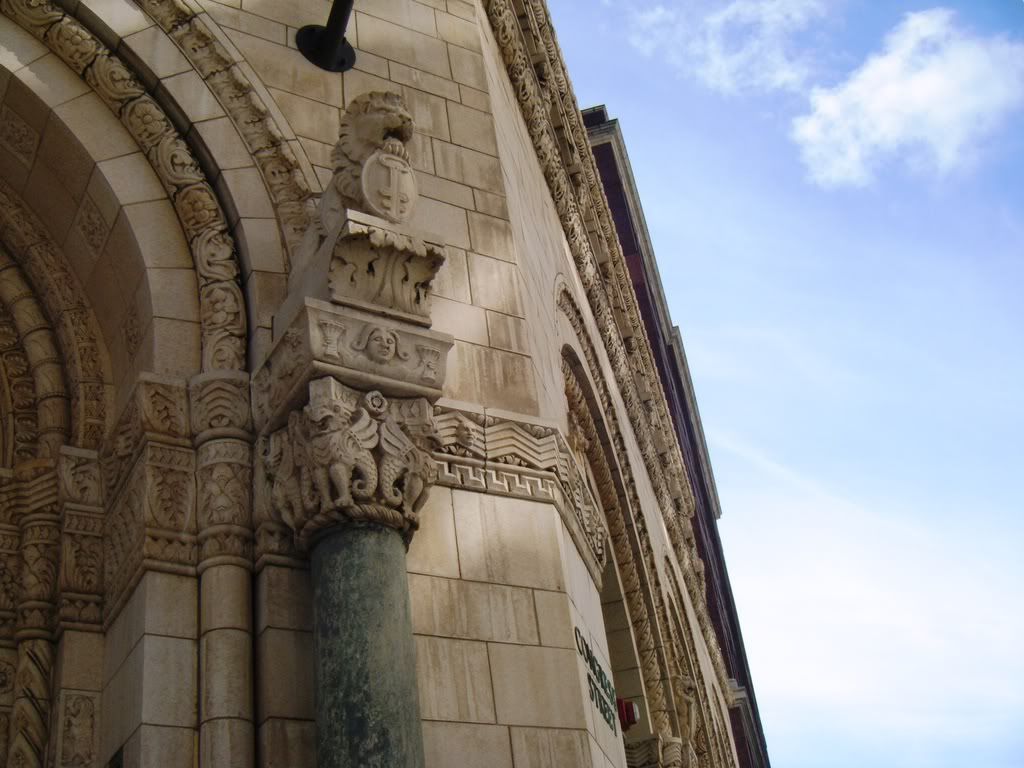
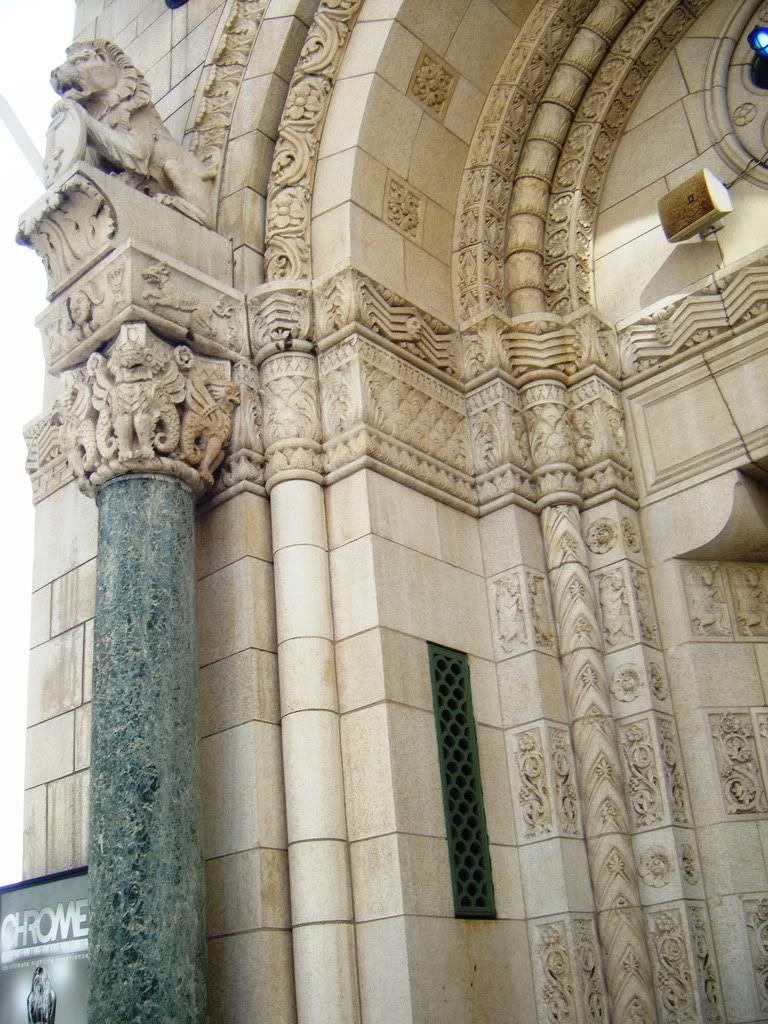

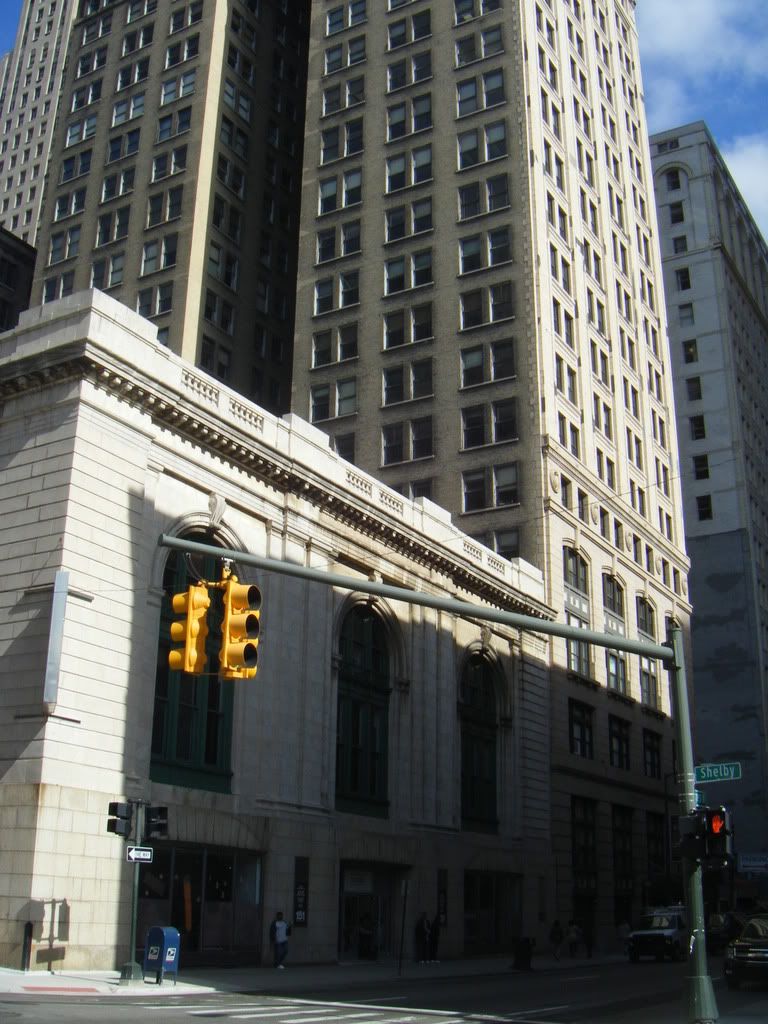

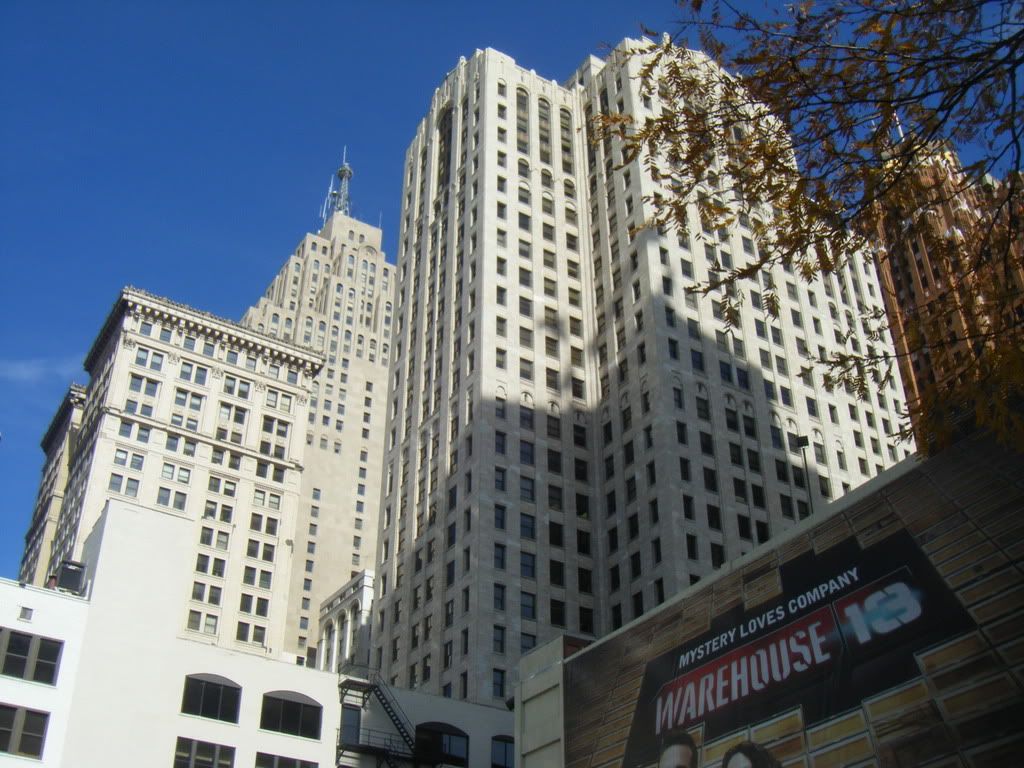
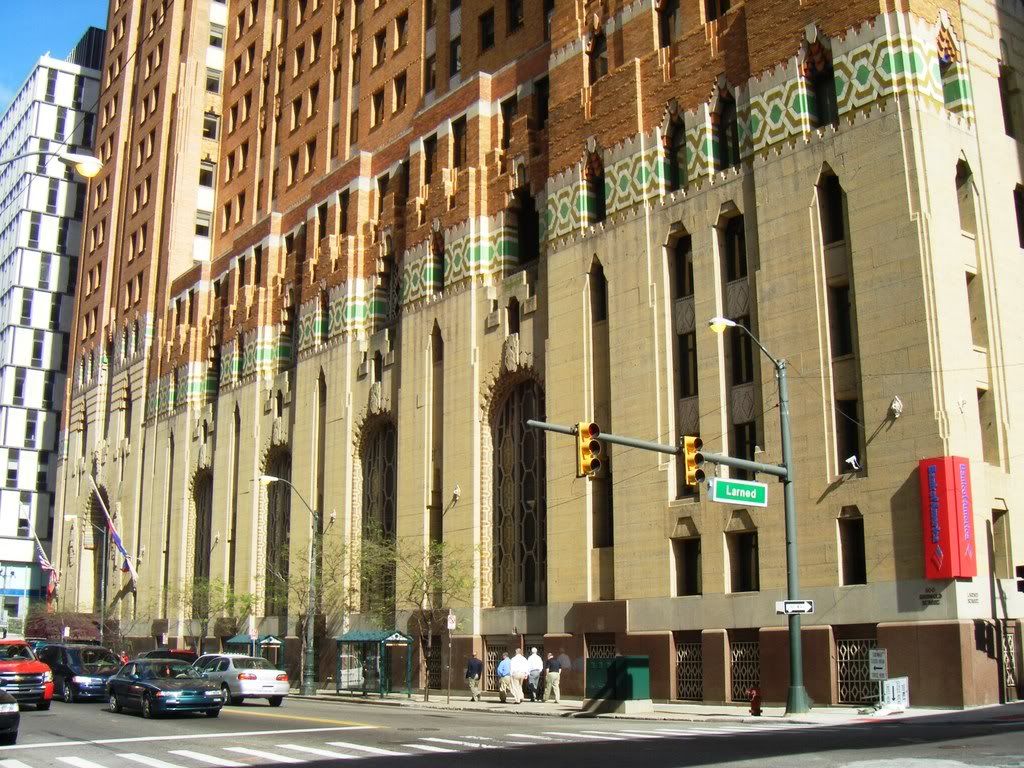
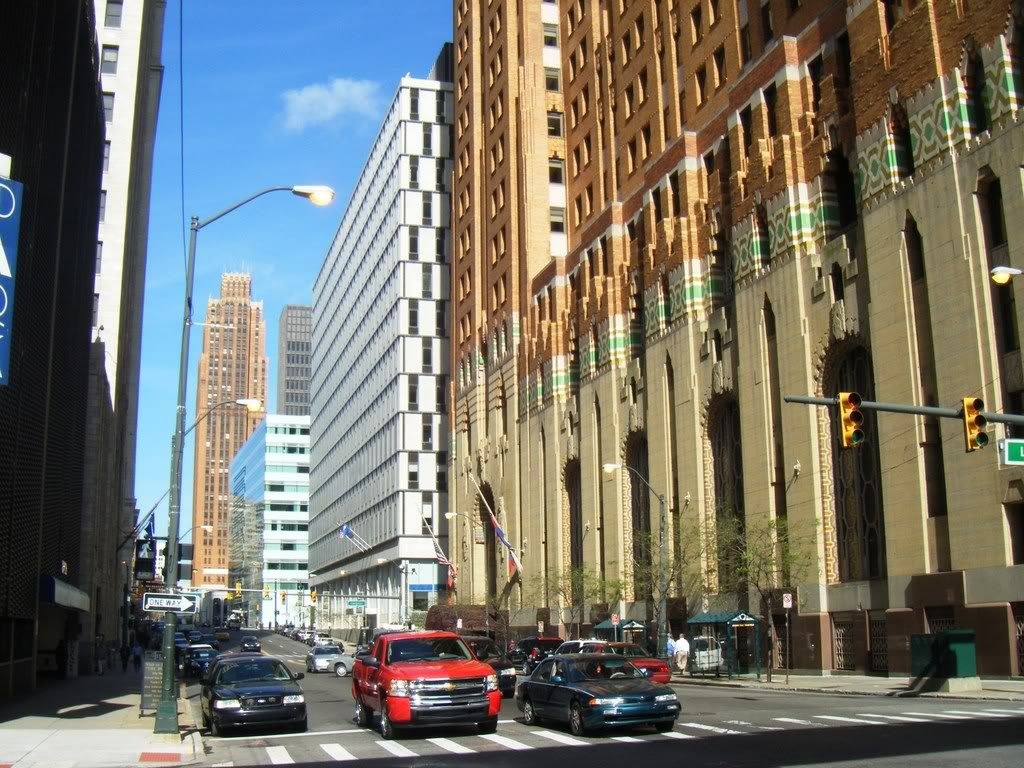
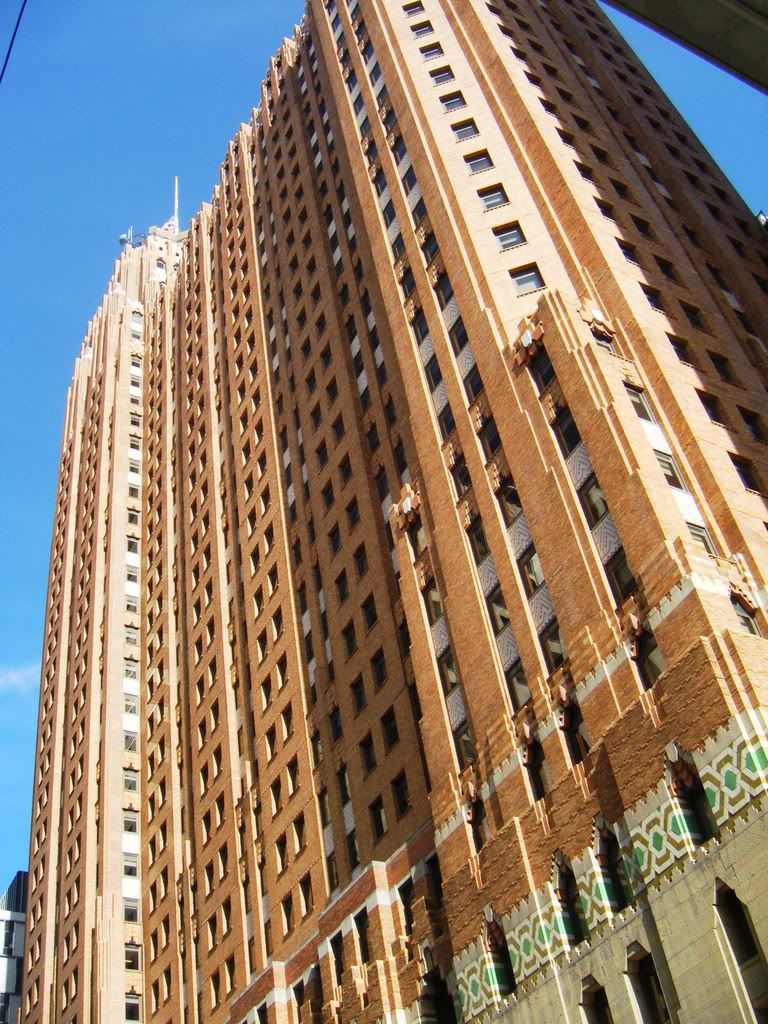
Back to Woodward
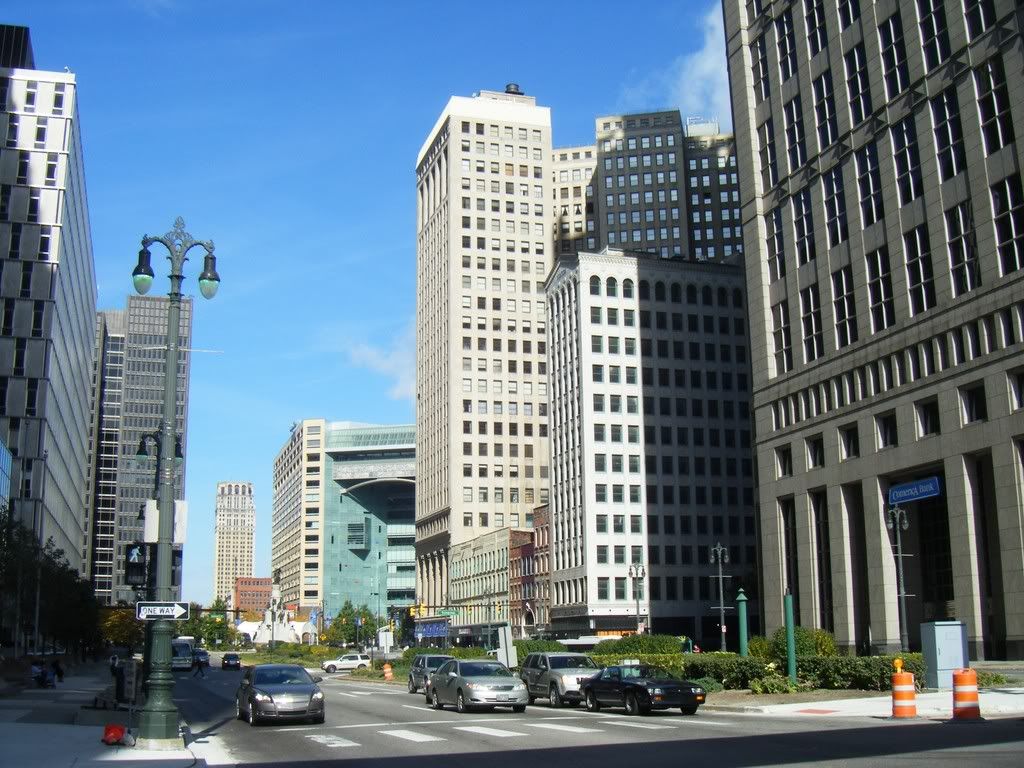

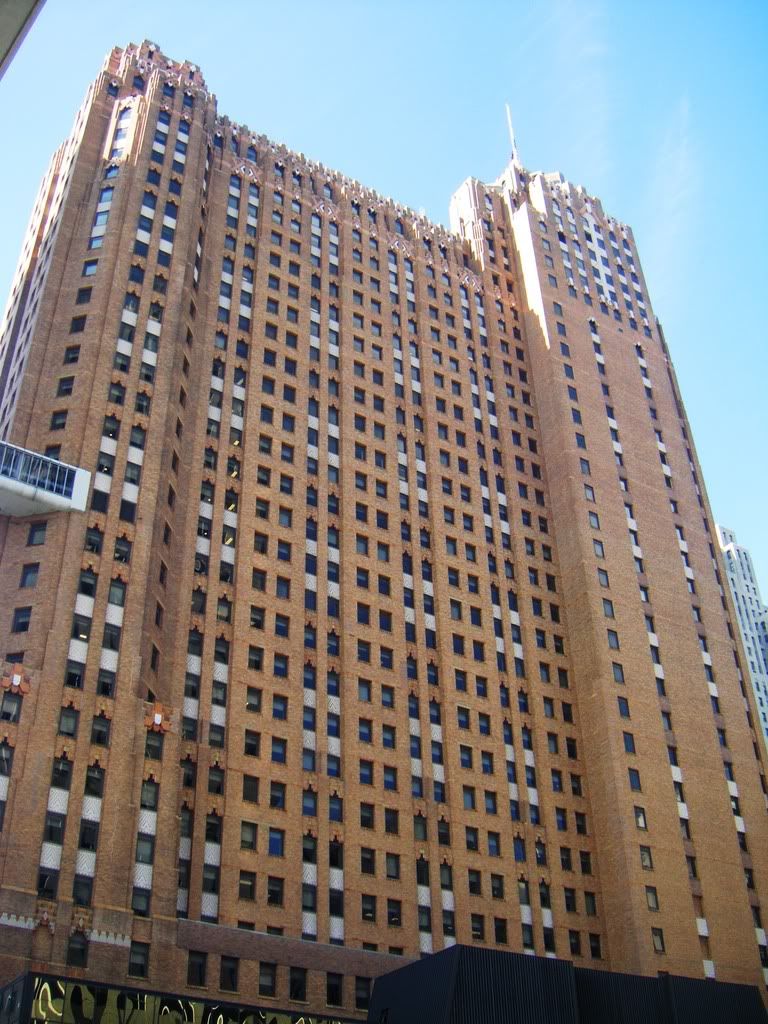


Thanks for stopping by everyone. I greatly appreciate it! This will be the last big set of Downtown photos. Next stop, Brush Park!

Campus Martius/ John F. Kennedy Square
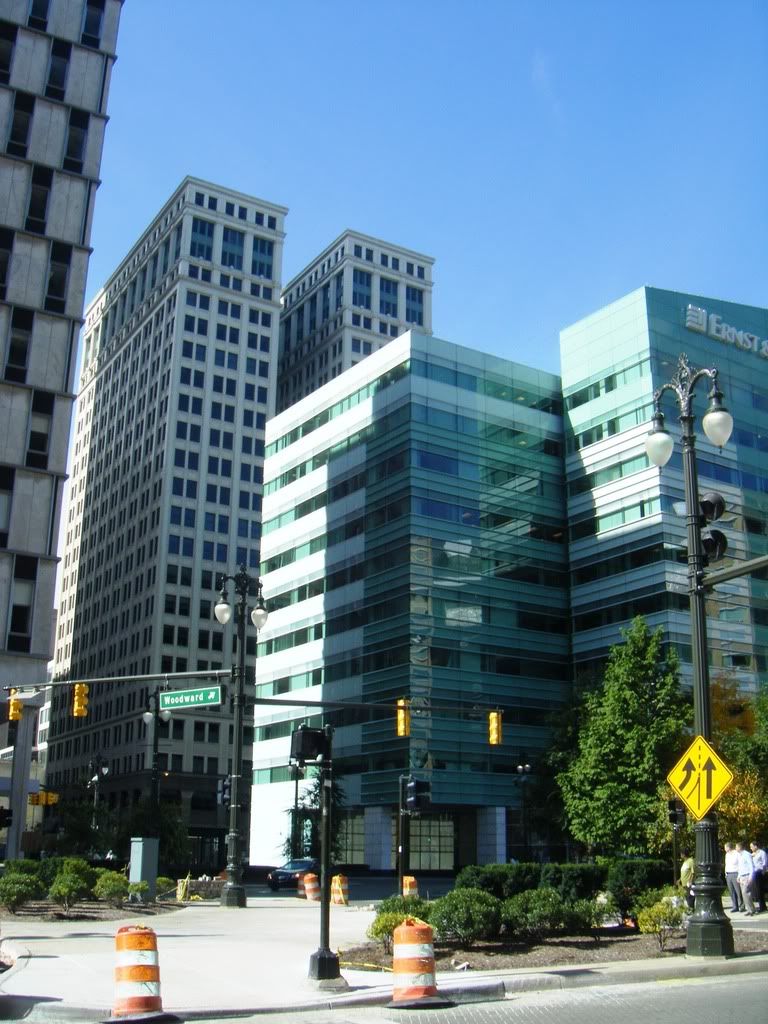
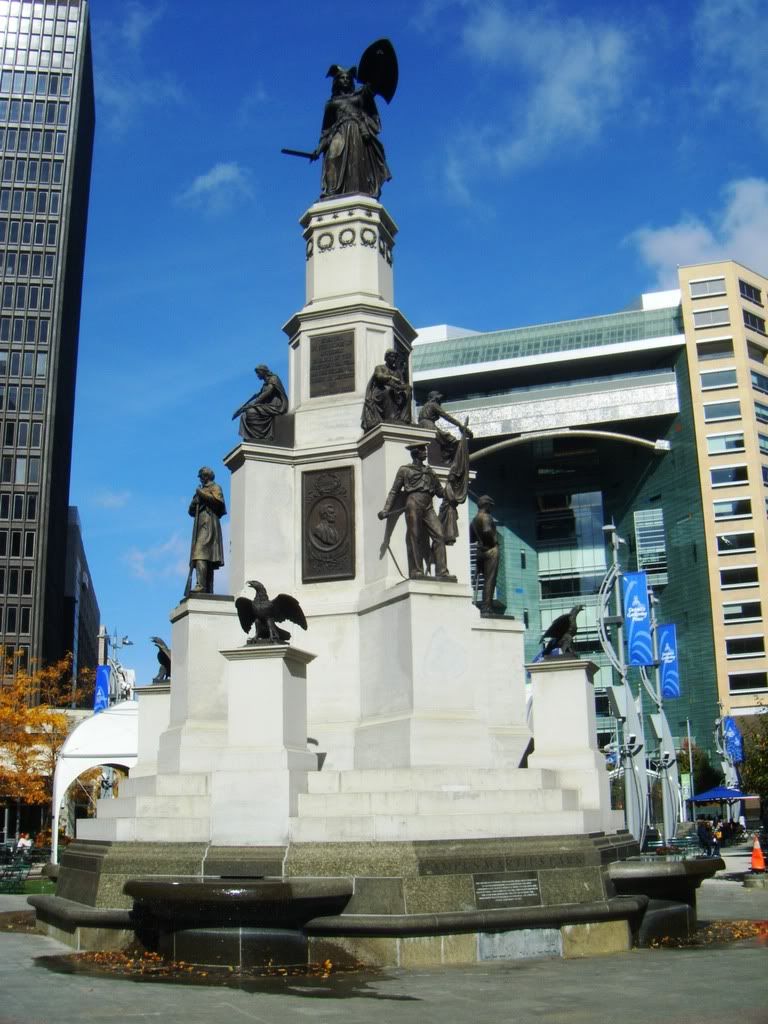


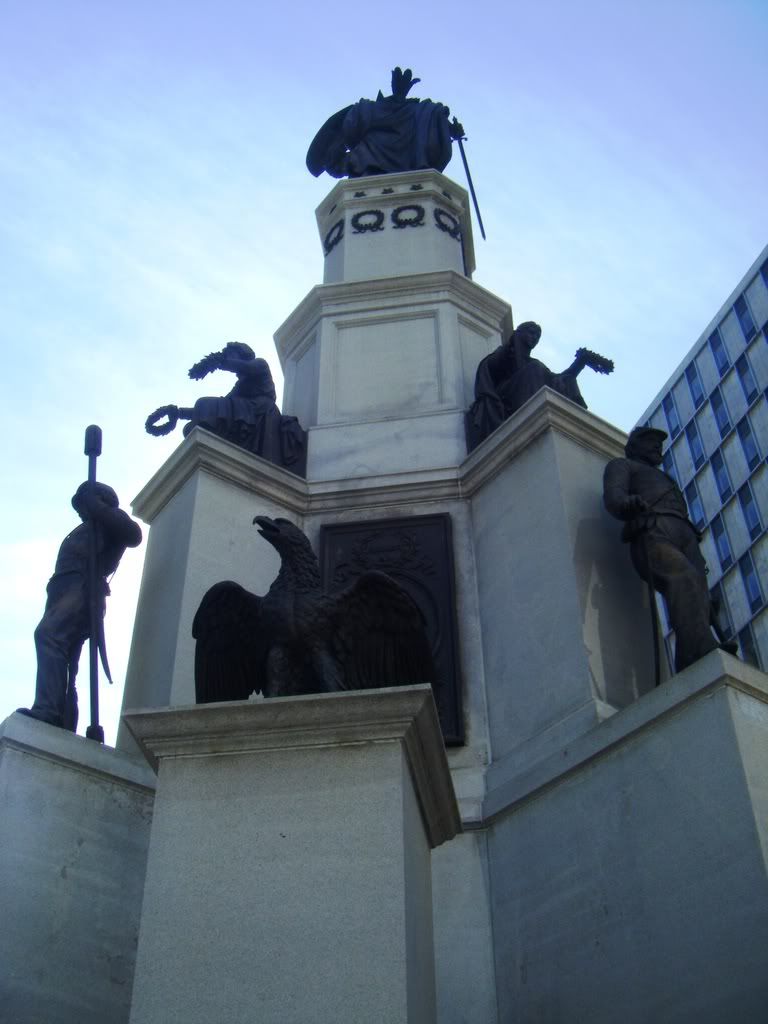
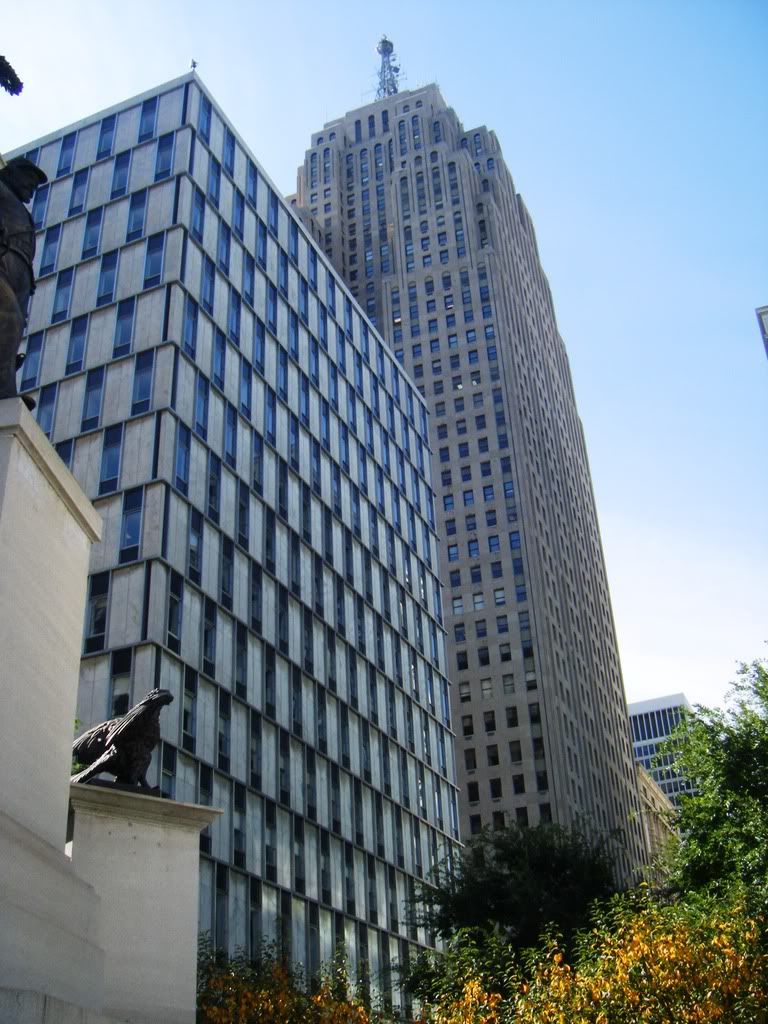

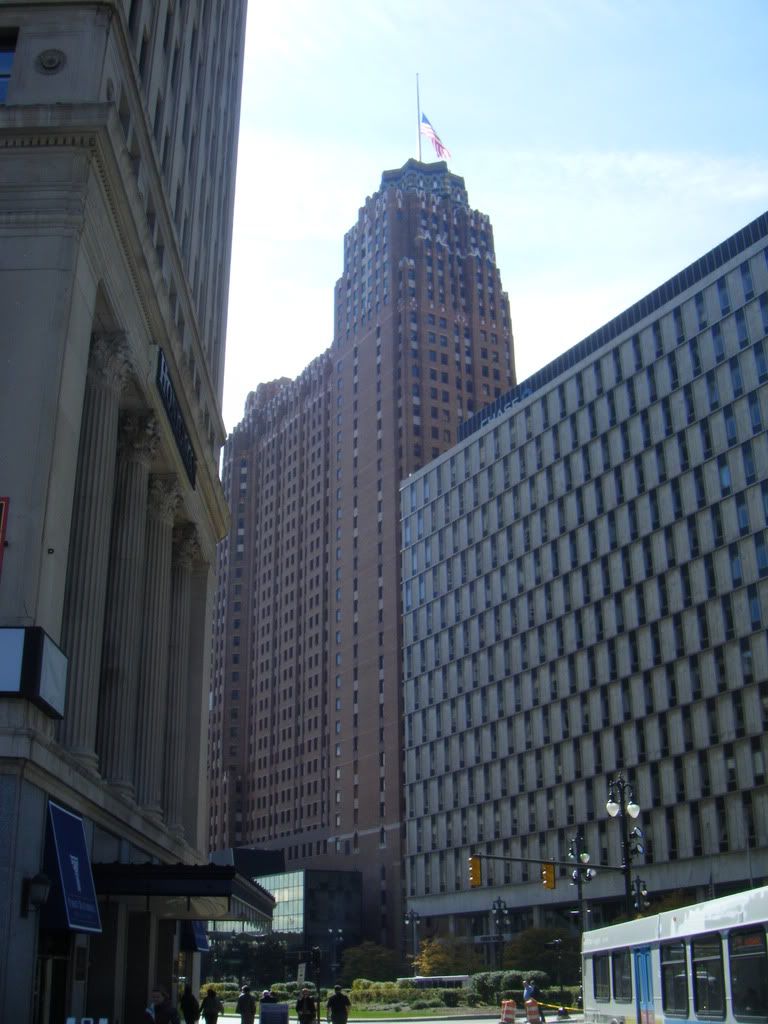
Cadillac Square
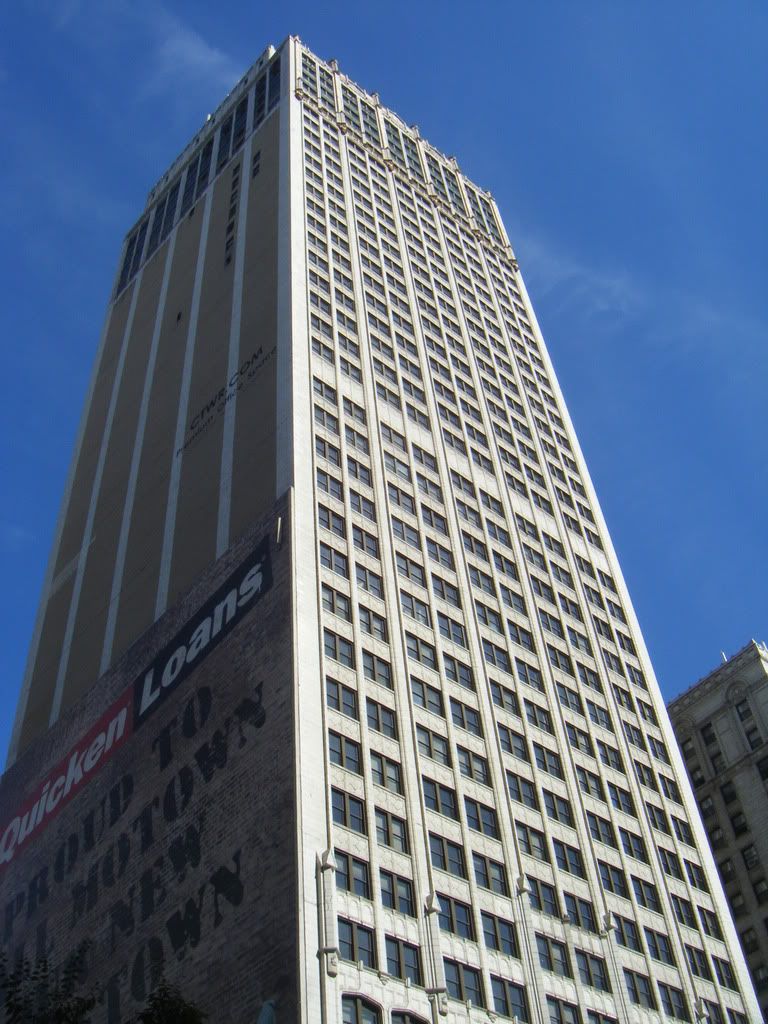

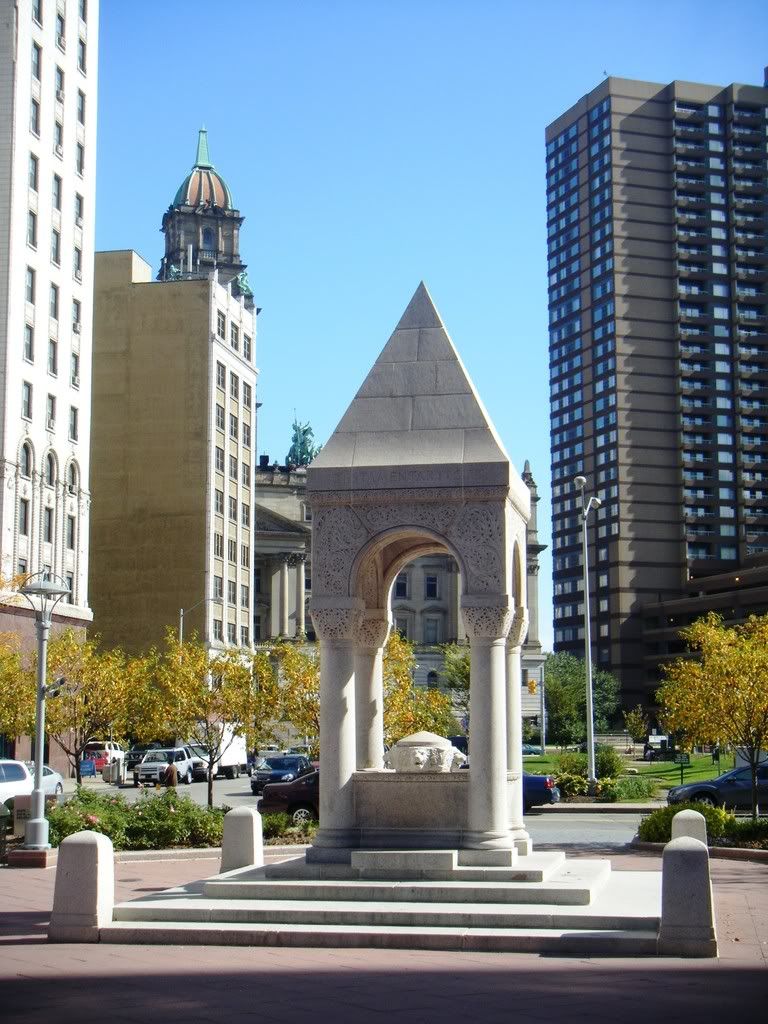
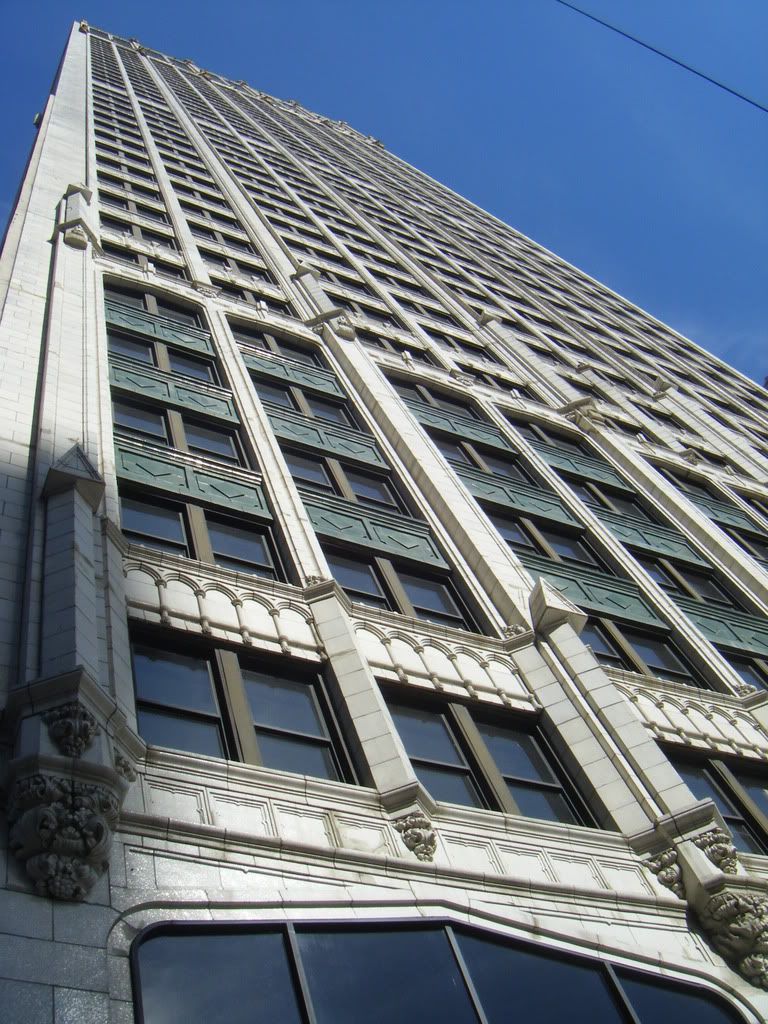
Wayne County building






 Cadillac Square Apartments! I could live there!
Cadillac Square Apartments! I could live there!
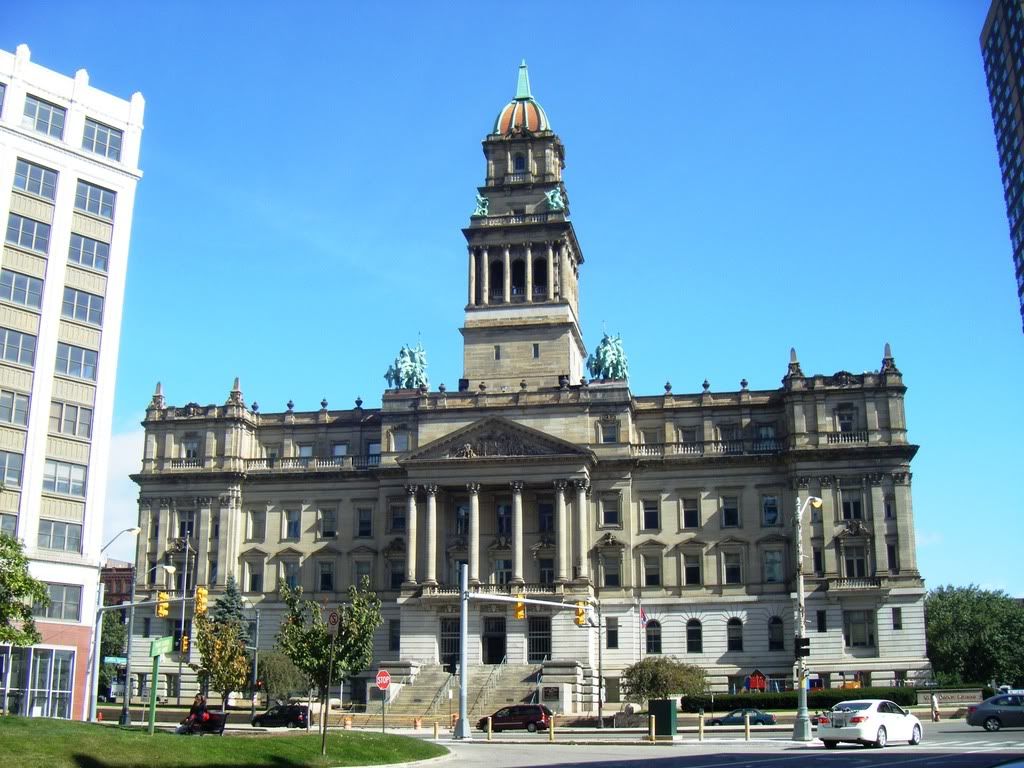



Heading down Woodward Avenue to Brush Park.
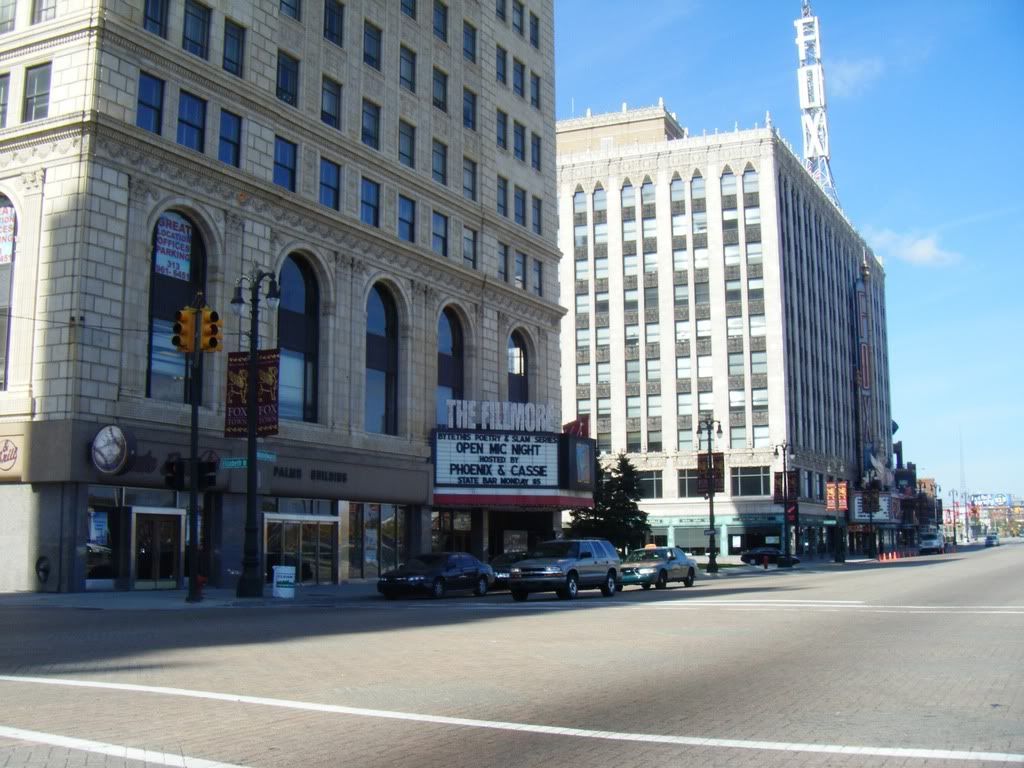
Brush Park
Brush Park Historic District is a 24 block neighborhood located within Midtown Detroit, Michigan and designated by the city. It is bounded by Mack on the north, Woodward Avenue on the west, Beaubien on the east, and the Fisher freeway on the south. The neighborhood is experiencing restorations of its historic Gilded Age Victorian style homes and luring new residents.
Woodward East Historic District
The Woodward East Historic District is a smaller historic district, recognized by the National Register of Historic Places, which is completely encompassed by the larger Brush Park neighborhood. The Woodward East Historic District is located on Alfred, Edmund, and Watson Streets from Brush Street to John R Street in Detroit, Michigan. Woodward East is particularly known for the High Victorian style residences constructed Detroit's wealthiest citizens. Although many of the once-grand houses have been demolished in recent years, those remaining exhibit a variety of Victorian style subtypes and architectural details, including Second Empire slate Mansard roofs, Romanesque columns and classical dentiled cornices.
Beginning in the 1850s, entrepreneur Edmund Brush, son of the city's second mayor from its first incorporation, began developing his family's property, located conveniently close to downtown, into a neighborhood for Detroit's elite citizens. Homes were built in Brush Park beginning in the 1850s and peaking in the 1870s and 1880s; one of the last homes built was constructed in 1906 by architect Albert Kahn for his personal use. Kahn lived in this home until his death in 1942, after which it was obtained by the Detroit Urban League, which still uses it today. Other early residents of Brush Park included lumber baron David Whitney Jr., his daughter Grace Whitney Evans, Joseph L. Hudson, founder of the eponymous department store, lumber baron Lucien Moore, banker Frederick Butler, merchant John P. Fiske, Dime Savings Bank founder William Livingston, and dry goods manufacturer Ransom Gillis. In the late 19th century, the Brush Park neighborhood became known as the "Little Paris of the Midwest."
William Livingstone House on Eliot Street, constructed in 1893, was among the oldest historic properties that had fallen into decay; it was demolished September 15, 2007. Architects who designed these mansions included Henry T. Brush, George D. Mason, George W. Nettleton, and Albert Kahn. The French Renaissance style William Livingston House (1892–93) at 294 Elliot was Albert Kahn's first commission. Livingston founded the Dime Savings Bank. Artist Lowell Bioleau commorated the William Livingston House in a painting entitled Open House which he unveiled the day of its demolition September 15, 2007, underscoring preservationist efforts. As of 2001, about 154 original structures remained in the area. During the 19th century, around 300 homes were built in Brush Park, including 70 Victorian mansions. However, the neighborhood began to decline in the late 19th and early 20th century, when the advent of streetcars and then automobiles allowed prosperous citizens to live further from downtown. Early residents moved out, notably to up-and-coming neighborhoods such as Indian Village and Boston-Edison, and the neighborhood became less fashionable. During the Great Depression, many of the older mansions were subdivided into apartments, and as houses aged in the post World War II era, some became unoccupied and fell into disrepair.
Brush Park's revival began in the 1990s and has accelerated recently. A number of the older mansions have been restored, and more have been stabilized. In addition, new condominiums have been built in the southern part of Brush Park, near the Fisher Freeway. Brush Park Historic District's general boundaries are Woodward Avenue, Mack, Beaubien, and the Fisher Freeway.
Almund Place
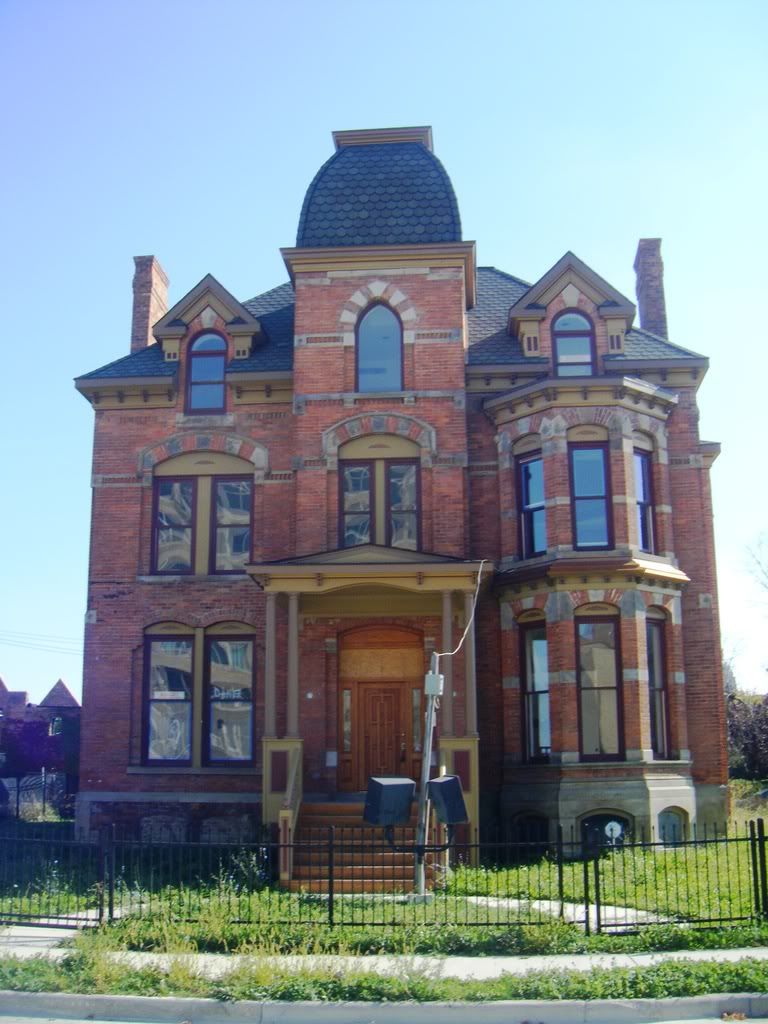
 Originally owned by lumber baron Lucien Moore, 104 Edmund Place, a French Renaissance Gothic Revival style mansion restored in 2006, has 7,000 sq ft (650 m2). The Lucien Moore House restoration was featured December 27, 2005 by HGTV's restore America Initiative in partnership with the National Trust for Historic Preservation
Originally owned by lumber baron Lucien Moore, 104 Edmund Place, a French Renaissance Gothic Revival style mansion restored in 2006, has 7,000 sq ft (650 m2). The Lucien Moore House restoration was featured December 27, 2005 by HGTV's restore America Initiative in partnership with the National Trust for Historic Preservation
John R Street

Almund Place
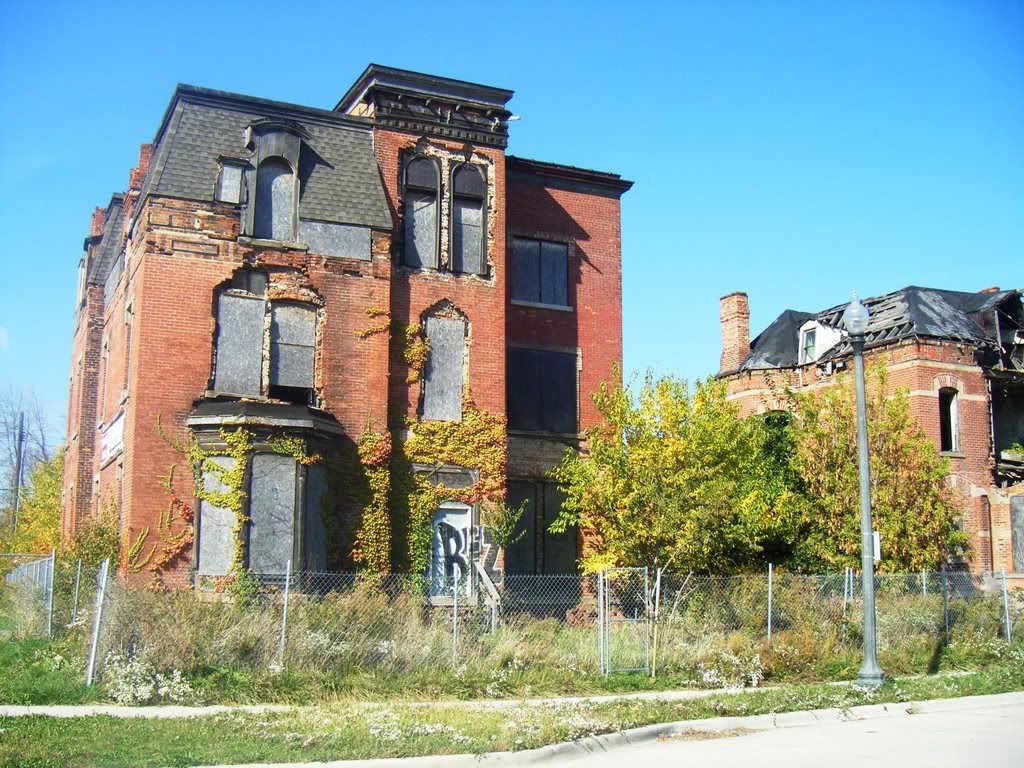
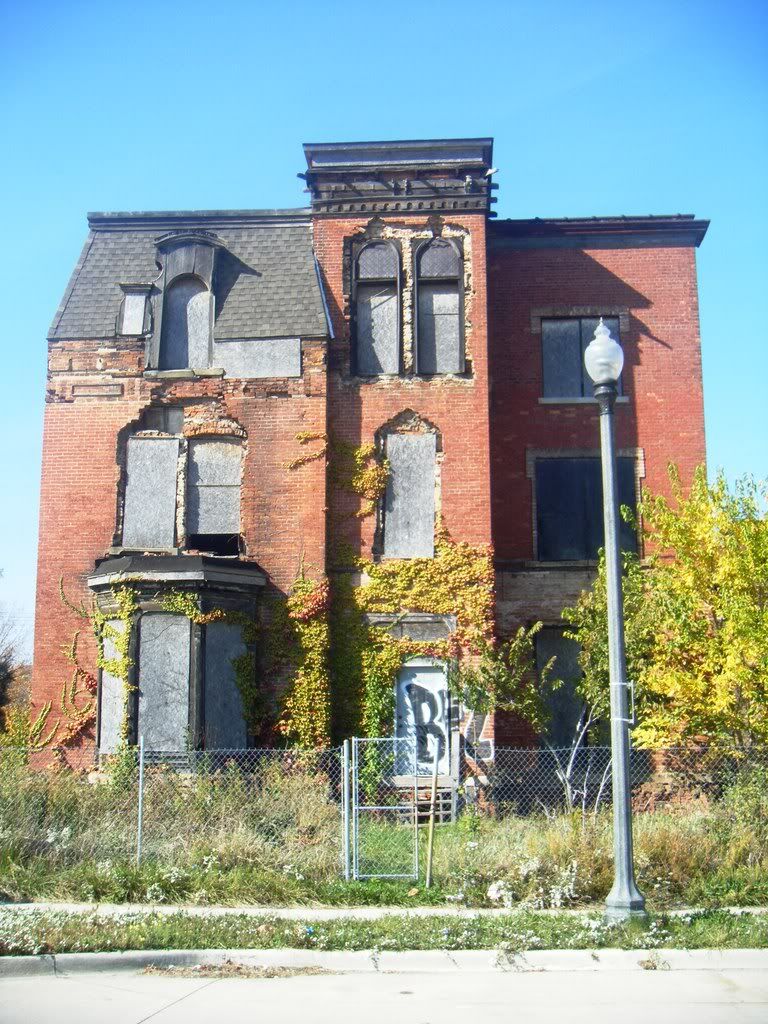
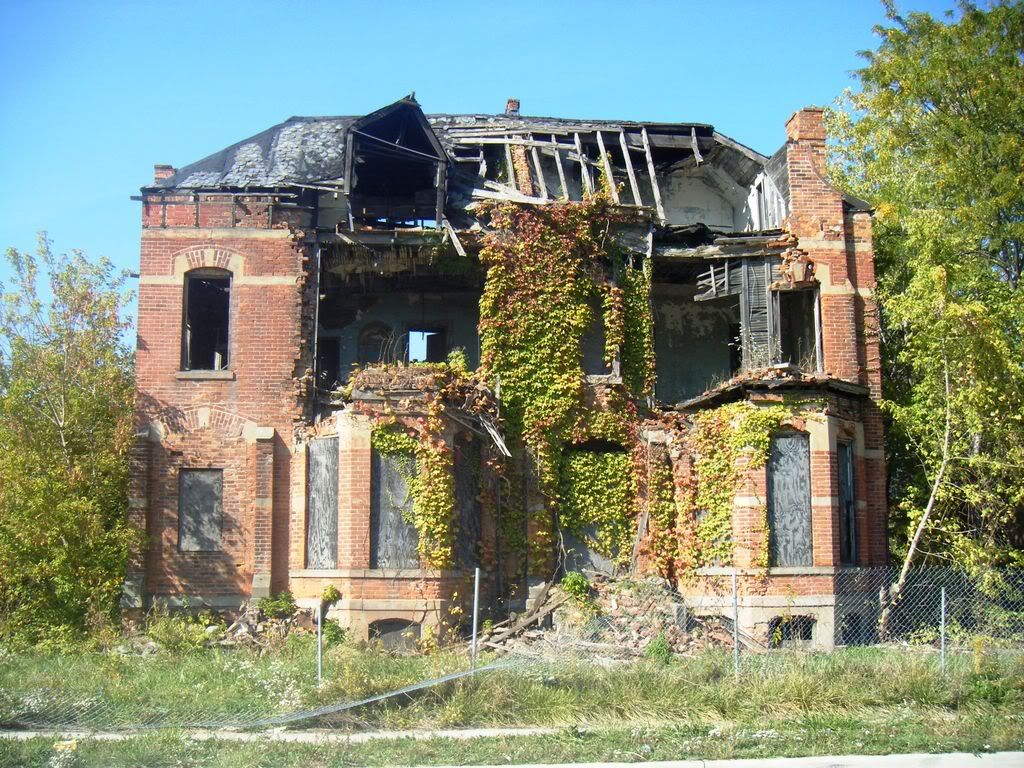
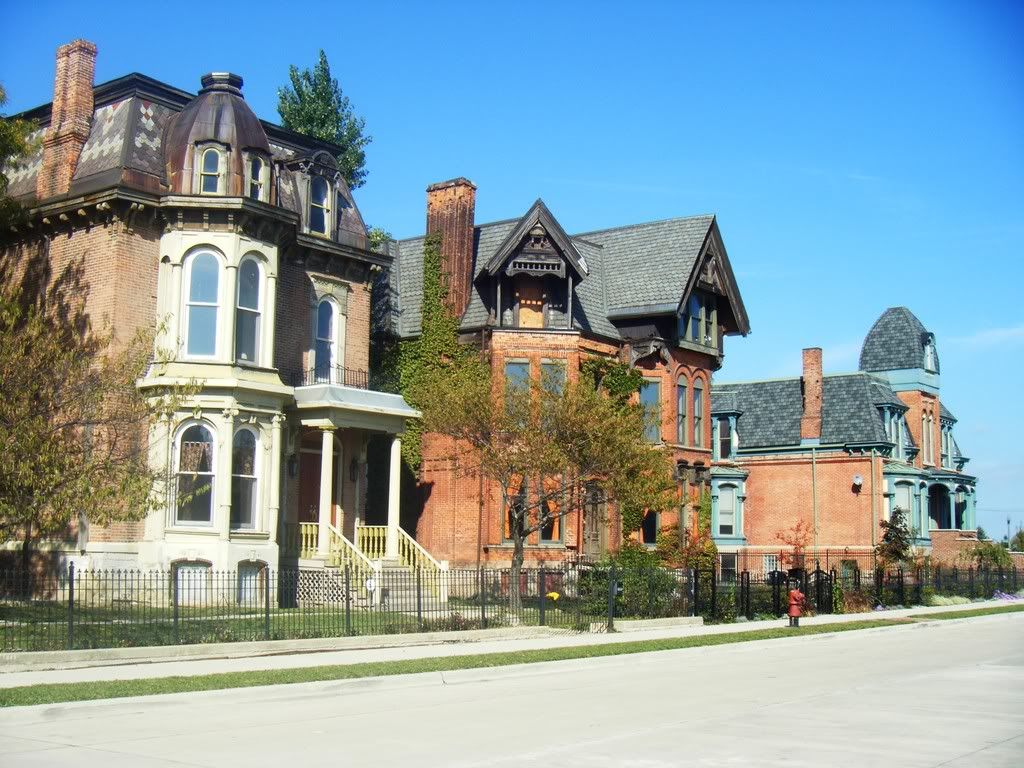
 Left to Right. John P. Fiske, was a Detroit merchant of china and crockery. The house is within the Woodward East Historic District. Originally owned by George Ladve, 269 Edmund Pl., an Eastlake Victorian style mansion built in 1882 and restored in 2008, contains 7,400 sq ft (690 m2). Ladve had owned a carpet and upholstery company. In the late 1890s, the Frohlich family added a music room. Frohlich was among the original philanthropists to the Detroit Symphony Orchestra. Built in 1882, the Frederick Butler House at 291 Edmund Place is a French Renaissance Second Empire style mansion with a Mansard roof which was restored in 2006 and contains 8,400 sq ft (780 m2). It is located near Edmund Pl. and Brush St. within the Woodward East Historic District. The original ownwer, Frederick Butler was a banker.
Left to Right. John P. Fiske, was a Detroit merchant of china and crockery. The house is within the Woodward East Historic District. Originally owned by George Ladve, 269 Edmund Pl., an Eastlake Victorian style mansion built in 1882 and restored in 2008, contains 7,400 sq ft (690 m2). Ladve had owned a carpet and upholstery company. In the late 1890s, the Frohlich family added a music room. Frohlich was among the original philanthropists to the Detroit Symphony Orchestra. Built in 1882, the Frederick Butler House at 291 Edmund Place is a French Renaissance Second Empire style mansion with a Mansard roof which was restored in 2006 and contains 8,400 sq ft (780 m2). It is located near Edmund Pl. and Brush St. within the Woodward East Historic District. The original ownwer, Frederick Butler was a banker.
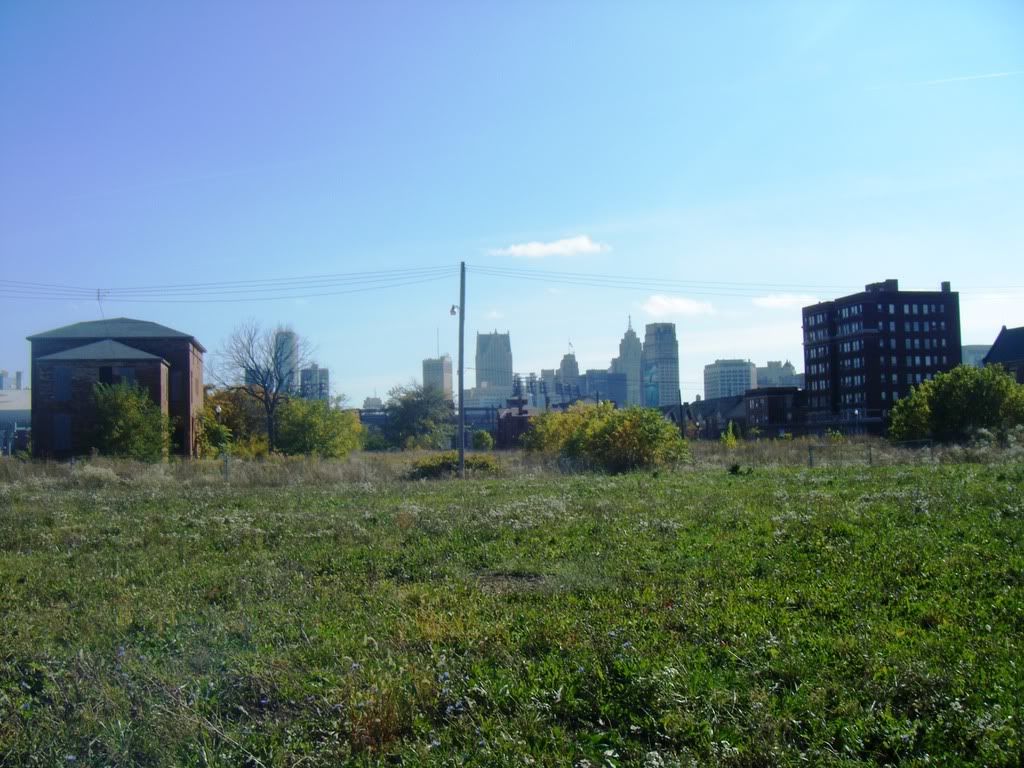

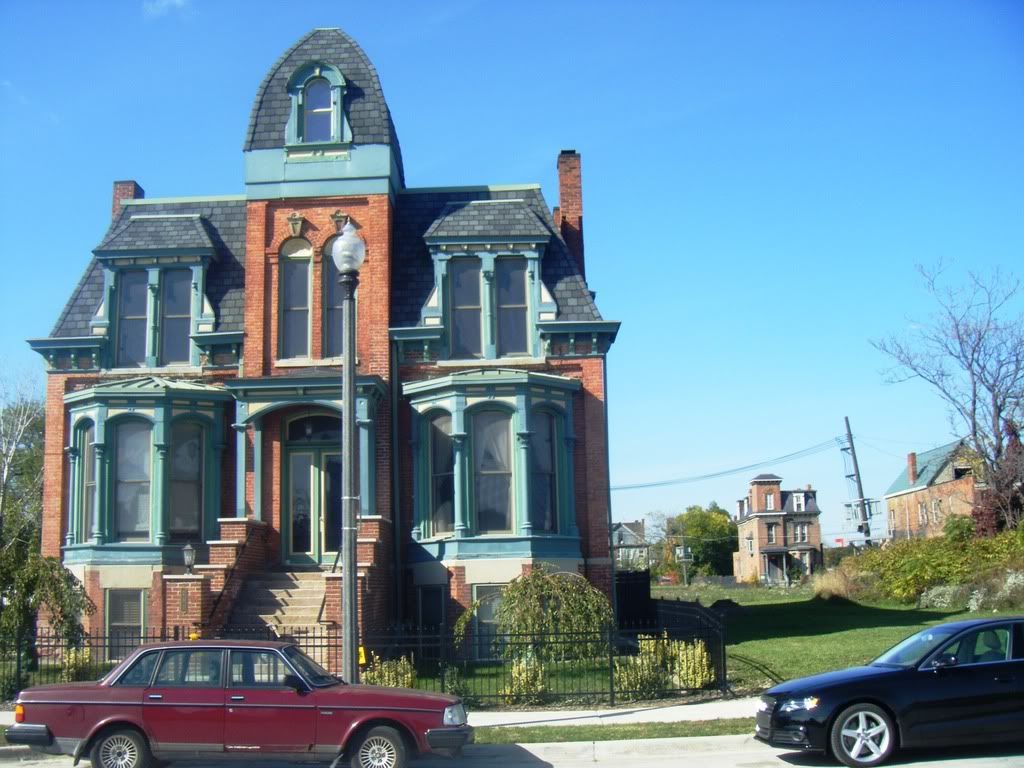
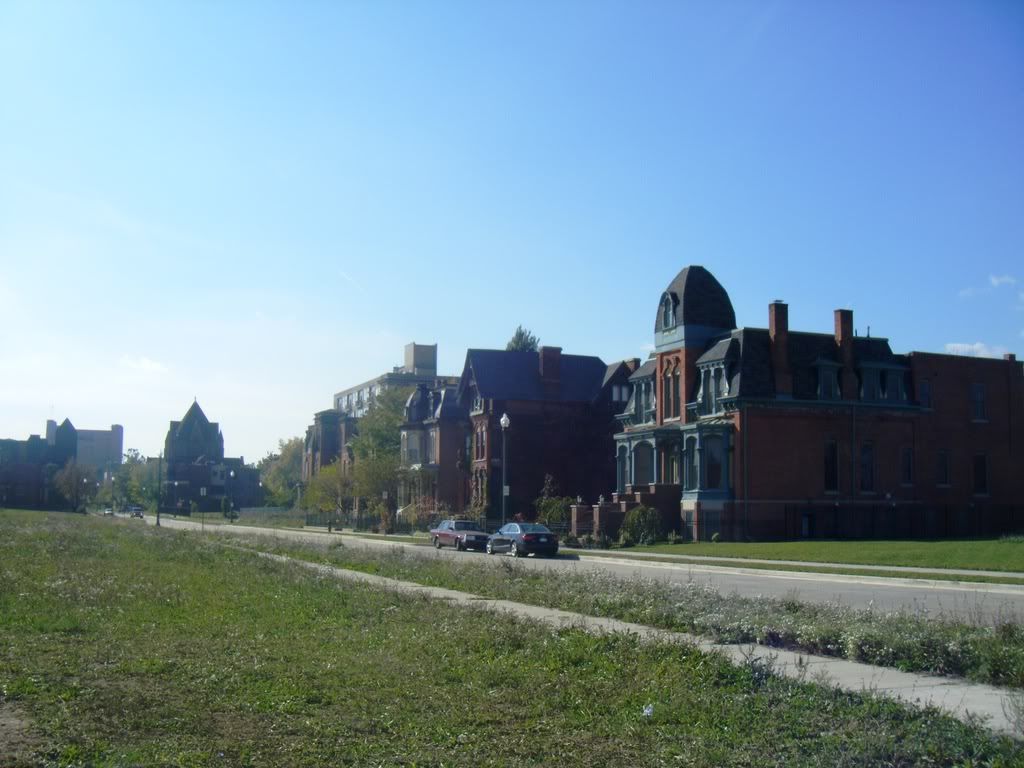
Alfred Street

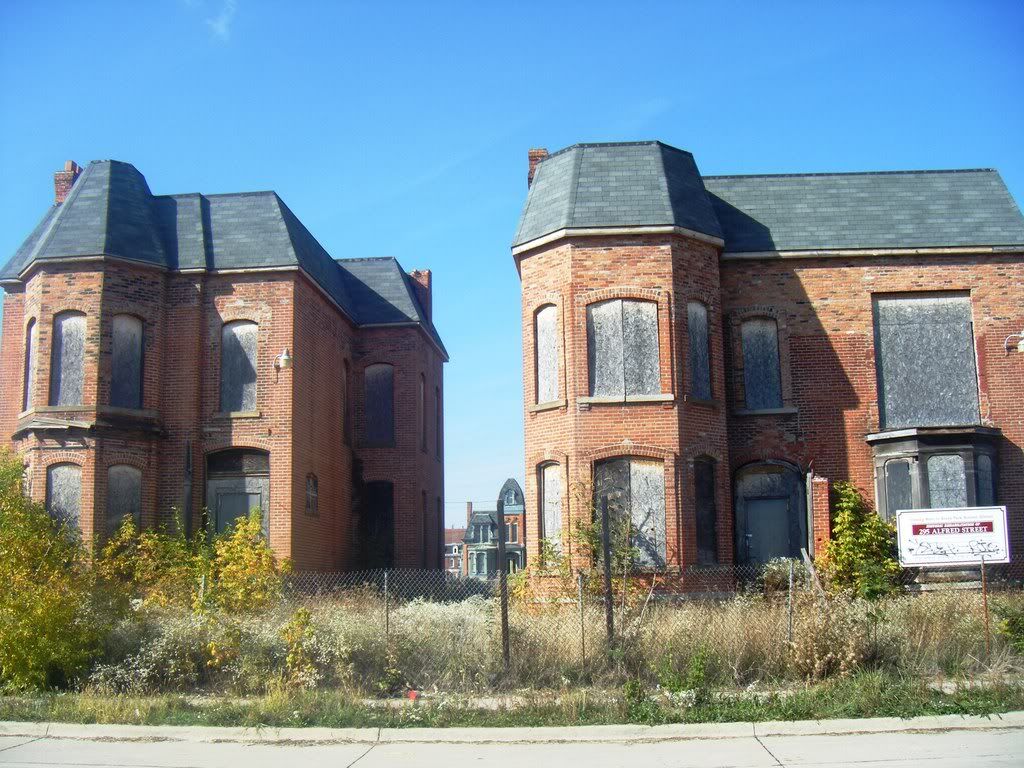
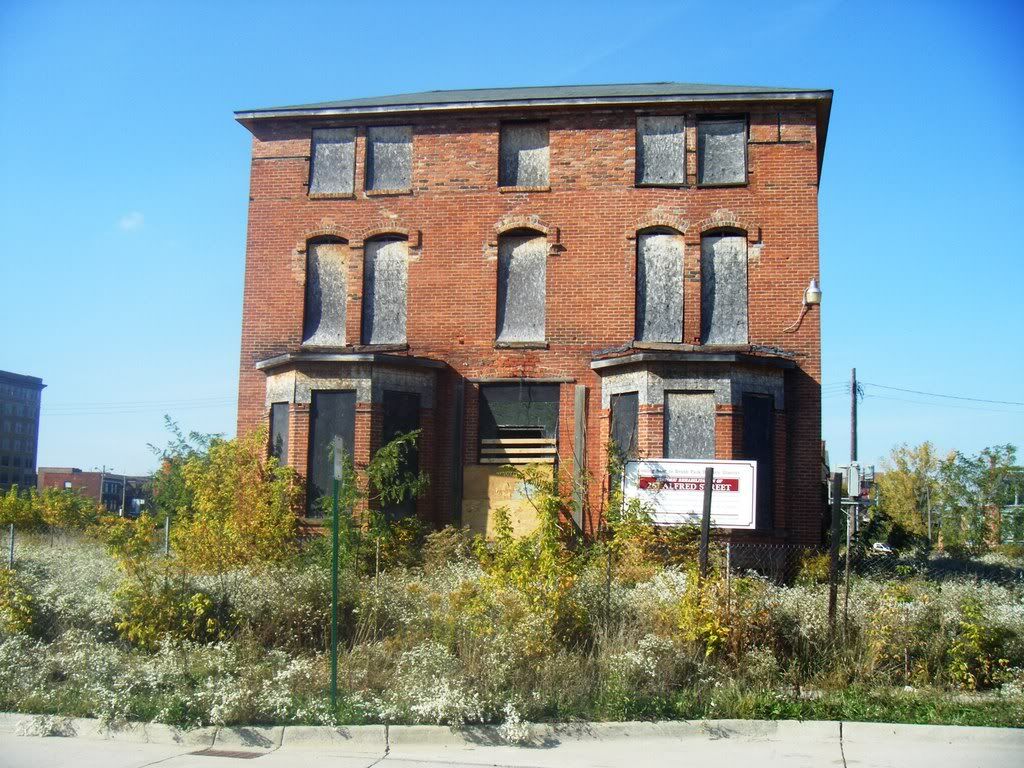
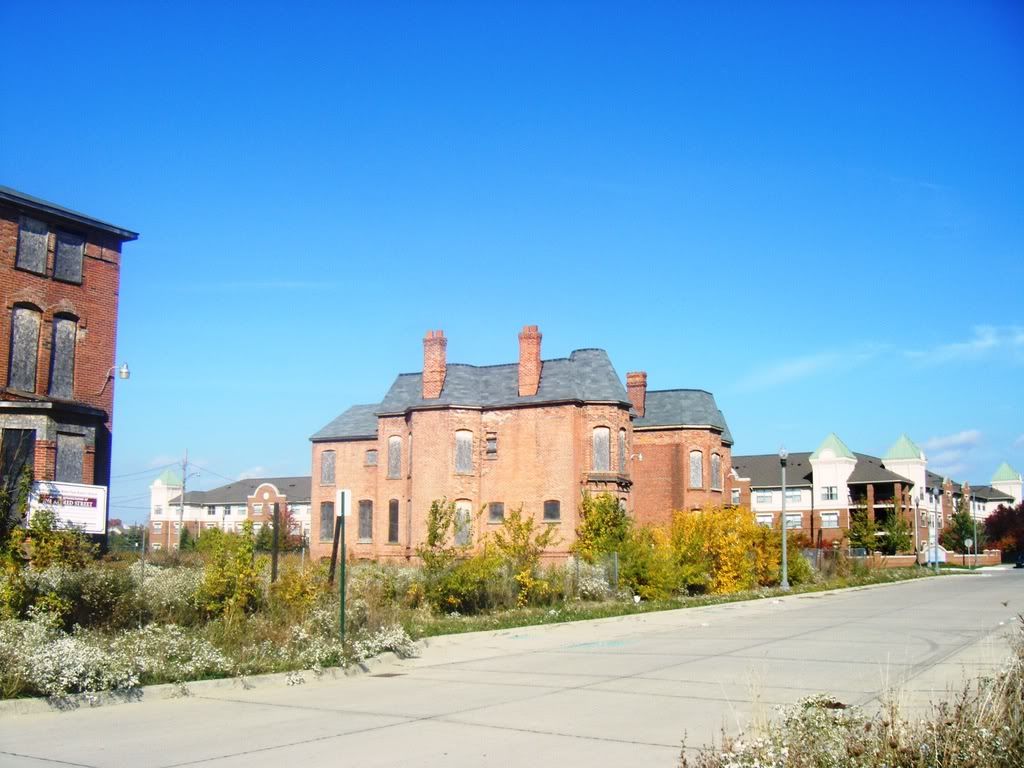


 Also known as the Joseph Lothian Hudson House or the Grace Whitney Evans House. The house was a gift from David Whitney Jr. to his daughter Grace upon her marriage to John Evans in 1872. It later became the J.L. Hudson family residence. Listed on the National Register of Historic Places
Also known as the Joseph Lothian Hudson House or the Grace Whitney Evans House. The house was a gift from David Whitney Jr. to his daughter Grace upon her marriage to John Evans in 1872. It later became the J.L. Hudson family residence. Listed on the National Register of Historic Places

 The French Renaissance, Second Empire style, Elisha Taylor House with its mansard roof was built for William H. Craig, a Detroit land speculator. In 1875, Craig sold the house to attorney Elisha Taylor. Taylor was a Detroit attorney who held many offices during his career, including City Attorney, assistant Michigan Attorney General from 1837 to 1841, and Circuit Court Commissioner from 1846 to 1854. The house is listed on the National Register of Historic Places.
The French Renaissance, Second Empire style, Elisha Taylor House with its mansard roof was built for William H. Craig, a Detroit land speculator. In 1875, Craig sold the house to attorney Elisha Taylor. Taylor was a Detroit attorney who held many offices during his career, including City Attorney, assistant Michigan Attorney General from 1837 to 1841, and Circuit Court Commissioner from 1846 to 1854. The house is listed on the National Register of Historic Places.
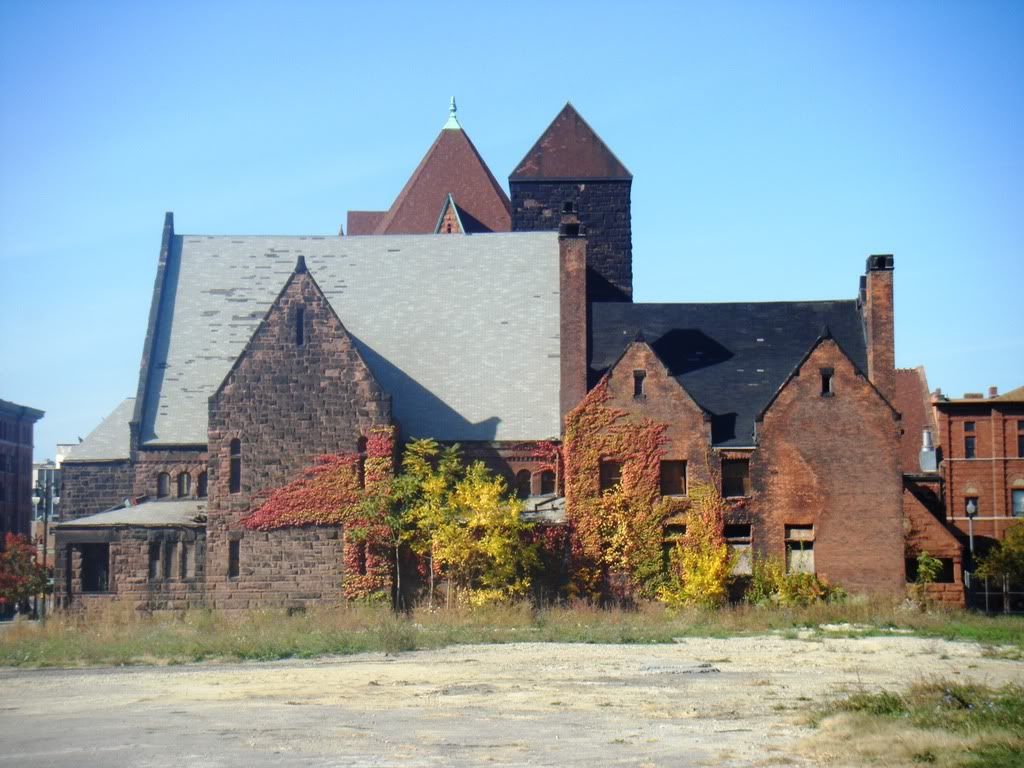
Woodward Avenue

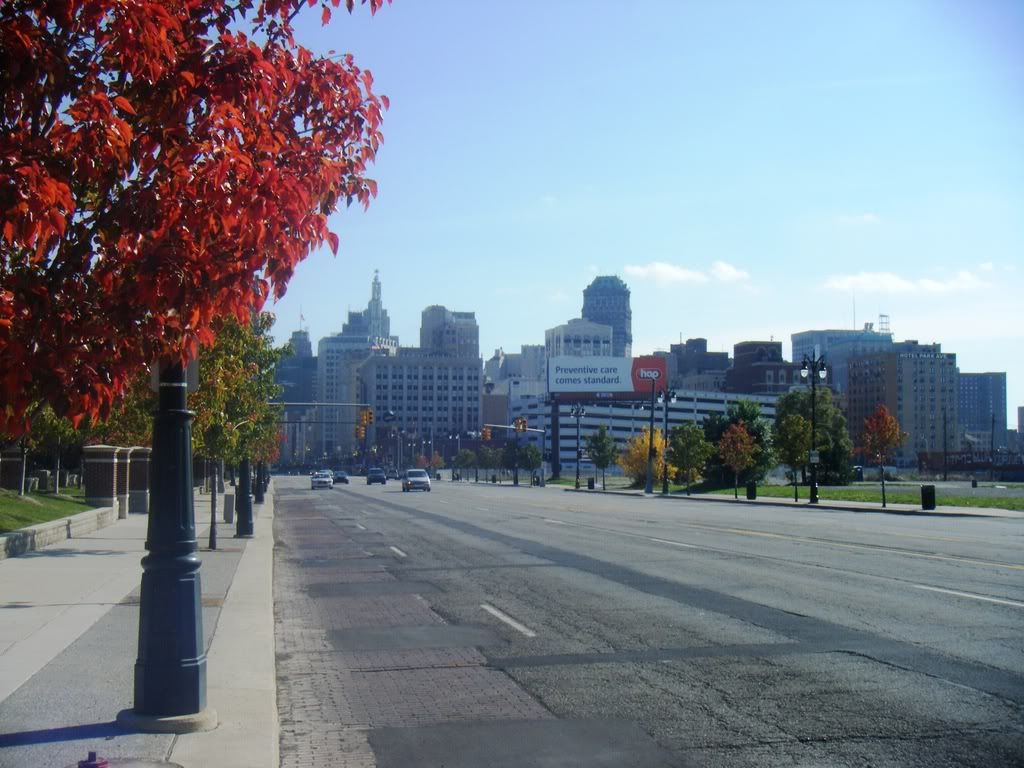
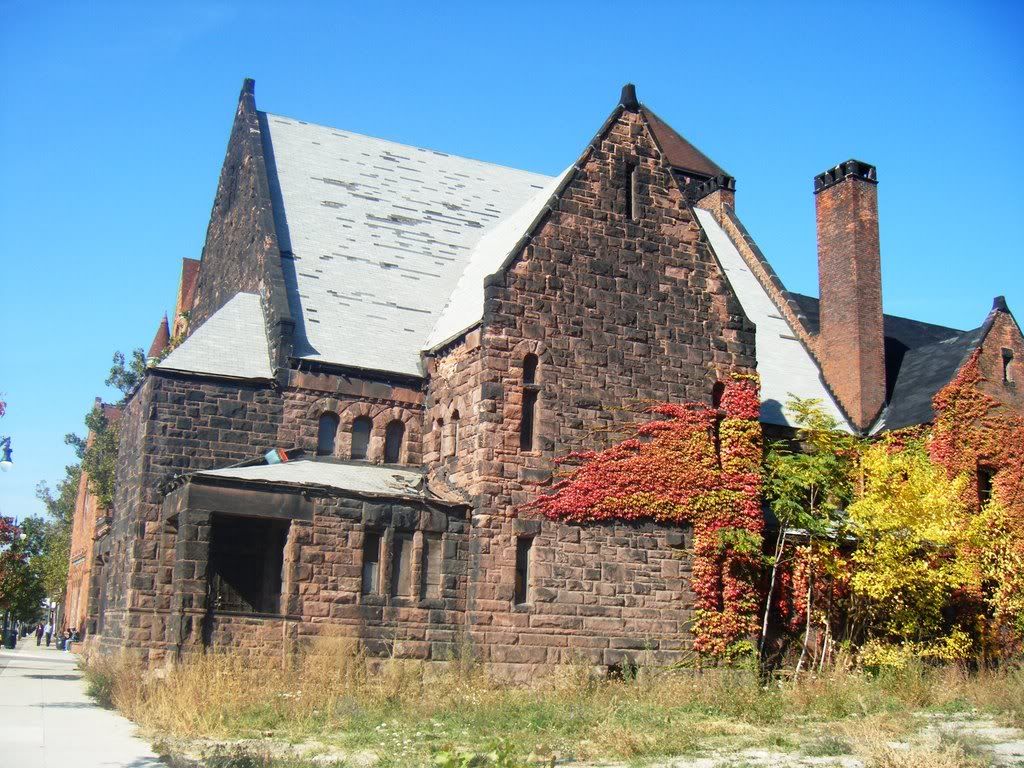
 First Unitarian Church of Detroit
First Unitarian Church of Detroit
Edmund Place
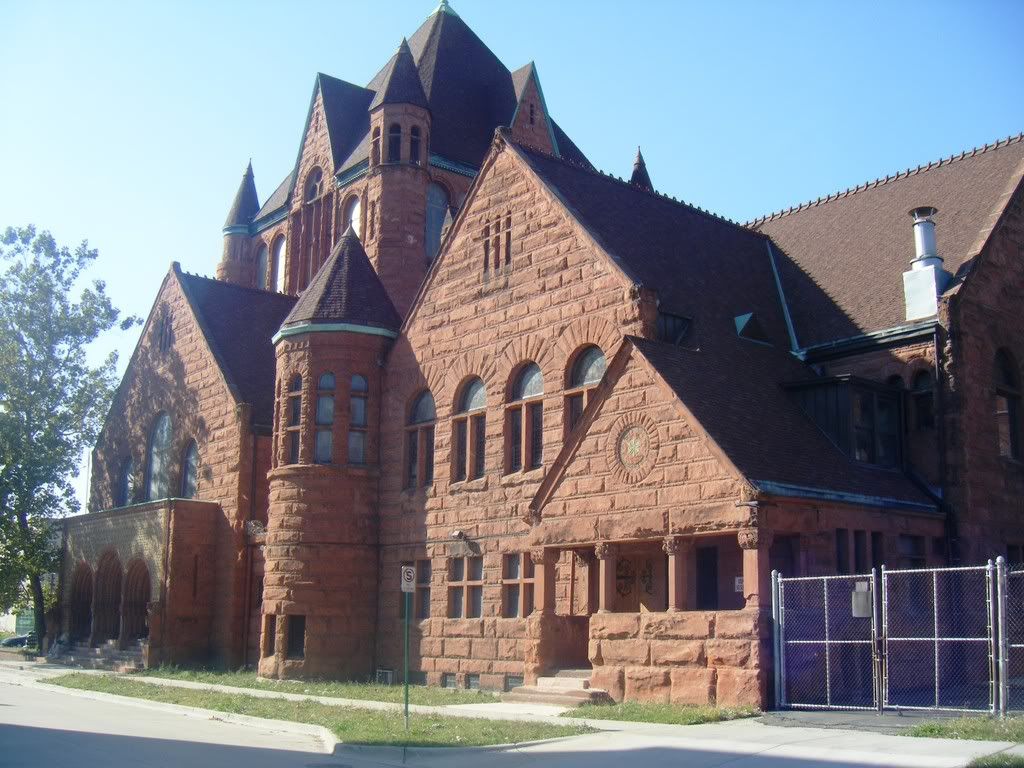
 Ecumenical Theological Seminary
Ecumenical Theological Seminary
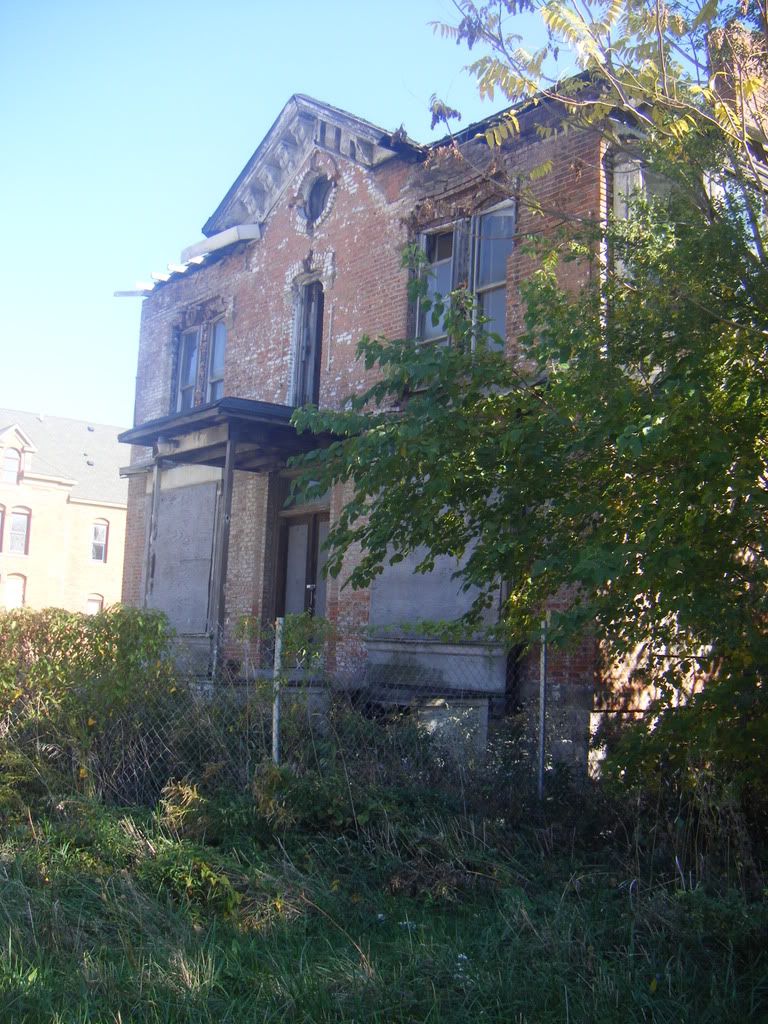
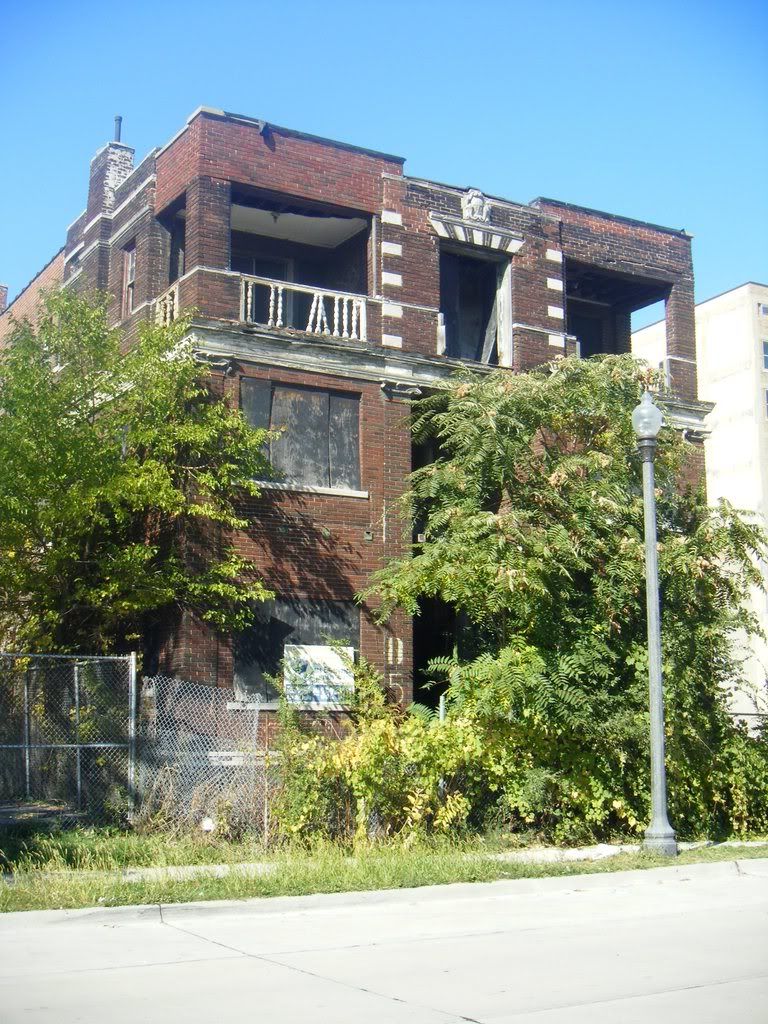
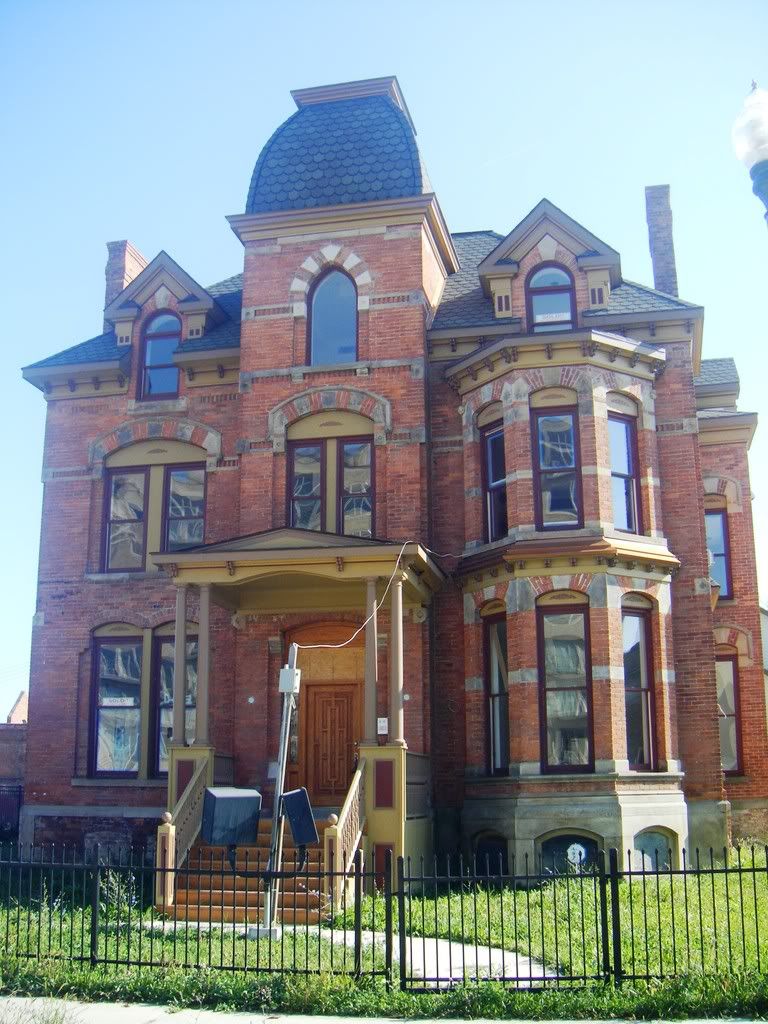
John R Street
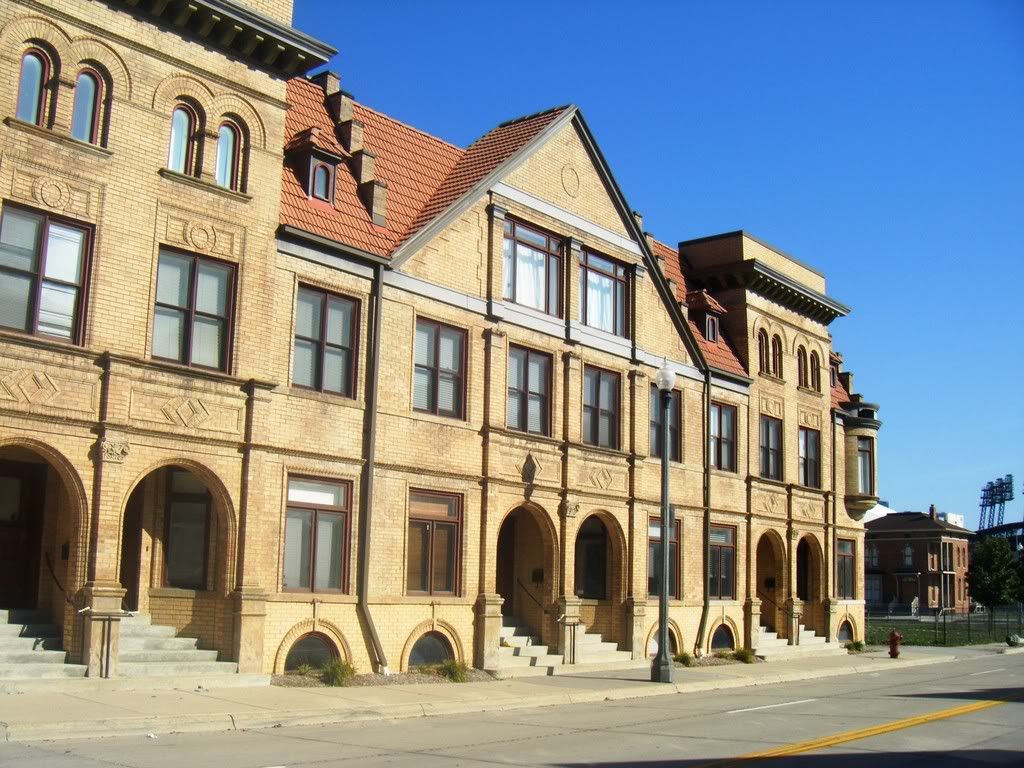
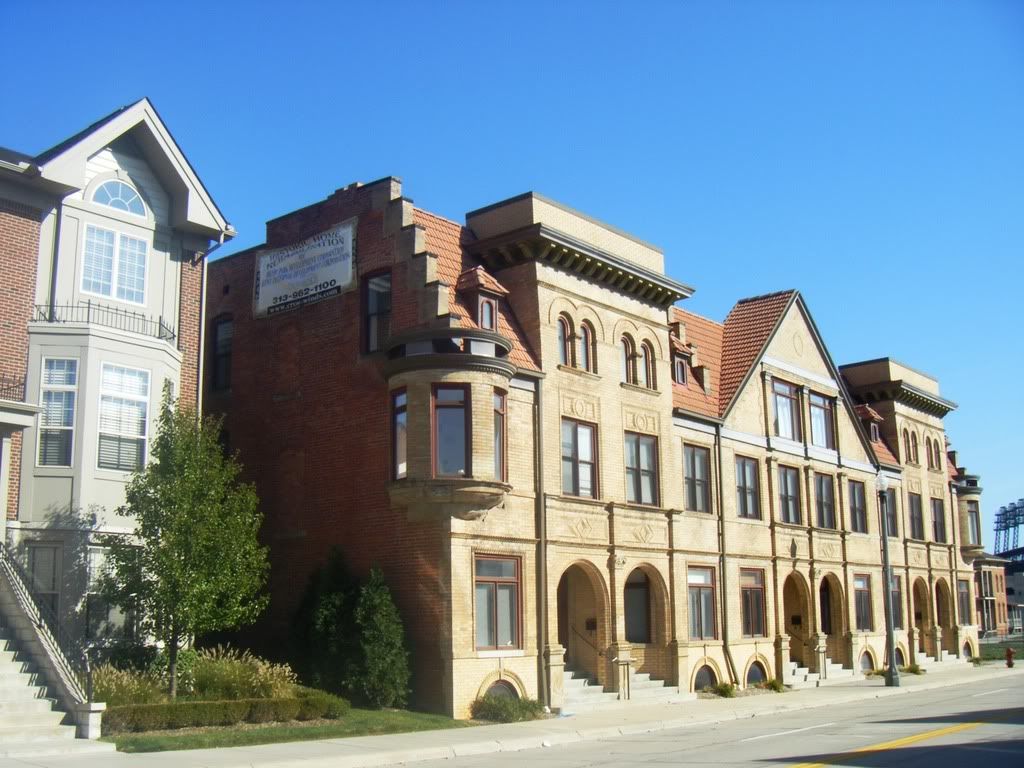
Adelaide Street

John R Street

Final set from Downtown
Ren Center
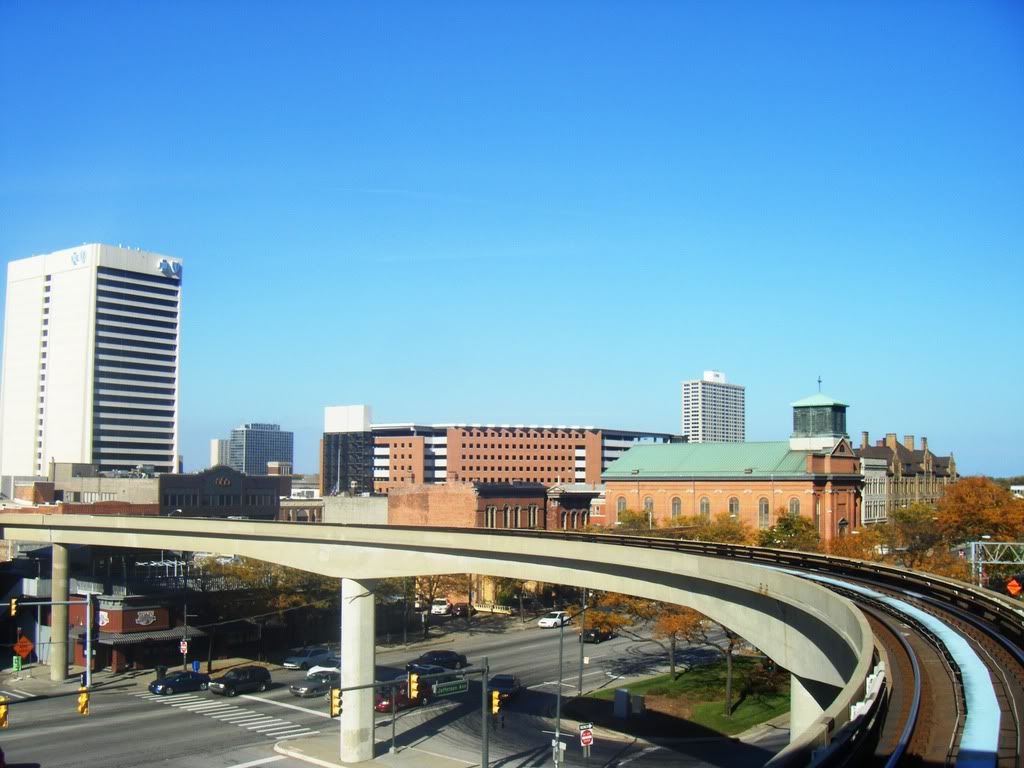

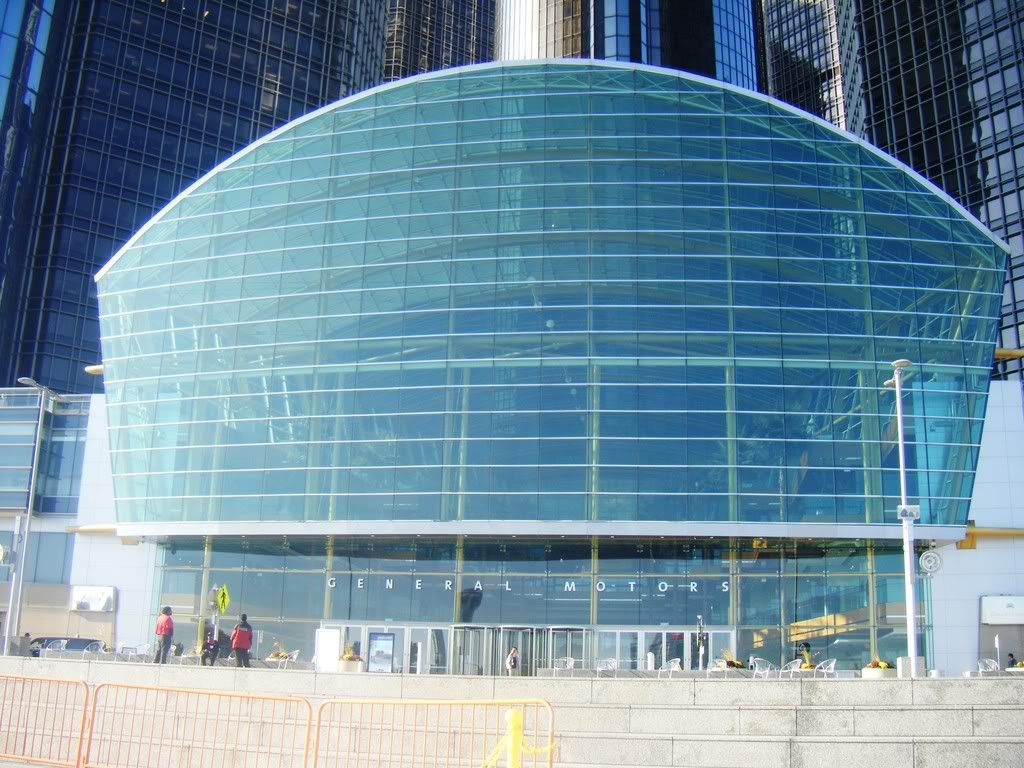
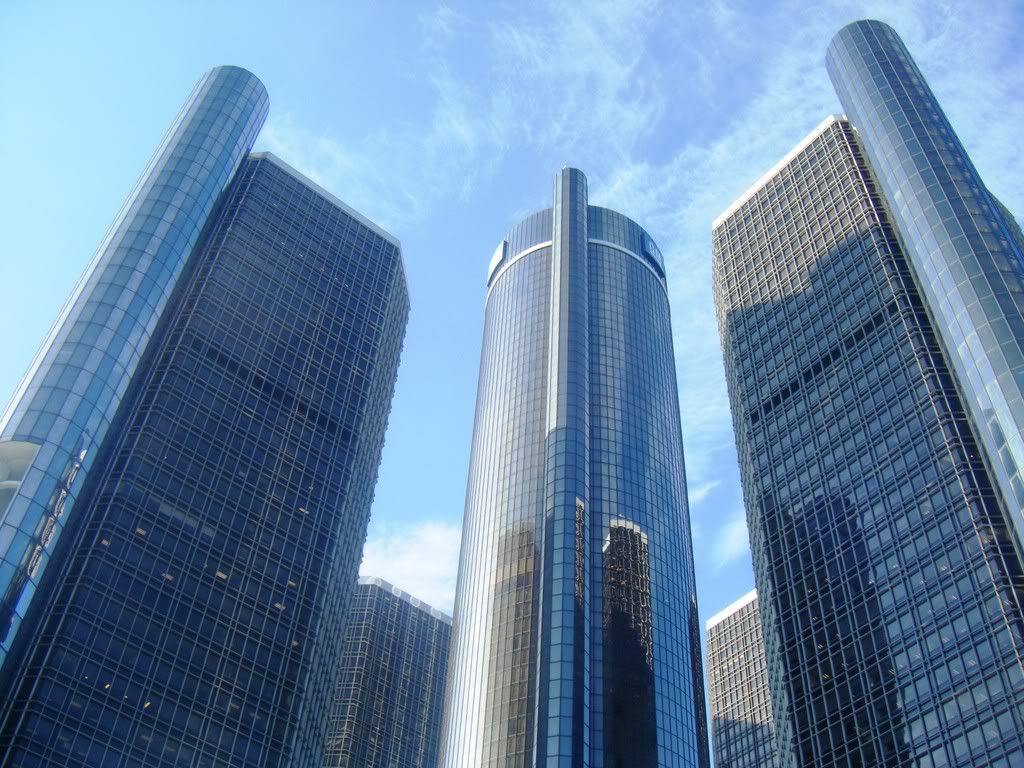


Looking across the River to Canada
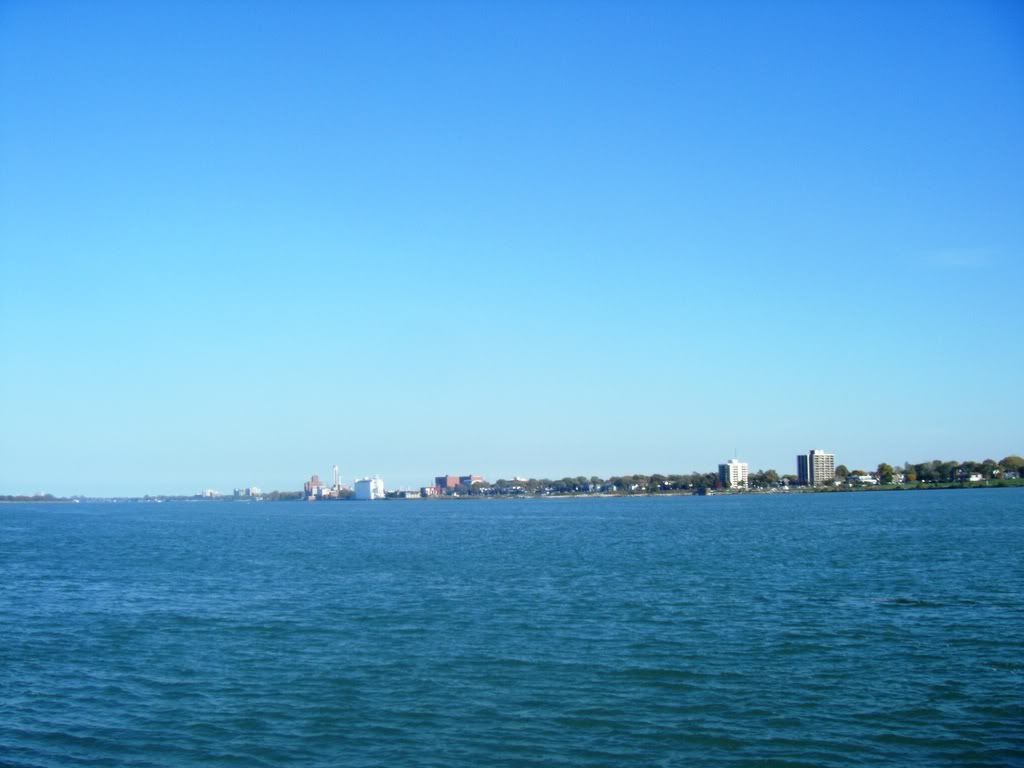
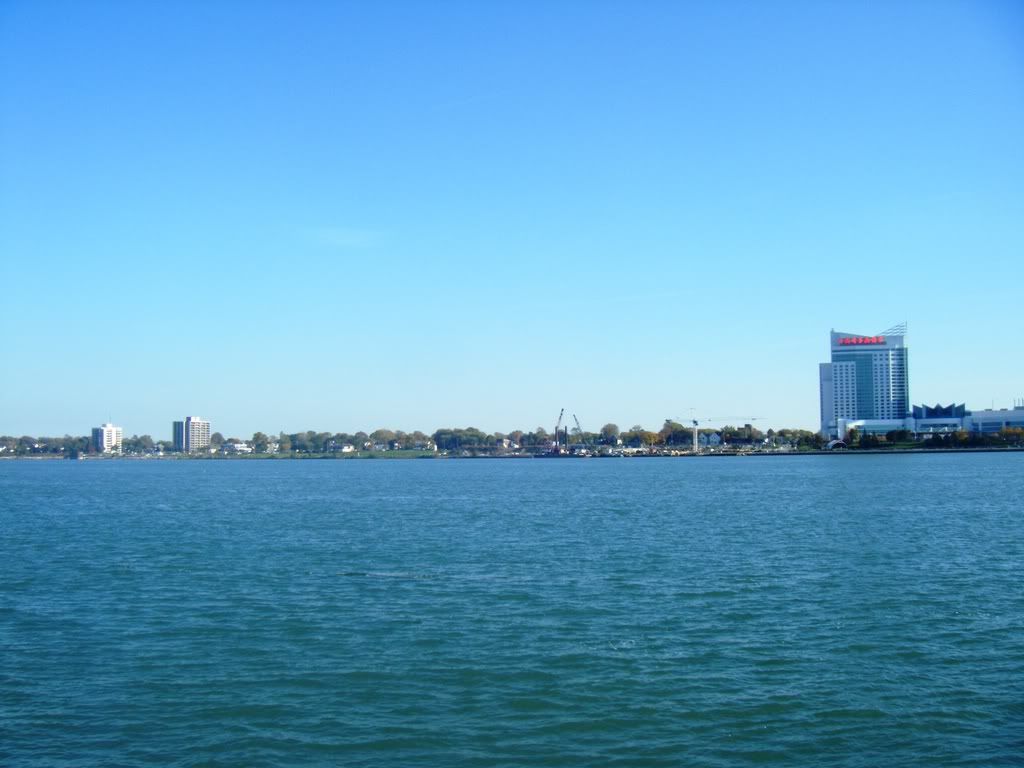

Capital Square




Boston-Edison
The Boston-Edison Historic District is a historic neighborhood located in the geographic center of Detroit, Michigan. It consists of over 900 homes built on four east/west streets: West Boston Boulevard, Chicago Boulevard, Longfellow Avenue, and Edison Avenue, stretching from Woodward Avenue on the east to Linwood Avenue on the west. It is one of the largest residential historic districts in the nation. It is surrounded by Sacred Heart Major Seminary to the west, the Arden Park-East Boston Historic District and the Cathedral of the Most Blessed Sacrament to the east, and the Atkinson Avenue Historic District to the south. The district was designated a Michigan State Historic Site in 1973 and listed on the National Register of Historic Places in 1975.
Description
Boston-Edison remains a fashionable community. An substantial number of prominent Detroiters live in the neighborhood. Notable residents have included labor leader Walter P. Reuther, Rabbi Morris Adler, Detroit Tigers Harry Heilmann and Dizzy Trout, Michigan Supreme Court justices Franz C. Kuhn and Henry Butzel, U.S. Representative Vincent M. Brennan, and Michigan governor Harry Kelly. Other notable residents of the neighborhood have included boxer Joe Louis, druggist Sidney Barthwell, Congressman Charles C. Diggs, Jr., Motown record label owner Berry Gordy, Detroit Tiger Willie Horton, and dentist and pioneering WCHB radio station owner Wendell F. Cox.
The District boasts the oldest continuous neighborhood association in the City, the Historic Boston-Edison Association, which was founded in 1921. The District received historic designation from the Michigan State Historic Preservation Office in 1973, the Detroit Historic District Commission in 1974, and the National Register of Historic Places in 1975. Census data from 2000 (which includes the surrounding streets of Atkinson, Clairmount, and Glynn Court) show Boston-Edison has both African-American and white residents. The homes are owned by people from diverse occupations and professions.
Original residents
One of the earliest residents of the Boston-Edison neighborhood, Henry Ford, was also one of the most well-known. In 1907, Ford had a brick and limestone Italian Renaissance Revival residence built at the corner of Edison and Second for a cost $483,253. Henry and his wife, Clara, moved in the next year, living in the neighborhood until 1915, when they relocated to Fair Lane, their estate in Dearborn. During the time that Ford lived in Boston-Edison, his introduction of the Model T, mass production methods, and wage-price theories revolutionized American industry. Above the garage (behind the house), Henry built a machine shop for his son Edsel to support and encourage Edsel's interest in automobile design. A State of Michigan Historical Marker, describing the history and significance of the home, is located on the front lawn.
Henry Ford was only the first of many automotive pioneers to live in the Boston-Edison community. Ford's early business partners and Ford Motor Company stockholders James Couzens and Horace Rackham also built homes near Ford's in Boston-Edison. (Two other Ford stockholders, John Dodge, and Alexander Y. Malcomson, lived in the adjoining Arden Park-East Boston neighborhood.) They were followed by other early and important Ford collaborators such as Peter E. Martin, C. Harold Wills, and Clarence W. Avery. In addition, other early automobile pioneers such as Walter Briggs, Sr. of Briggs Manufacturing Co, four of the Fisher brothers (of Fisher Body), Charles Lambert of Regal Motor Car Co., John W. Drake of Hupp Motor Car Co., and William E. Metzger of Cadillac and E-M-F likewise built homes in Boston-Edison.
Other prominent Detroit businessmen lived in Boston-Edison during the early years of the neighborhood, including Sebastian S. Kresge (founder of the S.S. Kresge Company—later Kmart), Benjamin Siegel (founder of a major early clothing store), and J. L. Webber (nephew of J. L. Hudson). Other notable early residents included conductor Ossip Gabrilowitsch and his wife Clara Clemens, Detroit Tigers owner Frank Navin, Detroit Tigers player Ty Cobb (on nearby Atkinson Avenue at Third), historian Clarence M. Burton, and Rabbi Leo M. Franklin.
During the early history of Boston-Edison, four factors influenced the character of the community. First was a tendency for employees and business associates to live in a cluster, as early associates of Henry Ford did. In addition, six employees of S.S. Kresge lived in the neighborhood. Secondly, was the tendency of several family members to live in close range. In addition to the four Fisher brothers (a fifth brother, Frederic, lived in the adjacent Arden Park-East Boston neighborhood), a number of Benjamin Siegel's relatives lived in the neighborhood, as did a number of Wagner family members (owners of Wagner's bakery). A third factor was the construction of Henry Ford Hospital in 1915, only a mile south of the neighborhood. Twenty-three physicians built homes in Boston-Edison.
History
The land now within the boundaries of Boston-Edison was first owned by John R. Williams (who was granted a single parcel in 1822) and Thomas Palmer (who was granted three parcels in 1828 and 1832). These original four grants were transferred from owner to owner over the next fifty years until they were obtained by the Joy family, the Newberry family, and Edward W. Voigt.
In 1891, Voigt, foreseeing the growth of Detroit northward, platted out the Voigt Park subdivision, consisting of seven east/west streets between Woodward and Hamilton—those being Calvert Avenue, Glynn Court, Schiller Esplanade, Shakespeare Esplanade, Longfellow Avenue, Edison Avenue, and Atkinson Avenue. Four of these streets—Schiller Esplanade (now Boston Boulevard), Shakespeare Esplanade (now Chicago Boulevard), Longfellow Avenue, and Edison Avenue—formed the Boston-Edison neighborhood. The location of the neighborhood park, originally to have been between Chicago and Boston Boulevards, was later changed to be situated between Longfellow and Edison Avenues.
Voigt Park subdivision was immediately incorporated into the City of Detroit. Voigt platted spacious lots and set building restrictions that established the unique character of the neighborhood. His vision was followed by Truman and John Newberry, who platted the West Boston Boulevard Subdivision between Hamilton and 12th Street (now "Rosa Parks Boulevard") in 1913. The subdivision included lots on West Boston, Chicago, Longfellow, and Edison, as well as on Atkinson to the south. In 1915, Henry B. Joy platted the Joy Farms Subdivision between 12th Street and Linwood. This subdivision included lots on the same seven streets originally platted by Voigt. Both of these subdivisions were annexed by the City of Detroit in 1915.
The first homes built in the Boston-Edison Historic District were occupied in 1905, with the majority of the homes built between 1905 and 1925. Each of the homes in the neighborhood is unique. Architectural styles represented include English Tudor revival, Roman and Greek Revival, French Provincial, Colonial Revival, Italian Renaissance, Prairie Style, and Vernacular. These homes range in size from modest two-story vernaculars to massive mansions set on sprawling grounds. Although the homes are unique in style, homes along the streetscape are generally uniform in roofline, scale, setback from the street, and in the use of stone, brick or wood construction. This uniformity creates a gracious suburban ambiance.
Henry Food Home

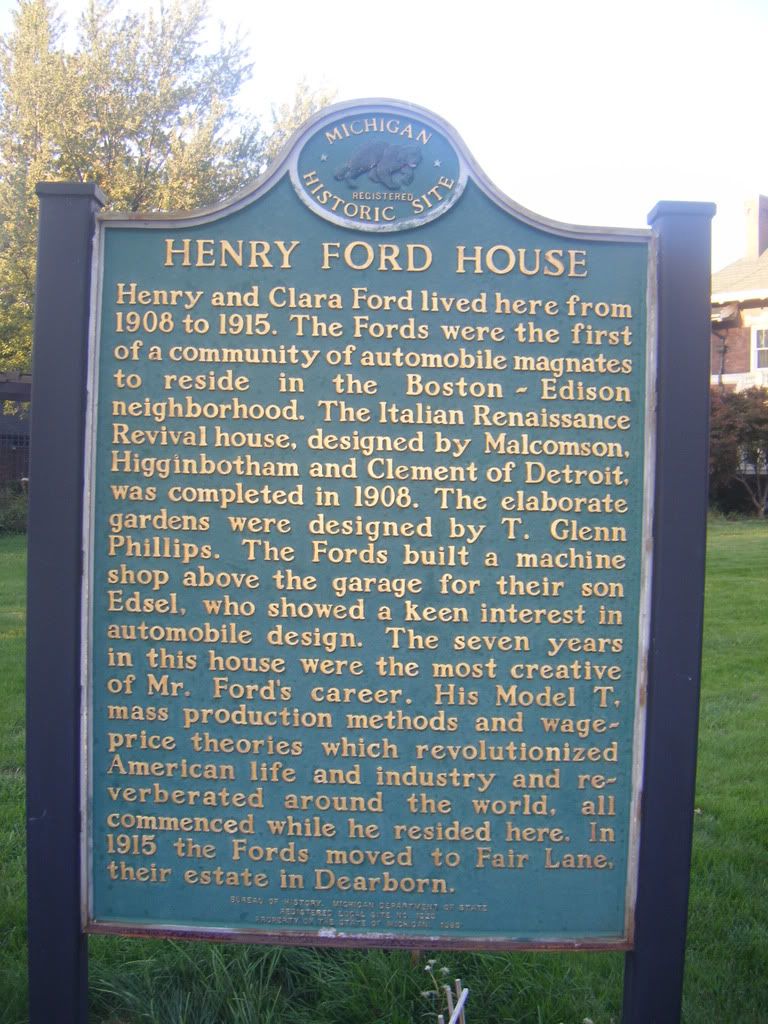
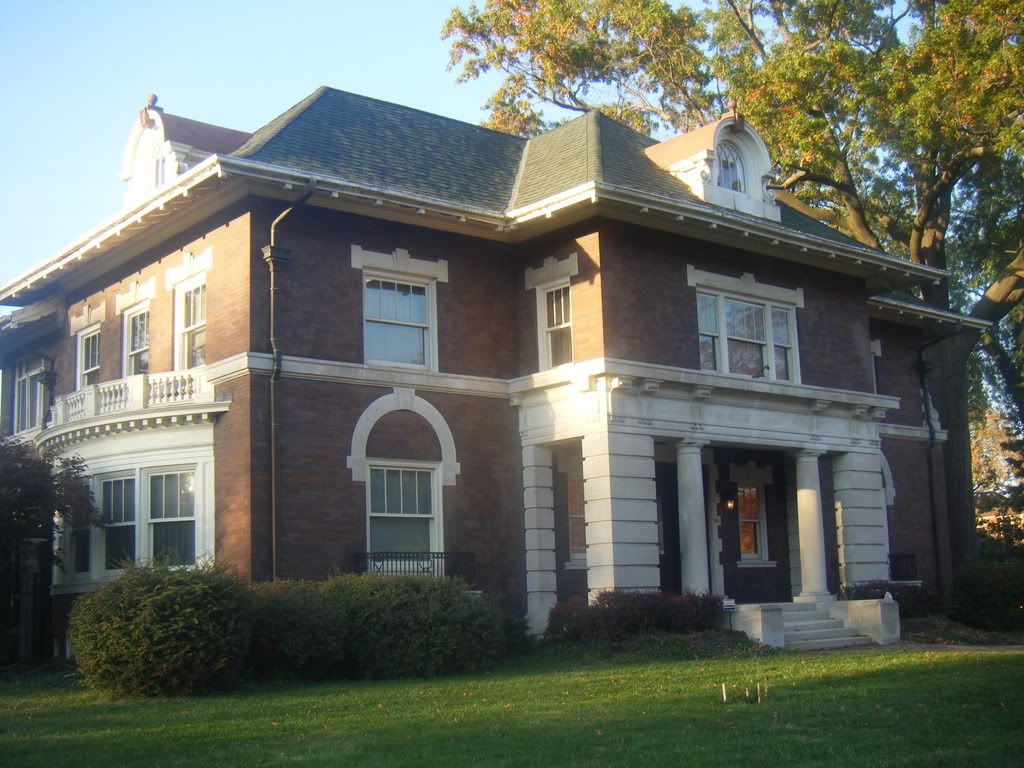
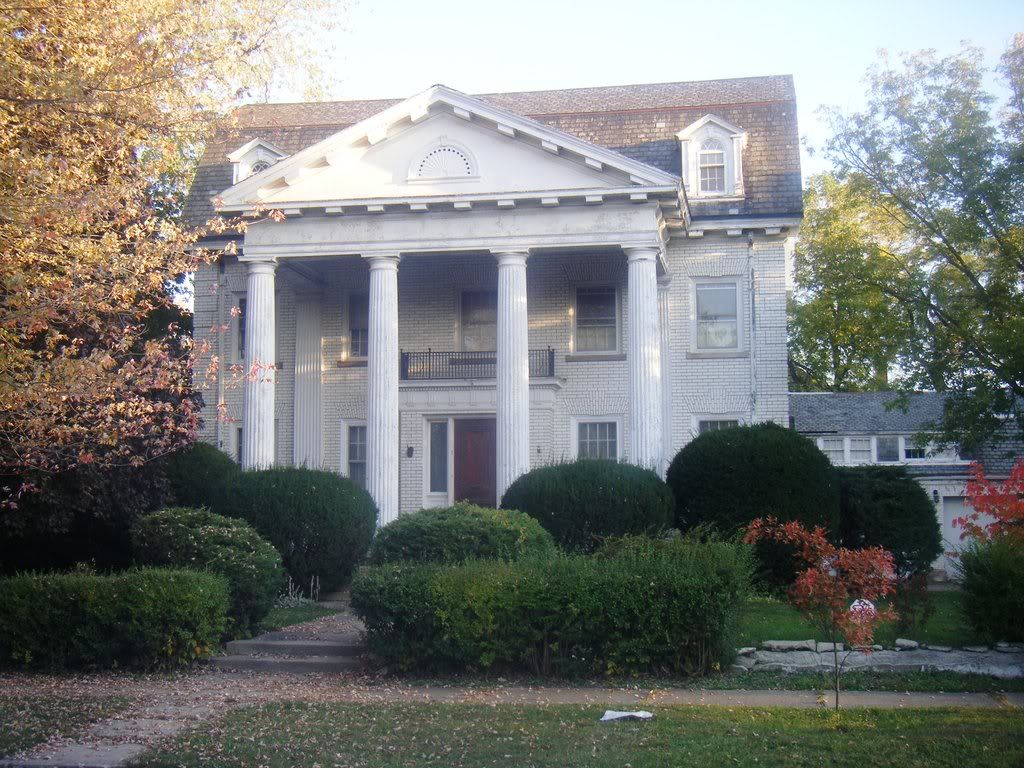

Метки:
detroit
usa
city
Old Civic Center off of Woodward Avenue.










 Looking towards Woodward Avenue
Looking towards Woodward Avenue

Henry Ford's Model T Factory on Woodward Avenue






New Center, West Grand Avenue





















Woodward Avenue








West Ferry Street.






Back to Woodward Avenue










 Library
Library 








Belle Isle. Part One
Belle Isle is a 982 acre (3.9 km²; 1.53 mi²) island park in the Detroit River managed by the Detroit Recreation Department. It is connected to the rest of the city by the MacArthur Bridge. It is the largest island park in the United States and the third largest island in the Detroit River after Grosse Ile and Fighting Island.
It is home to the Anna Scripps Whitcomb Conservatory (1904), the Detroit Yacht Club, the Detroit Boat Club, James Scott Memorial Fountain, the Dossin Great Lakes Museum, a Coast Guard post, and a municipal golf course. The city maintains a Nature Center where visitors are able to traverse wooded trails and view wildlife natural habitats. The island includes a half-mile (800 m) swimming beach.
History
The island was settled by French colonists in the 18th century, who named it Île aux Cochons (Hog Island). The Island was once the estate of General Alexander Macomb, Jr., whose monument stands in the Washington Boulevard Historic District. In 1845 it was given its present name.
A design for the island was created in the 1880s by Frederick Law Olmsted, a prominent urban park designer; only some elements of his design were carried out. The 1908 Belle Isle Casino building is not an actual gambling facility but rather, is used for occasional public events. A highlight of Belle Isle is a beautiful botanical garden and the Anna Scripps Whitcomb Conservatory (1904). Both the conservatory and the adjacent aquarium were designed by Detroit architect Albert Kahn, who designed city landmarks such as Cadillac Place and the Ford Rouge Factory.
Interior waterways in the park as they appeared soon after the park's creationThe island park served as a staging ground by the U.S. military during World War II for a re-enactment of a Pacific island invasion by the Navy and Marine Corps. The island was temporarily renamed Bella Jima, and Detroiters were treated to the sight of an island invasion without the bloodshed. It was conducted after the invasion of Iwo Jima.
Architect Cass Gilbert designed Belle Isle's James Scott Memorial Fountain. Gilbert's other works include the U. S. Supreme Court building in Washington, DC. William Livingstone Memorial Light, the only marble lighthouse in the United States, is on the east end of the island, with sumptuous materials and architecture. Additional recreational options include a nature center, wheelchair accessible nature trail, fishing piers, playgrounds, picnic shelters, and handball, tennis and basketball courts, baseball fields, and even a cricket pitch.
There was a canoe concession (which provided rental canoes and stored private ones) and a band shell, and canoe riders often stopped nearby to enjoy the concert. Concerts occurred at the band shell from 1950 to 1980. The Detroit Boat Club moved to the island in 1902 but the marina and building is currently closed and only rowing activities still occur at that location. The Belle Isle Golf Course opened in 1922. The Detroit Yacht Club building dates to 1923 and still houses an active private sailing club. The Scott Fountain was finished in 1925. The Activities Building was the site of a restaurant. The Flynn Pavilion (1949) was designed by Eero Saarinen and used for ice skating rental. A ferry service to the island existed from 1840-1957, although the bridge was completed to the island in 1923. Riding stables were housed in a 1863 market building that was relocated from Detroit to the island in the 1890s. The building was disassembled and stored by Greenfield Village in the 2000s. The park headquarters and police station are each located in 1860s houses.
The island was home to a large herd of European fallow deer for more than 50 years. However, this isolated population fell prey to disease at the close of the 20th century. The children's zoo on the island and the aquarium closed due to budget constraints. In 2004, the last of the 300 animals were captured and moved to the zoo and nature center properties.
Detroit Indy Grand Prix
In 1992, a temporary street race circuit was constructed on the isle for CART races. The island hosted ten events at Belle Isle from 1992–2001, and racing resumed in 2007 as part of the IndyCar Series and ALMS.
http://en.wikipedia.org/wiki/Belle_Isle_Park

 James Scott Fountain
James Scott Fountain 

 James Scott
James Scott
Detroit Boat Club








Poor Mr. Scott, I'm sure he'd roll over in his grave if he know what had become of his beautiful home!
Peterboro Street.



More Downtown.
We begin back at Cadillac Square.


Campus Martius







 Looking down Fort Street
Looking down Fort StreetWalking down Woodward Avenue.





Walking up and down Griswold Street.







 Intersection of Griswold Street, Michigan Avenue, and Lafayette Blvd
Intersection of Griswold Street, Michigan Avenue, and Lafayette Blvd 

 Looking down Griswold towards the Detroit River.
Looking down Griswold towards the Detroit River.


 Fort Street
Fort StreetGriswold Street







 West Congress Street
West Congress Street
Inside the Gaurdian building














Congress Street


 Intersection of Congress and Shelby Street. I LOVE this building!
Intersection of Congress and Shelby Street. I LOVE this building!

Walking up Shelby









 This was my FB pic for awhile!
This was my FB pic for awhile!








Back to Woodward





Thanks for stopping by everyone. I greatly appreciate it! This will be the last big set of Downtown photos. Next stop, Brush Park!

Campus Martius/ John F. Kennedy Square








Cadillac Square




Wayne County building






 Cadillac Square Apartments! I could live there!
Cadillac Square Apartments! I could live there!



Heading down Woodward Avenue to Brush Park.

Brush Park
Brush Park Historic District is a 24 block neighborhood located within Midtown Detroit, Michigan and designated by the city. It is bounded by Mack on the north, Woodward Avenue on the west, Beaubien on the east, and the Fisher freeway on the south. The neighborhood is experiencing restorations of its historic Gilded Age Victorian style homes and luring new residents.
Woodward East Historic District
The Woodward East Historic District is a smaller historic district, recognized by the National Register of Historic Places, which is completely encompassed by the larger Brush Park neighborhood. The Woodward East Historic District is located on Alfred, Edmund, and Watson Streets from Brush Street to John R Street in Detroit, Michigan. Woodward East is particularly known for the High Victorian style residences constructed Detroit's wealthiest citizens. Although many of the once-grand houses have been demolished in recent years, those remaining exhibit a variety of Victorian style subtypes and architectural details, including Second Empire slate Mansard roofs, Romanesque columns and classical dentiled cornices.
Beginning in the 1850s, entrepreneur Edmund Brush, son of the city's second mayor from its first incorporation, began developing his family's property, located conveniently close to downtown, into a neighborhood for Detroit's elite citizens. Homes were built in Brush Park beginning in the 1850s and peaking in the 1870s and 1880s; one of the last homes built was constructed in 1906 by architect Albert Kahn for his personal use. Kahn lived in this home until his death in 1942, after which it was obtained by the Detroit Urban League, which still uses it today. Other early residents of Brush Park included lumber baron David Whitney Jr., his daughter Grace Whitney Evans, Joseph L. Hudson, founder of the eponymous department store, lumber baron Lucien Moore, banker Frederick Butler, merchant John P. Fiske, Dime Savings Bank founder William Livingston, and dry goods manufacturer Ransom Gillis. In the late 19th century, the Brush Park neighborhood became known as the "Little Paris of the Midwest."
William Livingstone House on Eliot Street, constructed in 1893, was among the oldest historic properties that had fallen into decay; it was demolished September 15, 2007. Architects who designed these mansions included Henry T. Brush, George D. Mason, George W. Nettleton, and Albert Kahn. The French Renaissance style William Livingston House (1892–93) at 294 Elliot was Albert Kahn's first commission. Livingston founded the Dime Savings Bank. Artist Lowell Bioleau commorated the William Livingston House in a painting entitled Open House which he unveiled the day of its demolition September 15, 2007, underscoring preservationist efforts. As of 2001, about 154 original structures remained in the area. During the 19th century, around 300 homes were built in Brush Park, including 70 Victorian mansions. However, the neighborhood began to decline in the late 19th and early 20th century, when the advent of streetcars and then automobiles allowed prosperous citizens to live further from downtown. Early residents moved out, notably to up-and-coming neighborhoods such as Indian Village and Boston-Edison, and the neighborhood became less fashionable. During the Great Depression, many of the older mansions were subdivided into apartments, and as houses aged in the post World War II era, some became unoccupied and fell into disrepair.
Brush Park's revival began in the 1990s and has accelerated recently. A number of the older mansions have been restored, and more have been stabilized. In addition, new condominiums have been built in the southern part of Brush Park, near the Fisher Freeway. Brush Park Historic District's general boundaries are Woodward Avenue, Mack, Beaubien, and the Fisher Freeway.
Almund Place

 Originally owned by lumber baron Lucien Moore, 104 Edmund Place, a French Renaissance Gothic Revival style mansion restored in 2006, has 7,000 sq ft (650 m2). The Lucien Moore House restoration was featured December 27, 2005 by HGTV's restore America Initiative in partnership with the National Trust for Historic Preservation
Originally owned by lumber baron Lucien Moore, 104 Edmund Place, a French Renaissance Gothic Revival style mansion restored in 2006, has 7,000 sq ft (650 m2). The Lucien Moore House restoration was featured December 27, 2005 by HGTV's restore America Initiative in partnership with the National Trust for Historic PreservationJohn R Street

Almund Place




 Left to Right. John P. Fiske, was a Detroit merchant of china and crockery. The house is within the Woodward East Historic District. Originally owned by George Ladve, 269 Edmund Pl., an Eastlake Victorian style mansion built in 1882 and restored in 2008, contains 7,400 sq ft (690 m2). Ladve had owned a carpet and upholstery company. In the late 1890s, the Frohlich family added a music room. Frohlich was among the original philanthropists to the Detroit Symphony Orchestra. Built in 1882, the Frederick Butler House at 291 Edmund Place is a French Renaissance Second Empire style mansion with a Mansard roof which was restored in 2006 and contains 8,400 sq ft (780 m2). It is located near Edmund Pl. and Brush St. within the Woodward East Historic District. The original ownwer, Frederick Butler was a banker.
Left to Right. John P. Fiske, was a Detroit merchant of china and crockery. The house is within the Woodward East Historic District. Originally owned by George Ladve, 269 Edmund Pl., an Eastlake Victorian style mansion built in 1882 and restored in 2008, contains 7,400 sq ft (690 m2). Ladve had owned a carpet and upholstery company. In the late 1890s, the Frohlich family added a music room. Frohlich was among the original philanthropists to the Detroit Symphony Orchestra. Built in 1882, the Frederick Butler House at 291 Edmund Place is a French Renaissance Second Empire style mansion with a Mansard roof which was restored in 2006 and contains 8,400 sq ft (780 m2). It is located near Edmund Pl. and Brush St. within the Woodward East Historic District. The original ownwer, Frederick Butler was a banker. 



Alfred Street






 Also known as the Joseph Lothian Hudson House or the Grace Whitney Evans House. The house was a gift from David Whitney Jr. to his daughter Grace upon her marriage to John Evans in 1872. It later became the J.L. Hudson family residence. Listed on the National Register of Historic Places
Also known as the Joseph Lothian Hudson House or the Grace Whitney Evans House. The house was a gift from David Whitney Jr. to his daughter Grace upon her marriage to John Evans in 1872. It later became the J.L. Hudson family residence. Listed on the National Register of Historic Places
 The French Renaissance, Second Empire style, Elisha Taylor House with its mansard roof was built for William H. Craig, a Detroit land speculator. In 1875, Craig sold the house to attorney Elisha Taylor. Taylor was a Detroit attorney who held many offices during his career, including City Attorney, assistant Michigan Attorney General from 1837 to 1841, and Circuit Court Commissioner from 1846 to 1854. The house is listed on the National Register of Historic Places.
The French Renaissance, Second Empire style, Elisha Taylor House with its mansard roof was built for William H. Craig, a Detroit land speculator. In 1875, Craig sold the house to attorney Elisha Taylor. Taylor was a Detroit attorney who held many offices during his career, including City Attorney, assistant Michigan Attorney General from 1837 to 1841, and Circuit Court Commissioner from 1846 to 1854. The house is listed on the National Register of Historic Places. 
Woodward Avenue



 First Unitarian Church of Detroit
First Unitarian Church of DetroitEdmund Place

 Ecumenical Theological Seminary
Ecumenical Theological Seminary


John R Street


Adelaide Street

John R Street

Final set from Downtown
Ren Center






Looking across the River to Canada



Capital Square




Boston-Edison
The Boston-Edison Historic District is a historic neighborhood located in the geographic center of Detroit, Michigan. It consists of over 900 homes built on four east/west streets: West Boston Boulevard, Chicago Boulevard, Longfellow Avenue, and Edison Avenue, stretching from Woodward Avenue on the east to Linwood Avenue on the west. It is one of the largest residential historic districts in the nation. It is surrounded by Sacred Heart Major Seminary to the west, the Arden Park-East Boston Historic District and the Cathedral of the Most Blessed Sacrament to the east, and the Atkinson Avenue Historic District to the south. The district was designated a Michigan State Historic Site in 1973 and listed on the National Register of Historic Places in 1975.
Description
Boston-Edison remains a fashionable community. An substantial number of prominent Detroiters live in the neighborhood. Notable residents have included labor leader Walter P. Reuther, Rabbi Morris Adler, Detroit Tigers Harry Heilmann and Dizzy Trout, Michigan Supreme Court justices Franz C. Kuhn and Henry Butzel, U.S. Representative Vincent M. Brennan, and Michigan governor Harry Kelly. Other notable residents of the neighborhood have included boxer Joe Louis, druggist Sidney Barthwell, Congressman Charles C. Diggs, Jr., Motown record label owner Berry Gordy, Detroit Tiger Willie Horton, and dentist and pioneering WCHB radio station owner Wendell F. Cox.
The District boasts the oldest continuous neighborhood association in the City, the Historic Boston-Edison Association, which was founded in 1921. The District received historic designation from the Michigan State Historic Preservation Office in 1973, the Detroit Historic District Commission in 1974, and the National Register of Historic Places in 1975. Census data from 2000 (which includes the surrounding streets of Atkinson, Clairmount, and Glynn Court) show Boston-Edison has both African-American and white residents. The homes are owned by people from diverse occupations and professions.
Original residents
One of the earliest residents of the Boston-Edison neighborhood, Henry Ford, was also one of the most well-known. In 1907, Ford had a brick and limestone Italian Renaissance Revival residence built at the corner of Edison and Second for a cost $483,253. Henry and his wife, Clara, moved in the next year, living in the neighborhood until 1915, when they relocated to Fair Lane, their estate in Dearborn. During the time that Ford lived in Boston-Edison, his introduction of the Model T, mass production methods, and wage-price theories revolutionized American industry. Above the garage (behind the house), Henry built a machine shop for his son Edsel to support and encourage Edsel's interest in automobile design. A State of Michigan Historical Marker, describing the history and significance of the home, is located on the front lawn.
Henry Ford was only the first of many automotive pioneers to live in the Boston-Edison community. Ford's early business partners and Ford Motor Company stockholders James Couzens and Horace Rackham also built homes near Ford's in Boston-Edison. (Two other Ford stockholders, John Dodge, and Alexander Y. Malcomson, lived in the adjoining Arden Park-East Boston neighborhood.) They were followed by other early and important Ford collaborators such as Peter E. Martin, C. Harold Wills, and Clarence W. Avery. In addition, other early automobile pioneers such as Walter Briggs, Sr. of Briggs Manufacturing Co, four of the Fisher brothers (of Fisher Body), Charles Lambert of Regal Motor Car Co., John W. Drake of Hupp Motor Car Co., and William E. Metzger of Cadillac and E-M-F likewise built homes in Boston-Edison.
Other prominent Detroit businessmen lived in Boston-Edison during the early years of the neighborhood, including Sebastian S. Kresge (founder of the S.S. Kresge Company—later Kmart), Benjamin Siegel (founder of a major early clothing store), and J. L. Webber (nephew of J. L. Hudson). Other notable early residents included conductor Ossip Gabrilowitsch and his wife Clara Clemens, Detroit Tigers owner Frank Navin, Detroit Tigers player Ty Cobb (on nearby Atkinson Avenue at Third), historian Clarence M. Burton, and Rabbi Leo M. Franklin.
During the early history of Boston-Edison, four factors influenced the character of the community. First was a tendency for employees and business associates to live in a cluster, as early associates of Henry Ford did. In addition, six employees of S.S. Kresge lived in the neighborhood. Secondly, was the tendency of several family members to live in close range. In addition to the four Fisher brothers (a fifth brother, Frederic, lived in the adjacent Arden Park-East Boston neighborhood), a number of Benjamin Siegel's relatives lived in the neighborhood, as did a number of Wagner family members (owners of Wagner's bakery). A third factor was the construction of Henry Ford Hospital in 1915, only a mile south of the neighborhood. Twenty-three physicians built homes in Boston-Edison.
History
The land now within the boundaries of Boston-Edison was first owned by John R. Williams (who was granted a single parcel in 1822) and Thomas Palmer (who was granted three parcels in 1828 and 1832). These original four grants were transferred from owner to owner over the next fifty years until they were obtained by the Joy family, the Newberry family, and Edward W. Voigt.
In 1891, Voigt, foreseeing the growth of Detroit northward, platted out the Voigt Park subdivision, consisting of seven east/west streets between Woodward and Hamilton—those being Calvert Avenue, Glynn Court, Schiller Esplanade, Shakespeare Esplanade, Longfellow Avenue, Edison Avenue, and Atkinson Avenue. Four of these streets—Schiller Esplanade (now Boston Boulevard), Shakespeare Esplanade (now Chicago Boulevard), Longfellow Avenue, and Edison Avenue—formed the Boston-Edison neighborhood. The location of the neighborhood park, originally to have been between Chicago and Boston Boulevards, was later changed to be situated between Longfellow and Edison Avenues.
Voigt Park subdivision was immediately incorporated into the City of Detroit. Voigt platted spacious lots and set building restrictions that established the unique character of the neighborhood. His vision was followed by Truman and John Newberry, who platted the West Boston Boulevard Subdivision between Hamilton and 12th Street (now "Rosa Parks Boulevard") in 1913. The subdivision included lots on West Boston, Chicago, Longfellow, and Edison, as well as on Atkinson to the south. In 1915, Henry B. Joy platted the Joy Farms Subdivision between 12th Street and Linwood. This subdivision included lots on the same seven streets originally platted by Voigt. Both of these subdivisions were annexed by the City of Detroit in 1915.
The first homes built in the Boston-Edison Historic District were occupied in 1905, with the majority of the homes built between 1905 and 1925. Each of the homes in the neighborhood is unique. Architectural styles represented include English Tudor revival, Roman and Greek Revival, French Provincial, Colonial Revival, Italian Renaissance, Prairie Style, and Vernacular. These homes range in size from modest two-story vernaculars to massive mansions set on sprawling grounds. Although the homes are unique in style, homes along the streetscape are generally uniform in roofline, scale, setback from the street, and in the use of stone, brick or wood construction. This uniformity creates a gracious suburban ambiance.
Henry Food Home





Алекс.. ты всегда знаешь как меня порадовать-))
вот кажется ничего особенного.. но все нАСТОЛЬКО по-другому.
и мне всегда было интересно как американцы дороги делают))
вот кажется ничего особенного.. но все нАСТОЛЬКО по-другому.
и мне всегда было интересно как американцы дороги делают))
Понедельник, 06 Декабря 2010 г. 22:19ссылка
Да производит впечатление , парень гулял и фоткал то что ему понравилось. шаг за шагом.
А про дороги , это что прямо труд заключенных или специальный репортаж про асфальтоукладчики.
давай уж лучше придумаем карту нью-йоркского метро.
А про дороги , это что прямо труд заключенных или специальный репортаж про асфальтоукладчики.
давай уж лучше придумаем карту нью-йоркского метро.
Вторник, 07 Декабря 2010 г. 12:28ссылка
| Комментировать | « Пред. запись — К дневнику — След. запись » | Страницы: [1] [Новые] |

















